Archived Blog Posts
Fire Damage in Your Rental? Who Pays for Apartment Fire Losses?
7/26/2022 (Permalink)
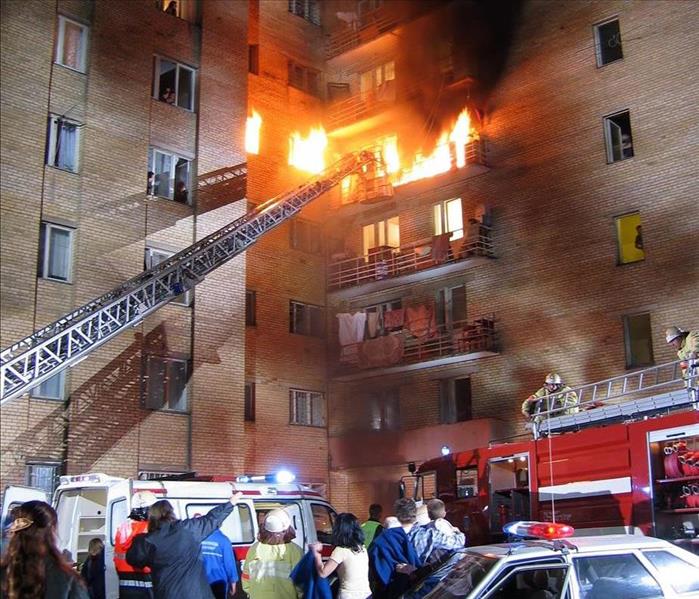 Apartments on fire.
Apartments on fire.
An apartment fire starts and spreads quickly, harming the interior and exterior of your space. Once crews extinguish the blaze, you and your renters in Saint Paul, MN, are left to face the repairs and discuss the losses. Who is in charge of damage? All parties must understand their roles in gaining compensation and restoring the premises.
How To Seek Compensation for Apartment Fire Loss
Rental property claims differ from a standard home policy that handles structural and content loss. In apartment buildings, the roles become divided. The landlord has some obligations; the tenant has some as well. The building falls on the owner's shoulders. The contents belong to the renter. Therefore, there is a line breaking up the payment roles. Read more to learn who is responsible for the financial obligations of the repair process.
What Are the Landlord's Obligations?
When determining who pays for fire damage, it's essential to think of the property in two ways: the structure and personal items. The landlord owns the land, including the building on top. Therefore, it falls on the owner's plate to correctly handle the property. These tasks fall under ownership:
- Opening an insurance claim for fire repairs
- Working with a fire restoration company to assess physical conditions
- Initiating remediation and restoration projects
- Finding a suitable, habitable place for tenants to reside
Fire demands careful attention. The sparks result in multiple factors that require attention, such as water, smoke and odor. It's imperative to fix and test them before permitting people to return. Property insurance claims often cover the cost of rebuilding and cleaning, so owners should diligently work with their insurance agents to discuss policy coverage and how to receive financial compensation.
What Are the Tenant's Obligations?
In an apartment fire, the landlord likely didn't have personal property in the unit. The building's coverage doesn't extend to the tenant's items. Instead, the renters must seek financial aid from their own insurance policy, requesting payment for content damage.
Without renter's insurance, those living there cannot receive payment for lost goods or items. For those with the policy, it's essential to notify the agent, establishing a personal loss claim immediately. The agent assesses the situation and can cut a check. The fire remediation experts should snap pictures of the destruction, including furniture, electronics and personal items. Tenants can submit these images and the crew's report to the insurer to validate the request.
Are There Any Exceptions to These Rules?
Landlords often require tenants to sign a contract mandating certain safety precautions. For instance, renters shouldn't overload circuits or leave candles unattended. When the renters fail to follow those guidelines, the landlord's insurance could find the tenant at fault. Then, the fire cleanup costs turn to the tenant and not the landlord.
Most often, the landlord still files with the building's insurer. The agency pays for the repairs, but the group works with the tenant's party to reclaim the funds.
When your rental property in Saint Paul, MN, suffers an apartment fire, the landlord's responsibility is to provide tenants with a safe place to live and fix the building.
Driving Tips for Flooded Streets
7/20/2022 (Permalink)
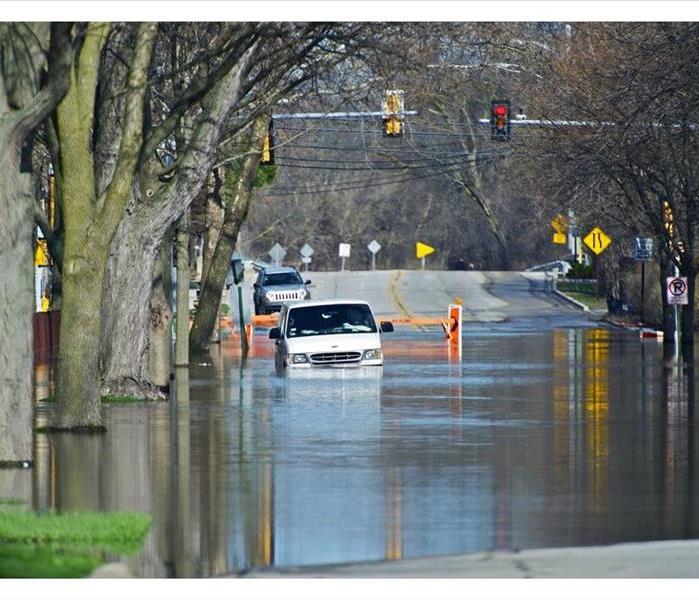 Avoid driving in flooded streets.
Avoid driving in flooded streets.
Because of the risks involved, drivers should avoid driving on a flooded street whenever possible. However, the weather can change quickly. It is important to know what to do if you unexpectedly must deal with a flood while driving your car.
Dealing With Flooded Roads
There are multiple reasons why you should not drive through water:
- Water may hide debris, dips or washed-out roads
- Six inches of water can immobilize most cars
- Hydroplaning, hidden debris and downed powerlines make roads dangerous
- Your car could float off the road
Tips for Driving on Flooded Streets
If you can't avoid driving on a flooded street, these travel tips can help keep you safe:
The water is usually the shallowest in the center of the road. Unless there is another car on the road, don't worry about staying in your lane. Stick to the center of the road.
- Only Cross Very Shallow Water
As little as a half-inch of water can cause you to lose control of your vehicle. If the water is above the center of your wheels, do not attempt to drive through it.
- Keep Your Car in Low Gear
To protect your car, stay in first or second gear. Drive with your foot on the gas and use the brake to regulate your speed. If you are driving a car with an automatic transmission, keep your speed low enough to stay in first or second gear.
Passing other vehicles is a safety risk. Stay in a single line behind other cars. The other cars will move water out of the way which can help you maintain traction.
If you must drive through water, enter it at one to two miles per hour and exit at three to four miles per hour. This will help avoid flooding your engine.
Once you are out of the water, brake lightly while driving very slowly. This will dry your brakes and help you avoid spinning out.
- Do Not Drive Through Moving Water
Less than a foot of water can float most vehicles and two feet can wash even a heavy pickup away. If you do drive into moving water and your wheels lose traction, open your car door to let water in. This will add weight to your vehicle and may bring it back in contact with the road.
- If Your Engine Floods, Abandon Your Vehicle
Restarting your car after the engine floods can do severe damage to your engine. Leave your vehicle and move to higher ground. If you are trying to rush home to save your possessions, don't risk it. A flood restoration service in Saint Paul, MN, can help you restore your home. It isn't worth risking your life or your vehicle to try to save your stuff.
- Do Not Drive Around Barricades
Barricades are there for a reason. There may be power lines down, debris or the road may be washed away.
If you encounter a flooded street, your best option is to take another route. If you must drive through standing water, follow these tips to keep yourself safe.
How Many Fire Alarms Should I Have in My Home?
7/19/2022 (Permalink)
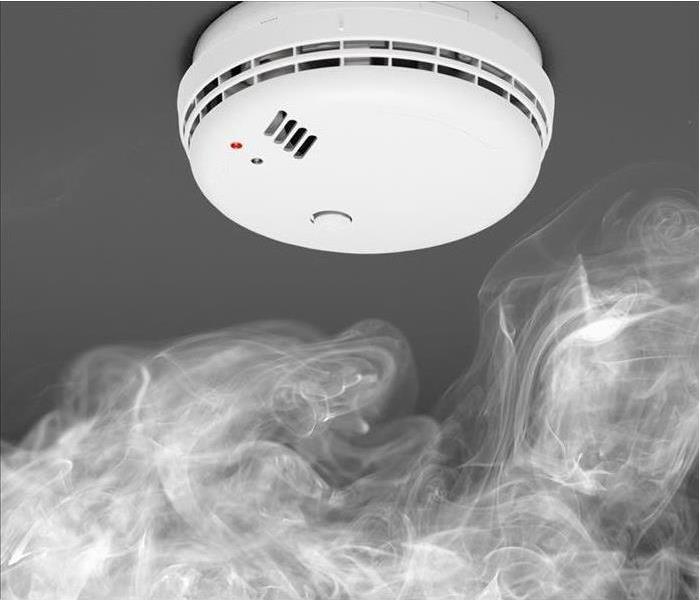 Proper fire alarm placement is essential to prevent fire and smoke damage.
Proper fire alarm placement is essential to prevent fire and smoke damage.
When it comes to fires, you can never be too safe. It's essential for you and every member of your White Bear Lake, MN, family to understand the facts about fire safety and prevention. You must also have an emergency plan in place. Part of this preparation means ensuring your home is adequately supplied in terms of fire alarm and fire extinguisher numbers throughout the house, as well as proper placement. Where should smoke alarms be placed throughout a home?
6 Tips to Consider When Placing Smoke Alarms Throughout a Home
- Every Level of the Home
Fire detectors should be installed on every floor of your home. This includes your basement.
- Every Bedroom
Many fires begin at night when people are typically sleeping. Therefore, every bedroom should have its own smoke alarm.
- Outside Every Sleeping Area
In addition to every bedroom, a smoke alarm must be placed outside every sleeping area in your home.
- Up High
Just as important as having the correct number of fire alarms is proper placement. After all, if they're not where they should be, or in areas where they shouldn't be, it'll risk them not detecting a fire or giving a false alarm. Firefighters and fire damage restoration specialists advised that fire detectors need to be high on the walls or on the ceilings since smoke and heat rise.
- Away From Cooking Appliances
The smoke alarm closest to the kitchen should be placed no closer than 10 feet from all cooking appliances. Otherwise, false alarms could happen regularly.
- Away From Drafty Areas
Smoke detectors should be placed away from potentially drafty areas. Common areas with more air circulation include spaces with windows, doors, vents and ceiling fans.
Proper fire alarm numbers and placement is essential to prevent fire damage and smoke damage. Begin today creating your fire plan to avoid being a victim of the unthinkable.
Ways To Mitigate Further Roof Damage After a Storm
7/19/2022 (Permalink)
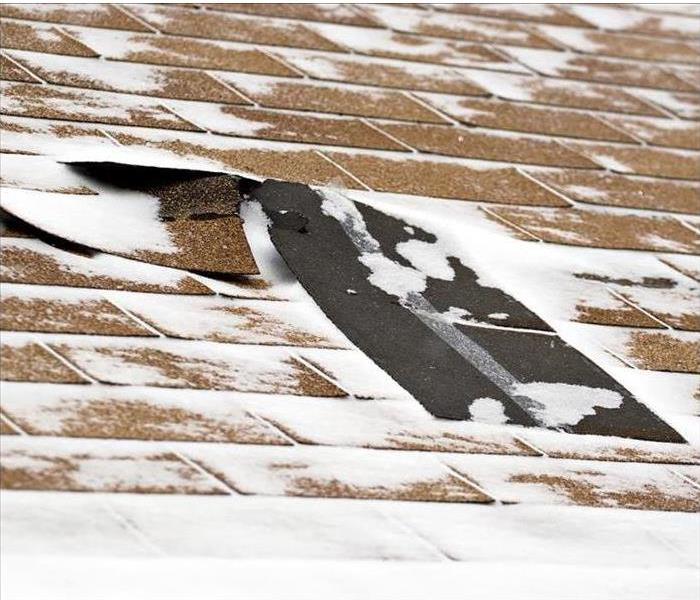 This roof suffered storm damage.
This roof suffered storm damage.
Residential storm damage encompasses many forms, from broken windows to floods. However, among the most common issues following severe weather is roof repair. Before a homeowner can receive funds from their insurer to repair the damage, they often need to ensure nothing else significant happens to the roof or the home, and there are at least three ways to do that.
4 Ways to Protect Your Roof After Storm Damage
- Plywood
Most roof damage following a storm will result in roof leaks. These leaks can stem from small or large holes in the roof. If the holes are not too large, a single sheet of plywood can be attached to the roof to limit any further water penetration into the home.
- Tarps
For holes requiring significant roof repair, a sheet of plywood might not be big enough. In these cases, you can opt for a tarp, weighing down the ends to ensure a secure fit. Tarps are lightweight and easier to manage than pieces or sheets of wood.
- Shingle Replacement
In some instances, wind damage will result in missing shingles. If you can find the shingles and replace them, you can potentially save yourself some money. However, when the shingles are blown from the roof, it is not uncommon for there to be more damage to the roof or the shingle.
- Call a Professional
Ultimately, the best way to resolve roof damage from a storm is to call a storm restoration company in North St. Paul, MN. These professionals have a working knowledge of insurer expectations and can help you mitigate further loss quickly.
It is not uncommon for a severe storm to lead to the need for roof repair. While the mitigation process sounds easy enough, using plywood and tarps to cover holes, it can be dangerous and is often best left to professionals. Residential storm damage is a complex issue, and every homeowner should familiarize themselves with the expectations of their insurance provider.
The Water Damage Timeline
7/19/2022 (Permalink)
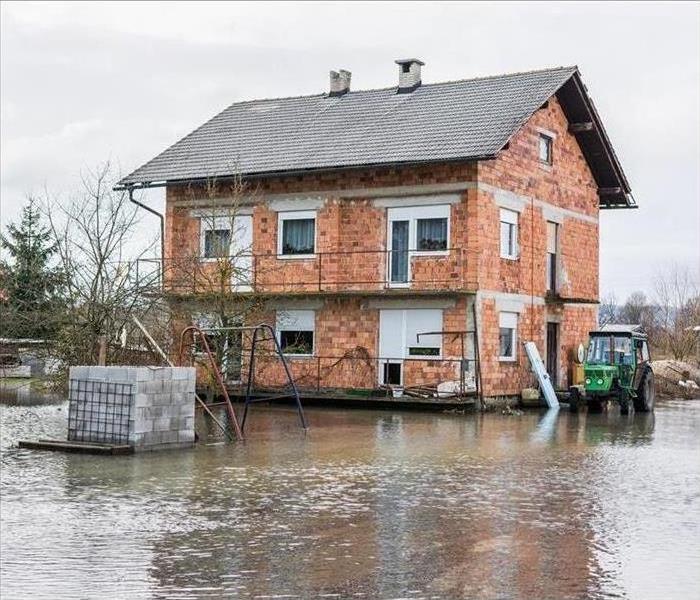 A fast response is very important to avoid further damage.
A fast response is very important to avoid further damage.
When your home is damaged by water, a 24 hour response is crucial. Water begins to cause serious problems within minutes. You might be wondering how this happens and what you can do about it.
You must begin water damage restoration as soon as you notice water damage. There are a few things that can cause this damage. These are:
- Storm flooding
- Burst pipes
- Sewage backups
- Main breaks
- Plumbing breaks
Calling a water damage restoration company White Bear Lake, MN, is crucial in preventing the damage from getting any worse. You want a company with a fast response because water damage only grows.
Water Damage Timeline
After the water begins to inundate an area, porous surfaces start to soak it up. Things like porous stone, paper and even cloth quickly become saturated. This causes these surfaces to start to break down almost immediately. The more porous the surface, the faster it starts to break down. This does not simply stop at the 24 hour mark but keeps going until the water is cleaned up.
Within a day, everything becomes water-laden and soggy. Anything sitting in or soaked in water will begin to decay. Depending on what kind of water you are dealing with, metals will begin to tarnish and wood swell. Dyes and other colors will fade. Mold growth is already beginning. If your restoration company isn't always open, it could allow the damage to get worse.
By the second day, mold has taken hold and continues to grow. At this point, many things are no longer salvageable. Textiles, furniture and clothing begin to deteriorate, and things like carpet and padding begin to rot. If you do not have a cleaning company working to rid your home of the water, this damage will continue to grow.
After two days, restoring it becomes even harder and more costly. It is always best to start restoration before the 24 hour mark to minimize the overall damage.
Maintain Your Gas Range To Prevent a Fire
6/23/2022 (Permalink)
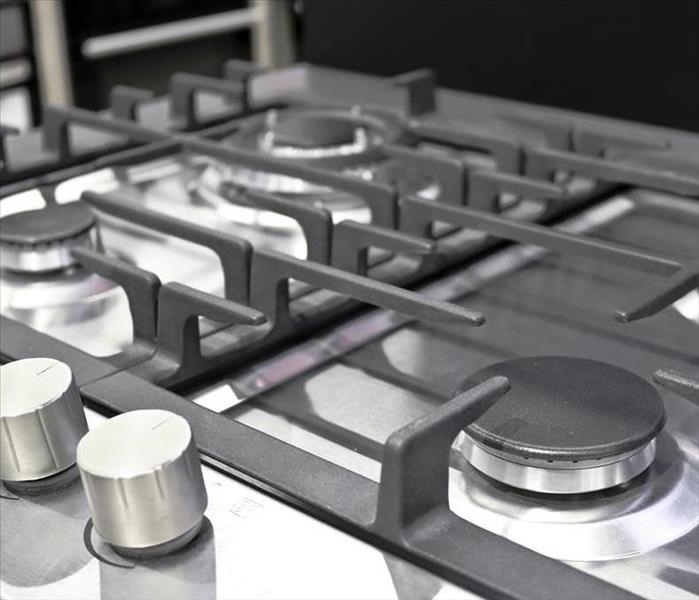 Learn more about Gas Range and Prevent Fire Damage in your Property.
Learn more about Gas Range and Prevent Fire Damage in your Property.
Life gets busy in North St. Paul, MN, so you're not always thinking about cleaning as you go. However, when it comes to kitchen fires, taking a proactive approach can prevent a disaster. One helpful way to do this is to clean your gas range.
Range Cleaning Tips
1. Gather the Supplies
First, gather all your cleaning supplies. You will need the following:
- Dish Rags
- Scrub Brush (e.g., a soft bristle toothbrush)
- Vinegar
- Dish soap
2. Clean After Cooking
Cleaning your stovetop after each use will make things much easier long-term. Grease and other materials can build up over time, making them challenging to remove. Keeping your stove clean can also help prevent smoke smell during cooking.
3. Remove Grates
Fill your sink with hot water and grease-cutting dish soap. Remove the grates so that you can wash them and more easily access other parts of the stovetop. Then, soak the grates while working on the rest of the cleaning.
4. Clear Crumbs
Clean the crumbs from the stovetop with a damp paper towel or dry brush. You can also use a vacuum. This is an essential step for preventing a cooking fire. A crumb catching on fire could get out of control fast and require the services of fire damage restoration professionals.
5. Clean Stove Top
Next, you can either get a store-bought cleaning solution or create your own mixture of one part vinegar to one part water. Spray the stovetop and let the solution sit for a couple of minutes. Then clean it with a sponge or rag. You may have to scrub parts of it where grease has built up. Be sure to use something that won't scratch your gas range.
6. Clean Grease Stains
If you still have stubborn grease stains, you will probably need to use grease-cutting dish soap to completely remove them. Put a small amount of this soap directly on the stain and then use a soft toothbrush to brush in a small circular motion. Once you've removed the grease, wipe it clean with a damp cloth.
7. Remove and Wash Burner Caps and Heads
Next, remove the burner caps and place them in the soapy water with the grates. Also, remove the burner heads and clean them of grease and debris.
8. Clean Under the Range
Many people forget one part of this process: cleaning under the range. Lift the range (check your owner's manual for instructions), and you will probably find a bunch of crumbs. Vacuum this area free of loose debris. Afterward, wipe it down with a damp rag, let it dry and close the top.
9. Wash Grates and Burner Heads
Finally, wash the grates and burner heads that have been soaking in the warm, soapy water. Scrub the grease off with a soft toothbrush or another non-scratch cleaning tool. Then, rinse and dry them.
10. Replace Grates and Burner Heads
Now, it's time to place your grates and burner heads back on your stovetop. You are sure to notice a difference next time you cook. You can also be confident you have a lower fire risk by having a clean stovetop.
Take time to thoroughly clean your gas range today. Remember to wipe it down after each use to enjoy cooking on a pristine surface.
How To Prevent Contaminated Water Damage in Your Home While You're Away
6/17/2022 (Permalink)
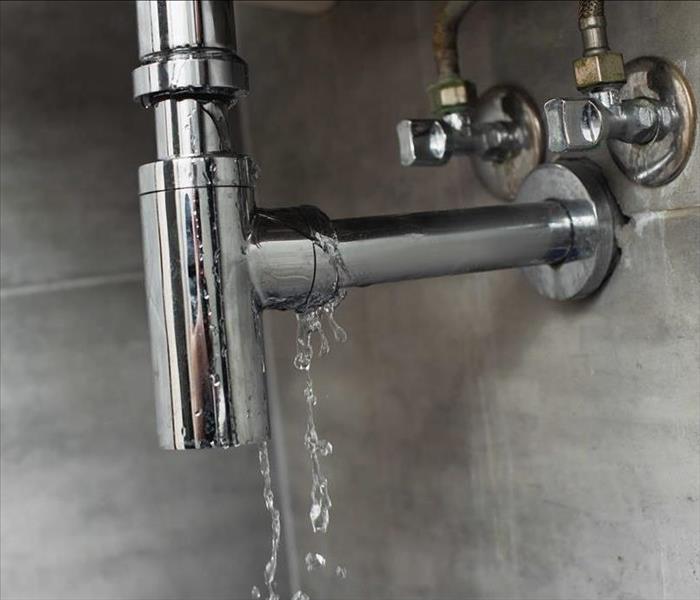 Follow our Tips and avoid Water Damage in Your Home.
Follow our Tips and avoid Water Damage in Your Home.
It's important to take time away from home to relax. Vacation allows you to spend time with your family away from the cares of your everyday life. Whether your family prefers a trip to the beach or a mountain getaway, the last thing you want is to come back to your home in White Bear Lake, MN, to a huge mess caused by contaminated water.
5 Strategies for Preventing Black Water Damage During Vacation
Before your trip, you probably focus on details such as making sure you have reservations at your destination and getting everything packed efficiently. Don't forget your home maintenance checklist, though. It can save you a lot of trouble in the long run.
1. Check for Leaks
Even clean water can cause extensive problems, especially if they go undetected for weeks. Before you leave for vacation, look for leaks in all the places they are typically found:
- Damaged supply line
- Loose or bent pipe
- Cracked toilet tank
- Leaky appliance hose
Call a local plumber to fix any problems with the hardware. Then contact a trusted water restoration company to assess and repair any water damage.
2. Insulate Pipes
If you are traveling during colder months, you may set your thermostat lower to save on energy costs. One possible drawback of this decision is that it makes your pipes more likely to freeze and break. You can still lower your heater, but make sure that you keep it running and that the warm air can reach all the pipes in your home. Additionally, insulate the pipes that are located along exterior walls.
3. Clean Gutters
Another way that contaminated water can enter your home when you're not there is from buildup along your roof and at the base of the house. This can happen when your gutters or downspouts are clogged with leaves, dirt and other debris. Make sure they are clear and that the spouts are positioned to direct runoff away from the foundation.
4. Test Sump Pump
Groundwater and sewer backup can easily flood your basement while you're away. A working sump pump is a solution for getting most of the black water out of your home so that it does as little damage as possible. Test it by filling up the basin and listening to the motor as it works.
It's also smart to have a backup energy source so that it can function even if the power goes out.
5. Turn Off Water Main
Ideally, you have people who can check on your home while you are on vacation. They can keep an eye out for anything that looks suspicious and call the right professionals to take care of it. If you don't know anyone who can help out, consider turning off your water main before you leave. That way, even if a pipe bursts, there's no water supply to cause a catastrophe.
Getting ready to go on a family trip involves more than just packing your suitcases and booking flights. You also need to make sure your home is not in danger of a flood from contaminated water or plumbing issues. Follow this checklist to ensure that your absence doesn't leave your home in potential peril.
Space Heater Safety Tips
6/8/2022 (Permalink)
 Follow our Safety Tips and Avoid problems with your Space Heater in your Property.
Follow our Safety Tips and Avoid problems with your Space Heater in your Property.
The small appliance you use to keep your feet toasty on cold nights in North St. Paul, MN, may seem harmless. A burned space heater, however, can lead to a bigger fire that causes significant damage to your home. Follow these tips to avoid such a disaster.
4 Tips To Avoid Space Heater Fires
Buy a Safe Product
Good fire safety starts with the machine itself. There are several safety features you should look for when buying a space heater:
- Automatic shutoff
- GFCI plug
- Long cord
- Certified testing seal
Buying a quality product with built-in safety mechanisms can help prevent fire.
Replace Filters
Dust that gets caught in any electrical appliance can easily lead to the need for the services of smoke cleanup professionals. The manual that comes with your space heater can tell you how often the filter needs to be cleaned or replaced. Make sure you heed the manufacturer's instructions to avoid having a burned space heater.
Give It Room
Your heater needs a lot of personal space. Make sure you keep a radius of three feet around it at all times but especially when it is in use. Keep it out of the reach of children and pets. Not only can its hot surface lead to burns, but if they knock it over while running, it can ignite flammable items on which it falls.
Turn It Off
A space heater is not meant to take the place of your home's HVAC system. It is designed to provide supplemental warmth on a temporary basis. Do not leave a space heater on when you leave the room or while you sleep. As a general rule, if you are not able to pay attention to it, it should be off and unplugged.
Extra heat is a nice luxury, but a burned space heater causes more problems than it resolves. Get the most out of your heater by following safety protocols carefully.
What Qualifications Should a Remediation Vendor Have?
6/8/2022 (Permalink)
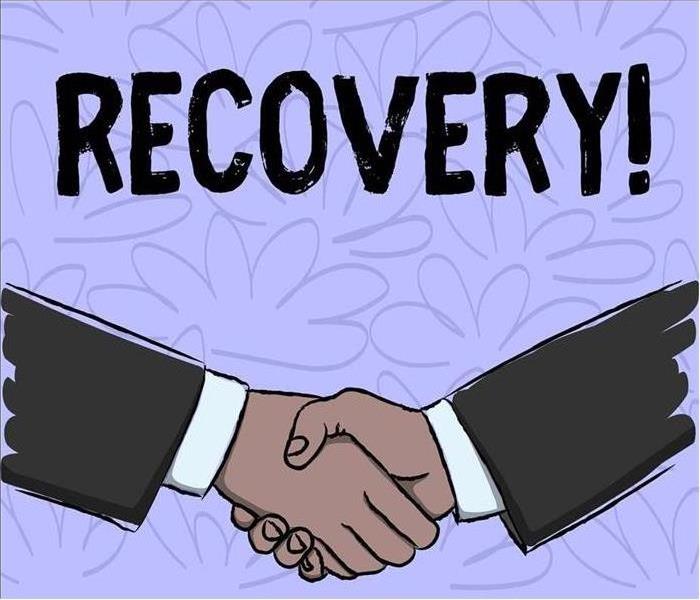 Trust our specialists and recover from fire or water damage.
Trust our specialists and recover from fire or water damage.
As you recover from a fire, flood or other disastrous issues, the last thing you want to worry about is if your restoration company is qualified. Unfortunately, it is not always easy to tell which vendors are good and which are bad. This is why you should ask your insurance agent what qualifications they require before hiring a remediation service. There are some things your recovery service should have.
4 Things Remediation Vendors Should Have
- Quality Vendors
Not all vendors are the same, and there are some basic qualities that each vendor should have. These are:
- Start to finish claims service
- Comprehensive vendor program
- Annual compliance checks
- Knowledge of the industry
- National Accounts qualification
You should find the remediation company in your White Bear Lake, MN, that has these qualities and more.
- IICRC Certification
IICRC stands for Institute of Inspection, Cleaning and Restoration Certification. It is the industry standard for education and certification of restoration technicians. Companies like SERVPRO have this certification. Knowing that they are fully qualified to complete your project gives you added peace of mind and confidence.
This is the most trusted educational program for disaster recovery. They offer initial courses and continuing education for all types of damage, including flood, fire and storm damage.
- Authorized by Your Insurance
In many cases, your insurance will cover remediation. If yours does, ask your insurance agent which companies they recommend. It is very often they have vendors that they know are qualified to perform your rebuilding work. Some insurance companies won't cover the work if you do not use a specifically approved and qualified cleanup service. Make sure you talk to your insurance agency before you start the restoration work.
- Emergency Response Team
In many cases, disasters constitute an emergency. If a fire or flood happens during off-hours or the middle of the night, your recovery service should be there to respond. Some things can't wait.
Some insurance companies have their own qualities they prefer in a remediation company. Be sure to ask your insurance agent if you hire someone to help you recover from a major disaster.
How To Choose the Right Company for Your Water Heater Cleanup
6/8/2022 (Permalink)
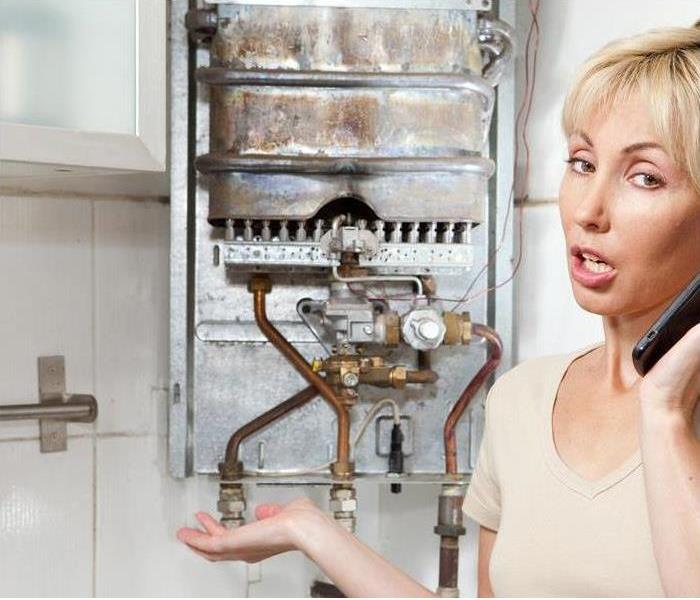 Choose the Right Company and Avoid further problems with your water heater cleanup.
Choose the Right Company and Avoid further problems with your water heater cleanup.
Getting your home back in order when a leaking water heater floods your basement is no small task. There are several reasons to call the water damage restoration specialists when you need water heater cleanup.
3 Reasons Why You Should Call SERVPRO For Water Heater Cleanup
- Transparent Assessment
When you call the SERVPRO service line, the company creates an account for the job in the Claims Information Center. The CIC provides all the details of the cleanup process that you need:
- List of services needed
- Estimate of overall cost
- Updates on necessary changes
- Progress of cleanup
This easy-to-read report is available to both you and your insurance provider 24 hours a day. It makes keeping up with the failed water heater cleanup a breeze.
- Local Service
No matter where you live, there is likely a SERVPRO branch near you. Each franchise is locally owned and operated, so you can rest assured that you are working with people who know North St. Paul, MN, well. They are likely to be involved in the community and have good working relationships with other local business owners. They can coordinate with the local plumber you hire to fix the leaking water heater to make the whole process more efficient.
- Corporate Support
In addition to the local expertise they bring to the job, our technicians have the backing of a strong corporation. That means that if something goes wrong or they discover that the broken water heater cleanup job goes beyond the scope of their staff, qualified reinforcements are just a phone call away. It can set your mind at ease to know that your satisfaction is doubly guaranteed.
Not all restoration companies are the same. With our professionals, you get great local technicians with corporate support who work to keep you informed every step of the way. You can count on them to repair the damage from your leaking water heater and leave your home looking as good as new.
5 Steps To Take After You Discover a Flooded Toilet in Your Home
6/8/2022 (Permalink)
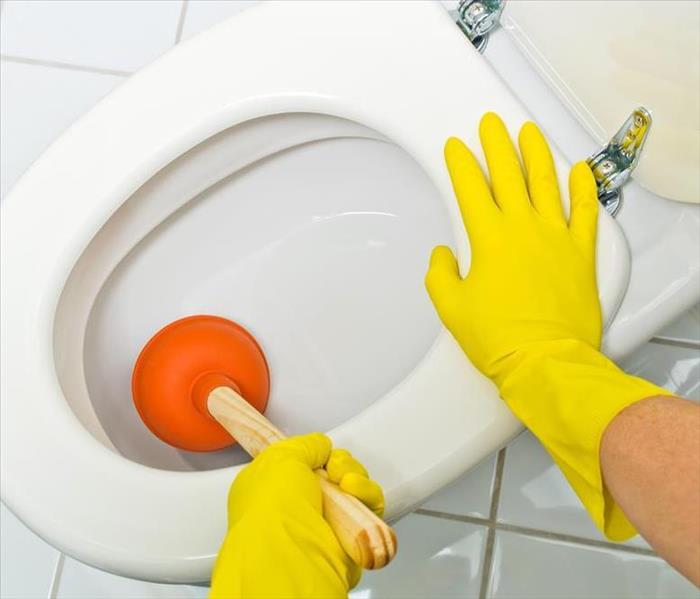 Follow our Tips to know what to do if you Discover a Flooded Toilet in Your Home.
Follow our Tips to know what to do if you Discover a Flooded Toilet in Your Home.
It is easy to panic when a toilet overflows in your bathroom. The rushing water from the toilet bowl or tank could quickly cause a flood. You may be able to stop the gushing water by yourself. For the cleanup, however, you should call a sewage company such as SERVPRO that specializes in restorations.
What To Do When You Discover a Flooded Toilet
1. Shut off the Water
To limit further sewer damage to your bathroom, you should turn off the water immediately. Start by finding the water shut-off valve behind your toilet. If closing that valve does not work, turn off the main line that provides water to your home.
2. Apply Towels
Put some old towels on the wet floor and around the base of the toilet. The towels should absorb any additional water that overflows. They will also stop you from slipping.
3. Grab the Right Plunger or Snake
When you are ready to remove the clog, use a plunger designed specifically for toilets. It should have a flange that seals the opening of the drain. Do not apply the plunger while the water is still overflowing, as this could make the flood worse. If the clog is still present after a few plunges, try a toilet snake instead.
4. Hire Cleanup Professionals
When you are finished clearing the clog, you will probably still have to deal with the messy flood in your bathroom. Toilet water may contain bacteria or parasites that can make you sick. You should thus be particularly cautious when handling the water. Wear goggles and rubber gloves before attempting any cleanup. The harmful microorganisms in the water could also contaminate your clothes and tools. While you can disinfect these belongings after the fact, you are better off hiring sewer damage cleanup professionals. The experts at SERVPRO know how to safely restore your home after a bathroom disaster.
5. Prevent Future Clogs
Once the clog is under control and your bathroom is clean, you should take steps to prevent future toilet blockages. First, you need to understand the common causes of toilet clogs. Sometimes, a clog occurs because of the toilet itself. If water is spilling out of the toilet’s tank, there may be a problem with the fill valve. You should thus have a plumber repair the fixture.
A clog that comes from the toilet bowl is likely caused by a blockage in the drainpipe or toilet trap. The trap, in particular, can become clogged when certain items are flushed down the toilet. Dental floss, facial tissues, paper towels and cotton balls should all be disposed of in a regular garbage can and not in a toilet. If there is no obvious reason for your toilet overflow, you may be dealing with a clog in the lateral line that connects your home to the local plumbing system.
Contact a White Bear Lake, MN, government representative to see what you can do about the situation. While you may be able to stop an overflowing toilet by yourself, touching the dirty water that spilled onto your bathroom floor can be dangerous. You should thus let the sewer damage specialists at SERVPRO handle the cleanup.
Flood Safety Tips Before, During and After the Storm
5/26/2022 (Permalink)
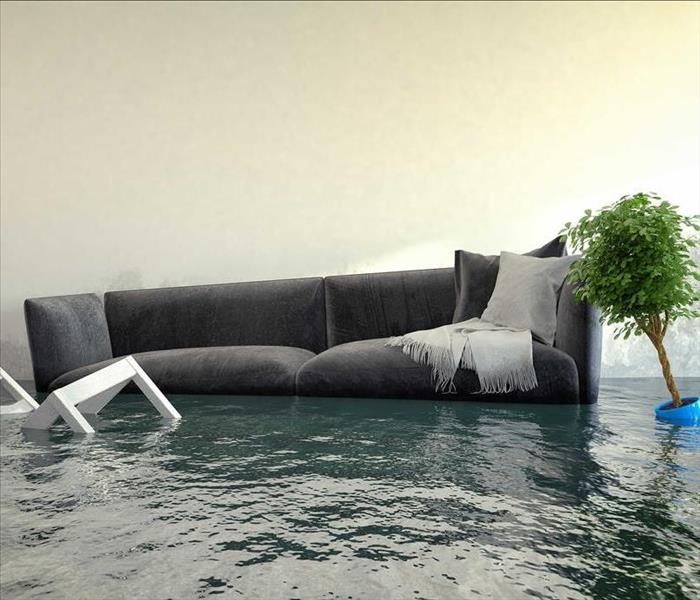 Avoid Further Storm Damage in your Property by following our Tips.
Avoid Further Storm Damage in your Property by following our Tips.
A severe storm in North St. Paul, MN, has the potential to create flash floods and underground flooding. When that happens, flood safety is essential to weathering the storm. While flooding may create chaos, there are ways to help you handle the situation before it hits, as the waters rise and once the floodwaters diminish.
Flood Prevention Before the Storm
Although there is no way to completely flood-proof your home, there are ways to minimize the potential damage. Those include:
- If the home doesn’t already have it, installing backflow valves helps reduce the chances of sewer lines backing up. A sump pump is another alternative that works to keep water from rising.
- For homes in areas prone to flooding, consider investing in flood barrier systems or keeping sandbags on hand. Many of these new systems easily inflate and deflate.
- Appliances in the basement should be elevated and anchored to keep them above any potential standing water.
- Landscaping plays a key role in how the waters flow away from the home. Ensuring the grading is sloped and planting moisture-seeking vegetation may help ease the runoff and reduce soil erosion, which may lead to foundation issues.
- Flood detection devices are available that detect any unwanted moisture. Many on the market can easily be used with other smart devices.
- Any vital documents or memorabilia should never be stored in the basement. Moving it to a higher floor increases the chances of them avoiding water damage.
- As part of regular maintenance, ensure that gutters are clean, trees are trimmed and the foundation shows no signs of cracks.
Flood Safety During the Storm
As the waters start to rise, safely navigating the storm is the top priority. The below safety tips are essential to follow:
- Ensure the utilities are turned off at the main switch.
- Fill sinks and bathtubs with fresh water to avoid dealing with contaminated water.
- Avoid driving and walking through floodwaters. Even six inches of water has the potential to make you lose control of the vehicle or whisk you away.
- If traveling during the storm, leave the vehicle and get to higher ground. Be sure to watch out for any power lines that are down.
Call the Professionals After the Storm
After the storm subsides, it can feel overwhelming. Taking the steps below makes it easier to navigate the aftermath.
Ensure the home is safe before re-entering. This includes avoiding using electricity until it is deemed safe.
Inspect the home for damage, including structural damage.
Take videos and photos of all the damage and file a claim.
Once your insurance provider gives the go-ahead, starting the water extraction and drying processes are vital to minimizing the chances of secondary damage, such as mold growth.
Call a certified flood damage restoration company to help with the cleanup and recovery. The right company will be able to provide beginning-to-end services, from boarding up broken windows to replacing drywall and more.
During severe weather, flood safety should be the only priority. Before and after the storm, consider the above tips to help minimize damage and recover more quickly.
What Insurers Should Look for in a Professional Restoration Company
5/23/2022 (Permalink)
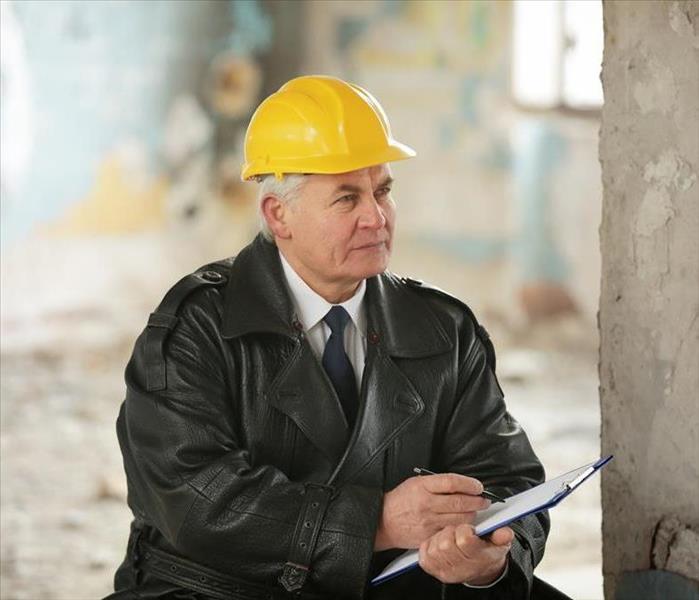 A Professional Restoration Company is always the Best Option.
A Professional Restoration Company is always the Best Option.
Commercial property owners understand the importance of taking care of their real estate investment. A critical component of property care is securing insurance to protect against damages and losses due to fire, water, theft, and other natural disasters. These owners look to insurers like you to provide insurance coverages that protect them from typical threats and exposures.
In the event of major damage to the building, your clients look to their insurance adjuster or representative for guidance on cleanup and repairs. Here’s what you should know about choosing a professional restoration or remediation company to recommend.
Efficient Insurance Claim Handling
Filing a claim can be quite stressful for your clients, so it’s important to find a restoration services provider that makes your clients a priority. A SERVPRO franchise in White Bear Lake, MN, brings you experienced professionals who understand that taking care of your clients is the best way to take care of you. Bringing a client’s building back to pre-damage conditions and minimizing the time it takes to do so is the main focus. Working with you to expedite claim processing helps you serve customers that rely on you.
24-7 Availability
Property damage is never convenient, and emergency situations are even less so. Whether it’s sewage backup or a blazing inferno, you need to partner with a team that can respond to emergencies whenever they arise. Your local franchise is available 24 hours a day and 7 days a week to meet an insurance adjuster onsite and/or start the remediation process immediately, doing what’s necessary to help your customers’ properties get back to normal as soon as possible.
A Comprehensive Approach
Restoring a building back to pre-damage conditions requires a comprehensive suite of services that cover the insured’s needs. You can expect your local SERVPRO franchise to offer the following:
- Safe, careful removal of damaged items
- Special cleaning methods for electronics, documents, fabric and upholstery, and more
- Thorough drying and dehumidifying of items as necessary
- Disinfection of items affected by black water and gray water
- Remediation of mold and mildew
- Boarding up portions of the structure to prevent further damage
- Structural repairs and reconstruction
- Offsite storage of items during cleanup and repair
Although no two restoration jobs will be the same, you can be confident that your preferred provider has the experience, expertise, and equipment for a complete job.
Controlling Claims
Replacing an item is often more expensive than repairing or cleaning it. The cost to replace every item can quickly add up, resulting in an insurance claim that may be much larger than necessary. SERVPRO looks for ways to repair and clean, before replacing. This helps to control the size of your claims, a benefit to both the insurer and the insured.
At the end of the day, policyholders want to get back to business as quickly as possible. Your representative insurance adjuster wants to minimize the size of the claim.
It’s important to partner with an experienced restoration services provider that can start quickly and find the most efficient and cost-effective ways to return the covered property to pre-damage conditions. Do what’s best for your clients by recommending professionals they can trust.
How Fire Damage Causes Water Damage
5/12/2022 (Permalink)
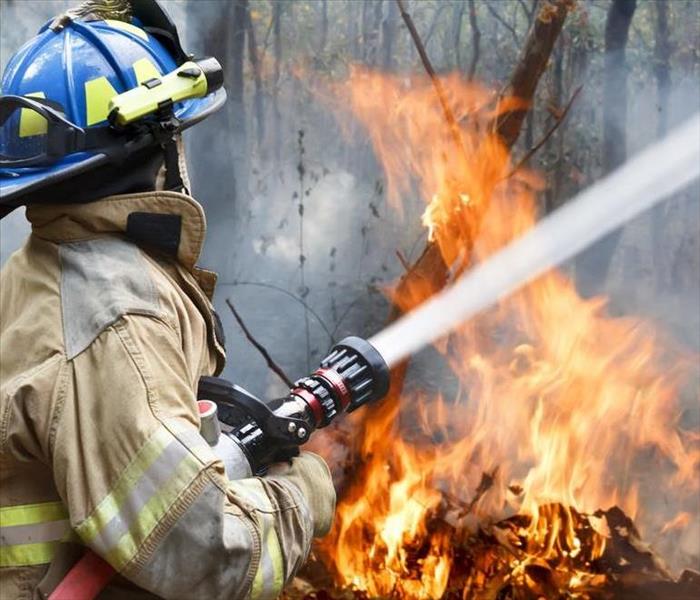 Fire Damage can also Cause Water Damage. For more Information, just Contact Us.
Fire Damage can also Cause Water Damage. For more Information, just Contact Us.
When a fire occurs, most property owners expect to have fire damage. However, what they may not expect is the amount of water damage that can occur due to the efforts to put out the flames.
Dealing With Water Damage
Dealing with damage from fire and water is a multi-step process.
Inspect Your Damage
Even if firefighters mostly sprayed water in one area of your building, water from a fire hose can seep into unexpected places causing damage. There are several areas where water damage is common:
- Drywall can soften or swell after absorbing water
- Ceilings may swell, stain and lose strength
- Water can cause shorts and other problems in electrical systems
- Wood floors may buckle and swell
- Wood framing may rot
Additionally, most surfaces can develop mold and mildew after being exposed to water. This is particularly true of surfaces that may take a long time to dry, such as the padding or subfloor under wet carpet. Contacting a fire remediation company in White Bear Lake, MN, to dry out your building after a fire may avoid mold and mildew growth.
Contact Your Insurance Company
Damage from water used to put out a fire on your property is usually covered by fire insurance. Contact your insurance company to get the claims process started.
Document Your Damage
The insurance company will probably send an adjuster to inspect your fire damage. However, it is still a good idea to have your own documentation in case a dispute arises or the adjuster misses something. Take photos or videos of all the damaged areas. Create an inventory of everything that was damaged or destroyed by fire or water.
Start gathering any documentation you have that establishes the value of the damaged property.
Remove Wet Items
The longer wet items stay in your building, the more likely you are to have a mold problem. Remove wet contents, drywall, carpet, insulation and other materials from the building. Place salvageable items outdoors to dry if the weather permits it. Open windows and doors to allow air to circulate.
Clean and Disinfect
Once damaged items have been removed, the property needs to be cleaned and disinfected. If you have a lot of damage, you may need to hire professional cleaners to assist you.
Inspect and Replace Seals
Standing water can weaken the seals around toilets, bathtubs and appliances. Check seals and replace them as needed.
Stay Safe
Do not enter your fire-damaged property until authorities say it is safe. Fire and water can cause structural damage that may make some buildings or rooms unsafe to enter. Do not operate damaged appliances or other electrical equipment until they have been inspected and repaired. Wear protective gear, such as rubber gloves, masks, respirators and protective eyewear.
Because most property that has experienced a fire will have both fire damage and damage from efforts to put out the fire, it is important to have a plan for dealing with multiple types of damage. Quick action is needed to avoid unnecessary additional damage.
To File or Not To File an Insurance Claim
4/22/2022 (Permalink)
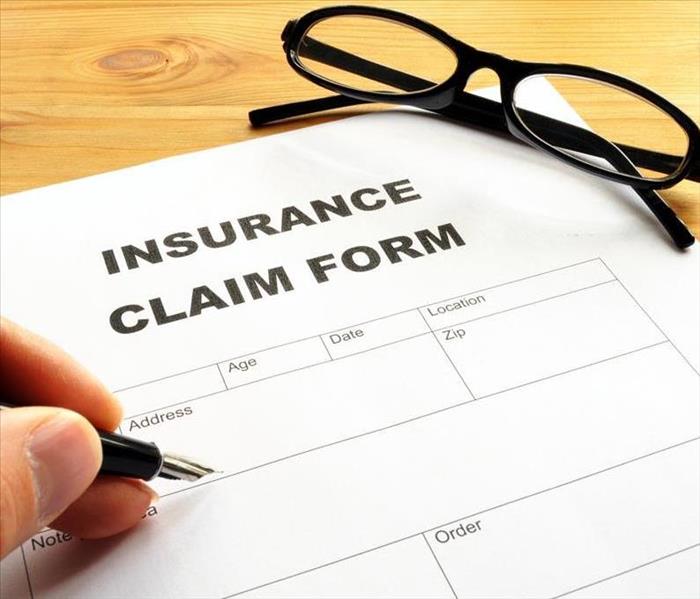 Know more about when to File an Insurance Claim by following these Tips.
Know more about when to File an Insurance Claim by following these Tips.
Smart property owners understand the benefits of having an insurance policy to pay for major repairs, following covered perils. Fire, water, and theft are just some of the issues that result in losses covered by your plan. If you experience major damage or losses to your place in North St. Paul, MN, it probably seems like a no-brainer to file a claim. That’s the point of carrying coverage, right? Well, you may want to step back. it really depends on your particular situation.
Filing an insurance claim may negatively impact your premiums, but the answer is not so cut and dried. Here’s what you should know.
Understanding an Insurance Claim
You pay a premium annually, semiannually, or monthly to your insurer in exchange for coverage of losses due to major events, such as water damage. While policy details vary between insurers and the insured, you’d file a claim for the following:
- Repair, restoration, and reconstruction of the building structure
- Repair and replacement of damaged or lost items
- Medical and healthcare costs for injured persons
- Death benefits
- Other benefits such as temporary housing
Typically, an investigation is conducted by your insurance company to determine the cause, the extent of damage, and to confirm that it is covered by your plan.
Your insurer issues a check either to you or directly to the SERVPRO Franchise Professionals in North St. Paul, MN, restoring your property.
Exploring a Claim
No two claims are equal, and that’s primarily because there are other factors that your insurer factors when investigating a claim. These factors may cause your premiums to go up after filing. Some common factors include these:
- Type of claim
- Number of previous claims filed
- Frequency of events that result in losses, such as weather events and the likelihood of a business or home flood
- Credit rating
Some insurers view certain types of claims as problematic. Slip-and-fall personal injury, water damage, mold, and dog bites are examples of claims that may result in a premium increase. Some claims may cause your insurer to discontinue coverage, requiring you to purchase a high-risk policy with higher premiums and lower coverage limits.
Answering the Question
Should you file or not? That still remains to be seen. Because filing multiple claims can cause your rates to increase, your best move may be to file only when you’ve experienced a catastrophic loss. For example, if a wind storm takes off a few shingles, it might be better to pay for this out of pocket. Whether the damage is significant or not, It’s important to have a clear idea of what your existing policy covers well in advance of a problem. Keep in mind that your agent or representative may be obligated to notify your insurer of a potential claim.
Responsible ownership means having coverage to protect your property in the event of a loss or other damage. You’ve contracted with an insurer to pay premiums regularly for this coverage. Filing an insurance claim may cause your premiums to increase, especially if you’ve submitted multiple claims in the past.
It’s up to your insurance company to decide on a rate hike or to drop coverage altogether.
How Business Interruption Insurance Can Limit Your Losses After a Fire
4/13/2022 (Permalink)
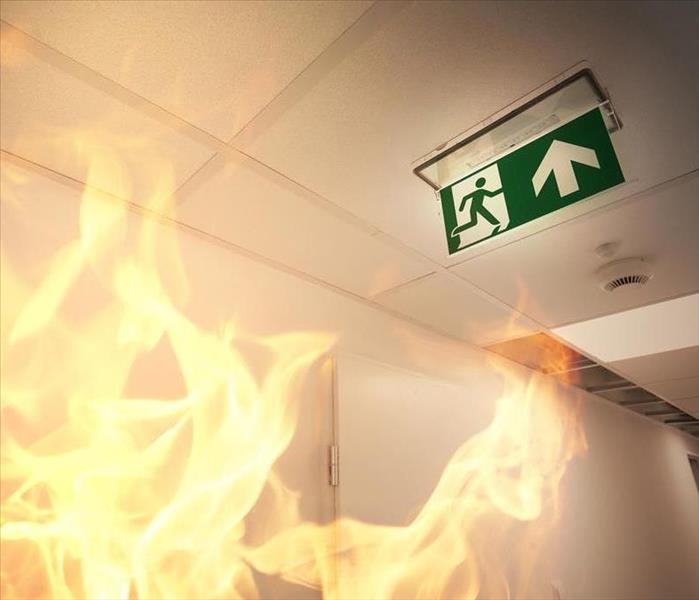 Know More about Business Interruption Insurance by Following These Tips.
Know More about Business Interruption Insurance by Following These Tips.
A commercial fire can be harmful in multiple ways. Obviously, a blaze puts you and your workers at risk. Even if everyone does come out of the disaster unscathed, you will then have to start the fire restoration process.
Top fire cleanup experts can get your property back to normal quickly. However, you may still have to shut down your White Bear Lake, MN, business for several days during the remediation.
To limit the harm that this closure does to your company, you should purchase business income insurance, which is also called interruption insurance.
Why You Need Business Interruption Coverage
The National Fire Protection Association determined that indirect property losses from fires cost $1.9 billion in 2014. This included $0.46 billion in indirect damage to industrial and manufacturing facilities, and $0.17 billion in indirect damage to other non-residential structures.
Business interruption coverage can alleviate some of these costs. This type of insurance typically covers the following:
1. Lost Profits
The insurance policy will give your company the amount of money it would have earned had the fire not occurred. Insurance providers base these payouts on the prior month's documented income. Any earnings not listed on your financial records will be excluded. It is thus important to keep track of exactly how much profit you make each month.
2. Extra Expenses
While your business headquarters is being repaired, you may have to temporarily move your company to a new location. Interruption coverage can pay for the cost of renting this new facility. Your policy may also help you replace damaged machines.
3. Operating Expenses and Employee Wages
Most interruption policies cover business operating expenses and other fixed costs involved in running your company. This includes the wages and/or salaries for your employees. After all, your workers may not want to return to the job unless they are getting paid.
4. Loan Payments and Taxes
Your lenders likely will still want their monthly payments even if a fire has damaged your business. Interruption coverage should cover the costs of those loans and ensure you can pay your business taxes on time.
What Is Not Covered Under Business Income Insurance
Unfortunately, not all business-related losses are included in interruption insurance. Damage caused by earthquakes and floods, for example, is usually part of a separate policy. Business income insurance also will not cover the cost of utilities or reimburse you for replacing broken items. However, the latter expense may be part of your main insurance coverage.
How Business Income Insurance Works
Business income insurance is typically added on to a regular commercial policy. The policy usually covers losses from the date of the covered peril to the date the property is back in the same condition it was pre-disaster. This time frame is often called the "restoration period."
Most policies provide a restoration period of 30 days. However, if you are worried about a more severe disaster, you can extend the restoration period to 360 days. Keep in mind that there may be a two to three day waiting period before the coverage begins.
Fires cost companies more than $1 billion in indirect damage each year. With interruption insurance, you can mitigate your losses.
How To Fix a Leaking Light Fixture
4/9/2022 (Permalink)
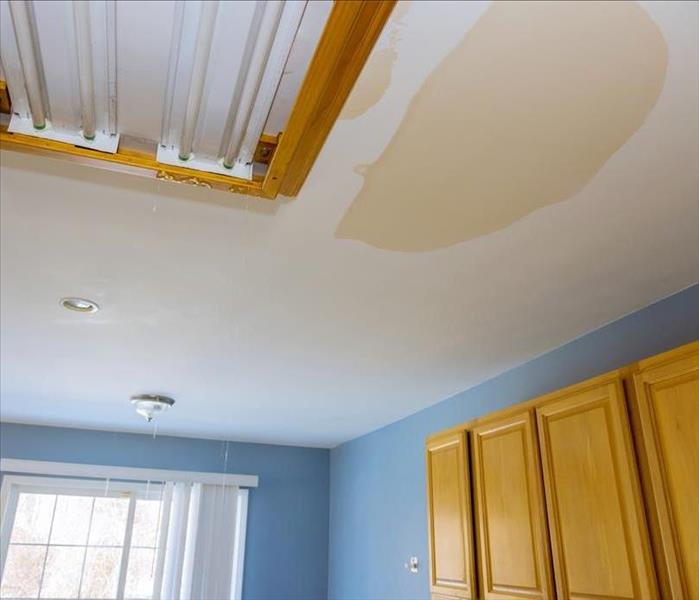 Learn More about How To Fix a Leaking Light Fixture by Following these Tips.
Learn More about How To Fix a Leaking Light Fixture by Following these Tips.
There are many ways a leak can start in your home. An overflowing toilet, damaged supply line or a malfunctioning appliance can all cause water to drain where you don't want it to go. A leak from an upper level of your home in North St. Paul, MN, not only causes water damage to the floor and walls in the room where it originates but also can leak into the walls, ceiling and light fixtures in the space below it.
If you see water in a light fixture, there are a few steps you need to take.
Practice Safety First
Electricity and water don't mix, so before you do anything else, you need to make sure that no water comes into contact with a live circuit. There are several immediate actions to take:
- Flip the circuit breaker that supplies power to the fixture off.
- Use a voltage tester on dry surfaces to confirm the electricity is off.
- Turn off the water main until you can find the source of the leak.
- Block off the area so that pets and children don't wander into it.
After you have these precautions in place, you can assess some of the water damage caused by the leak. This starts with finding the source.
Find the Cause of the Water Damage
The first place you should go, of course, is the room above the space with ceiling damage and a leaking light fixture. The reason the cause of the problem is important is that there are different cleanup methods used for different types of damage. For example, repairs prompted by an overflowing toilet must include thorough sanitation, and issues stemming from a pipe burst can turn out to be more widespread than you anticipate.
Contact Certified Technicians
The last step is to resolve the problem. Pinpointing where your leak came from not only informs which professionals you will need to call but also what they can expect when they arrive. You should never attempt to fix a leaking light fixture on your own. You need people who have the knowledge and the experience to complete the repairs correctly.
Contact certified professionals who can fix the leak and all the issues that it caused. If the source of the problem is a plumbing mishap, call a trusted plumber to repair the pipe, toilet or other feature before you turn the water back on.
To ensure that there is no residual electrical issue, hire an electrician to ensure that all the wiring to the light is intact and dry. Finally, you will need water damage repair specialists to tear out all the saturated materials, clean and dry the space, and rebuild the structure to ensure it is sound.
If you have moisture pooling in a light fixture in your home, you have a bigger problem than water damage to the structure to deal with. Take the appropriate safety precautions and call professionals who can assess and handle the situation quickly.
Your fast response may be the key factor in keeping an electrical or water problem from getting out of hand.
Fire Insurance: What Is and Isn’t Covered
3/14/2022 (Permalink)
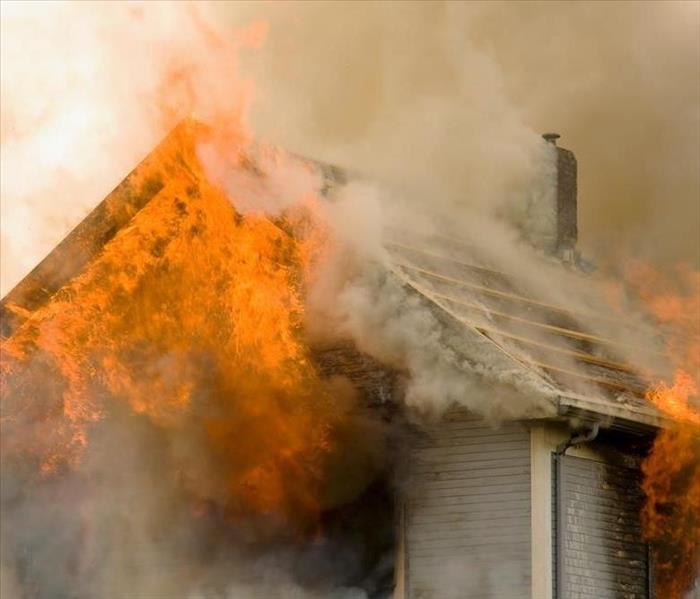 Learn More about Fire Insurance by Following these tips.
Learn More about Fire Insurance by Following these tips.
In 2020, the National Fire Protection Association reported 490,500 structure fires in the United States. While a professional fire damage company will have the expertise, tools and equipment to return your home to like new, the insurance process behind the scenes to make that happen may get confusing. That makes it important to understand what is and isn’t covered by a homeowners insurance policy. While each policy is different, they typically have similarities. Understanding the basics makes it easier and smoother to handle the aftermath of an unexpected event in your North St. Paul, MN home.
What Does Fire Insurance Protect?
In most cases, there are three protected items:
Main Dwelling: This covers the house itself and attached structures, such as a garage or porch, for any smoke or fire damage.
Detached Structures: Any sheds, fences, detached garages or other structures should be covered. In some cases, the landscaping may be included as well.
Personal Property: Many of your belongings are protected. This may include clothing, appliances and furniture. Content loss isn’t as cut and dry. Often, policies will cover between 40% to 75% of losses.
Types of Fires Covered and Not Covered by Insurance
Like with many things in life, not all fires are considered equal. Depending on the source of the home fire, your claim may be rejected. In most cases, your insurance will cover the following types of fires:
Chimney Fires: As long as the wood-burning stove or fireplace is well-maintained and free of hazards, it should be covered.
Electrical Fires: This includes power surges, short circuits or faulty wiring that causes a fire to break out.
Accidental Fires: From a lit candle to falling over, a grease fire or a dry Christmas tree igniting, most policies include these unexpected events.
Wildfires: Damage from these are covered but only if you live in an area that is not prone to them.
While insurance is usually a vast umbrella that covers quite a bit, there are situations in which filing a claim may actually cause you more problems. Arson and vandalism by the homeowner are never covered. If a claim is made, the person making the claim will likely be penalized and may face legal issues. Any fire claim is thoroughly investigated, so the odds are never in an arsonist’s favor.
Another situation that will likely be denied is a vacant home fire. If the home has been vacant for more than 30 days, the liability falls under the homeowner for not adequately protecting the home. A vacant property is considered one that has no occupants or personal belongings. If you are planning to sell a home and know that it will sit vacate until sold, there is additional insurance that can be purchased to cover potential damage from fire, vandals and other unexpected situations.
While no one wants a home fire to break out, the statistics show that it happens more than people would like it. Being prepared to handle an unexpected event means understanding your homeowner's insurance policy. By knowing what is and what isn't covered, it makes it easier to navigate the claim.
Three Steps To Prevent Flood Damage
3/9/2022 (Permalink)
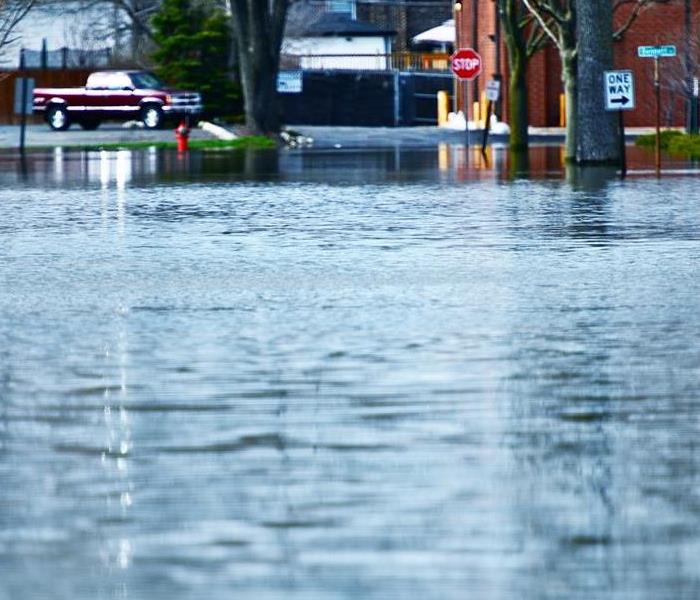 You can Avoid a lot of Flood Damage by Following These Three Steps.
You can Avoid a lot of Flood Damage by Following These Three Steps.
All properties are prone to occasional weather-related damage. Throughout some seasons and in some locations around the country, storm damage is quite frequent. In fact, in the United States, flooding is the most common and most costly product of natural disasters.
There are hardly any regions in the world that are completely immune to weather-related damage. In White Bear Lake, MN, the flood risk is moderate to severe.
Depending on where you live, your risk for flood damage or water damage may be high during certain seasons. Fortunately, no matter which region your building resides in, there are some steps you can take to reduce water damage from infiltrating your building. To combat potential damage, evaluate, prepare, and prevent.
Three Key Steps to Prevent Flood Damage:
Evaluate
First, determine whether or not your property is at risk for flooding, and examine how well your building structure can fare storm damage.
FEMA provides a map that evaluates flood risk by state and city. The flood map divides regions into zones that represent flood risk. orange zones are the least likely to experience damages, then blue zones, followed by yellow zones. The most at risk are blue zones with red stripes.
Orange zones face significant flood risk once every 500 years and are the least at risk for damages. Blue zones face significant flood damage once every 100 years.
Yellow zones represent an unknown flood risk, and if you live in a yellow zone, you should consult with local authorities or neighbors to gauge your property's risk of water damage.
Blue zones with red stripes are the most at risk and require extensive preparation to prevent serious damage. Usually, blue zones with red stripes live near bodies of water.
Understanding what zone type your property resides in will help you to prepare and prevent future water damages.
Prepare
After you pinpoint your property's risk for flood damage, invest in ways you can protect your home from water damage. Some flood renovations are free, while others require maintenance.
For example, if your property is prone to damages, elevate appliances like air conditioning units and water heaters above flood level.
Additionally, research insurance policies even if your property has a low risk of damage. If your property is in a location that is high risk, you should strongly consider investing in insurance.
Prevent
If a storm is coming or has already taken place, take precautionary steps to address water damage on your property.
Shut off your property's electricity if flood water may infiltrate your electrical system. Turn on your sump pump or shop vacuum and remove any water quickly if there is any on your property.
You should turn off water lines, and clear out gutters for water overflow. You may also use sandbags to block gaps that may lead to flooding.
Turn on your sump pump or shop vacuum and remove any water quickly if there is any on your property.
Even if you take prevention steps to reduce risks associated with water damage, some risks will inevitably remain. If you are concerned about potential water damage, call a local storm remediation company that can get to your property quickly and assist you.
How To Keep Your Construction Site Protected Against Water Damage
2/22/2022 (Permalink)
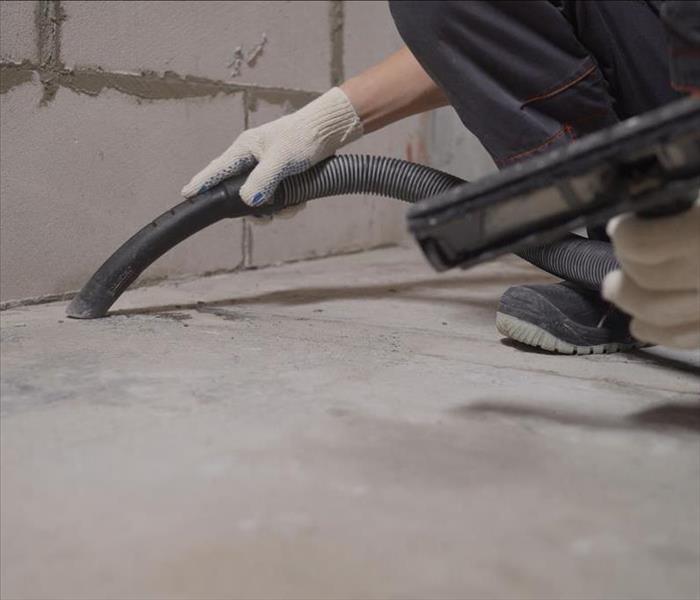 Follow these tips and Keep Your White Bear Lake, MN Construction Site Protected Against Water Damage.
Follow these tips and Keep Your White Bear Lake, MN Construction Site Protected Against Water Damage.
As a project manager, encountering water damage at your construction site can be anxiety-provoking, to say the least. It can be extremely costly, not only for expensive supplies but also for plumbing issues such as performing a water pipe repair. Fortunately, there are a few relatively easy ways to ensure that your White Bear Lake, MN site is protected against various types of water incursion.
What Are Some Common Problems and How Can I Avoid Them?
Whatever type of construction you're performing, there is always a risk of sustaining water damage. There are several precautions to take from the beginning that can significantly reduce the risk of excess moisture.
1. Confirm Proper Site Drainage
If your construction site has improper drainage, water can pool around the work area, causing damage. To prevent this pooling, you can grade the land to better drain the site or you can create drainage systems using drainpipes and drain screens.
2. Ensure Secure Pipe Fittings
Faulty drain and pipe fittings can develop a leak issue sooner or later. A thorough inspection can further prevent a leaky, broken pipe. If you want to ensure a much small risk of leaks, soldering the pipe joints is much more solid than crimping.
3. Secure Every Building Opening
Buildings under construction can have many open areas where rainwater can enter the structure. Stairwells, elevator shafts, open windows and doors, and unfinished roofs can allow water to come in but not dry quickly. Installing and maintaining temporary roofs are an ideal option for securing these openings until they're entirely constructed. Keep an eye on these quick fixes to ensure they are sufficiently waterproofing them.
4. Prevent Pipes From Freezing
Unprotected pipes in cold climates can develop frozen water inside, eventually causing them to expand and burst. Freezing pipes can cause significant property damage, requiring expensive water pipe repair. You can wrap the pipes in insulation or heat tape to avoid this problem.
5. Test All Suspect Areas
Before leaving an area susceptible to water intrusion, test the areas to make sure they are water-tight. Doing this can prevent the surprise of discovering a flooded site when you return the following morning.
6. Make Sure Important Materials Are Properly Stored
In addition to protecting the structure's interior, it's essential to protect your sensitive equipment like computers and vital documents. Keep these items in waterproof containers or under thick tarps or large plastic sheets.
7. Check All Water Delivery and Drainage Systems
Construction sites often contain several systems that present the risk of water damage. These systems include plumbing, fire protection and drainage systems. To lower the risk of any water issues, make sure you have quality systems, have professionals install and inspect the systems, watch the systems closely for a while after charging them.
The potential for a flooded construction site is nothing to take lightly. Not only can it cause a delay in progress, but it can also cause the need for professional work such as water pipe repair or the services of water damage restoration specialists.
Begin implementing these suggestions for your next job to ensure a smooth-running construction project from start to finish.
Storm Tips To Keep in Mind
2/22/2022 (Permalink)
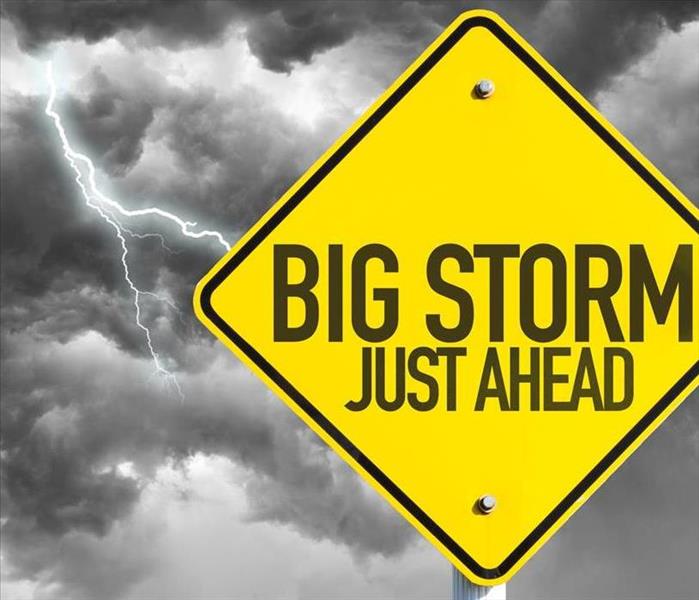 Keep in Mind these Storm Tips to protect your North St. Paul, MN property.
Keep in Mind these Storm Tips to protect your North St. Paul, MN property.
Winter is coming to a close, and spring is arriving on its heels. As the seasons' change and weather patterns transform, you can expect some wet and potentially destructive weather. According to many restoration services in North St. Paul, MN, there are several storm tips you should consider to protect your house, including:
- Exterior assessments
- Interior inspections
- Routine landscaping maintenance
While these tips are great to prepare for the weather, what do you do when a storm causes damage? The process for recovery is not so cut and dry, literally.
Storm Damage: Storm Tips for a More Efficient Recovery
Storm damage can range in losses. A property can experience minor issues like the loss of a couple of shingles, or the house can experience significant wind and rain damage, resulting in broken windows and holes in the roof.
While many homeowners will acknowledge the need for a restoration service when faced with extensive damage, it is what they do in the meantime that can confuse and overwhelm them. Fortunately, the aftermath of a storm can often be handled in the same way you deal with prevention, through inspections and maintenance.
Focus on Safety
Before you delve into assessing your property after a storm, it is necessary to consider safety. Did the storm cut power or cause extensive flooding? If so, you should shut off your power to prevent the threat of electrocution.
Did part of the roof collapse, or is there a significant leak stemming from the ceiling? If so, you might want to stay clear of the area in case of further collapse.
While assessing damage is important, your safety is paramount. You should never do anything to risk your life or anything you feel uncomfortable doing. Call the professionals; that is their job.
Mitigate Loss
If your home is significantly damaged, you will likely want to file a claim with your insurer. One critical point to understand is that insurance companies expect clients to protect their homes against further loss.
Therefore, if the storm causes a leak or shatters a window, your insurer might expect you to put out a bucket to collect water or to board up the window to prevent further property damage.
The process of protecting your property against further damage is called mitigation. Thankfully, restoration companies can also help with mitigation processes like boarding up homes, tarping or even putting up fences.
Assess Damage
If possible and safe, you can walk around your property to assess the damage. Depending on the extent of the damage, you can also take pictures and create a loss statement.
Taking pictures and locating receipts can help move the claims process along when the insurance adjuster comes to inspect the damage. Restoration companies can also help you through the claims process by acting as an intermediary between you and your insurer.
By following the above storm tips, you can make the recovery process less intimidating and more efficient. Remember, you do not have to go through a storm recovery alone. Your insurance company and the restoration service you contract are there to help. All you need to do is call the professionals.
Why Can Storms Mess Up a Septic System?
1/17/2022 (Permalink)
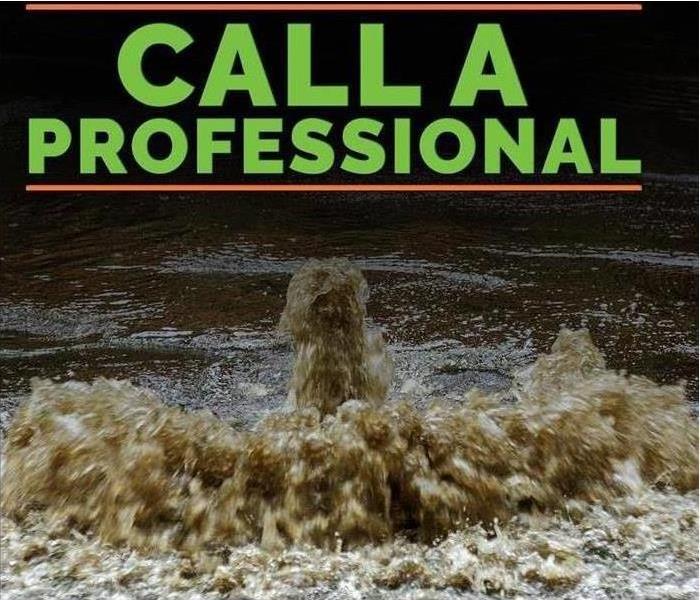 A sewer backup can be prevented, but it requires action before any storm strikes.
A sewer backup can be prevented, but it requires action before any storm strikes.
Wet storms in White Bear Lake, MN, often lead to a variety of water damage. In the event of a sewer backup, a storm can play a huge part in unwanted black water making its way into your commercial property. To prevent major damage to your business, it is crucial to know how to identify and prevent this type of secondary storm damage.
How Septic Problems Happen During Storms
Most problems with backflowing sewage come from the ground absorbing too much moisture from rainwater and blocking any further flow. Certain circumstances increase the likelihood of having a sewage problem during or after a storm:
- Increased blockage from storm debris such as fallen trees or their branches
- Pipes designed for both waste and stormwater flooded with water over the capacity
- Old or defective sewer lines connected to your business
- Trees grow roots deep into a sewage system and limit the water flow when needed most
Once any preexisting problems are dealt with, you should consider enacting preventative maintenance.
Stopping the Problem Before It Happens
A sewer backup can be prevented, but it requires action before any storm strikes. Regular inspections of the septic system connected to your business are a good way to prevent issues. Any untreated problems with the system may become an increased likelihood of backflow. The system may seem to function normally, but it may be unable to withstand the increased water flow of a storm.
The soil in your business’ drain field, an area where sewage equipment is located, should be kept clear of unnecessary water. Any runoff pouring into the area compromises the efficiency and capacity of the system when you need it.
Treating the Aftermath
Sometimes, despite best efforts, water damage from both black water and rainwater cannot be avoided. A local storm damage restoration company can help recover your commercial building and assets damaged by a storm. With proactive actions to reduce the risk of a sewer backup and lessen this damage, you can stop your business from going underwater both figuratively and literally.
5 CDC Recommendations for Reducing COVID-19 Exposure at Work
1/14/2022 (Permalink)
 To reduce COVID-19 exposure within your workplace, it's important that all employees wear masks.
To reduce COVID-19 exposure within your workplace, it's important that all employees wear masks.
When faced with a virus that passes very easily from person to person and from surface to people, how can you keep your employees safe from coronavirus exposure? The Centers for Disease Control and Prevention have some recommendations:
1. Implementing Procedures for Social Distancing
The CDC recommends maintaining about six feet between individuals. This is because respiratory droplets can spread from one person to another through normal talking during conversations. The six-foot distance reduces the chance for droplets to get into the mouth or nose of the other person.
2. Encouraging Employees To Wear Masks
When infected people wear a mask, they reduce the spread of their droplets onto surfaces or other people. Because it isn’t always clear when a person has been infected, it’s important that all employees wear masks or other cloth face coverings.
3. Improve the Ventilation System
Droplets carrying the virus can be circulated through the building when heating or cooling systems aren’t appropriately filtered. Limit coronavirus exposure by updating and improving the ventilation system in the workplace.
4. Hire Professionals To Clean and Disinfect
Choose a commercial cleaning firm with experience, training, and the personal protective equipment necessary to adhere to FDA-approved guidelines and safety procedures. These professionals should also have access to the disinfectants approved by the FDA for use in coronavirus cleanup efforts.
5. Encourage Correct Handwashing Procedures
Post charts or memos that encourage employees and clients or customers to wash their hands for at least 20 seconds, using soap and water. When soap and water aren’t available, provide hand sanitizer, such as near computers.
Your Efforts Affect Communities
These steps can go a long way toward reducing coronavirus exposure in your White Bear Lake, MN, workplace. The more you know about how the virus spreads and what is involved in covid-19 cleanup efforts, the better you can protect your employees, clients, customers, and families from getting the virus and spreading it throughout the community.
5 Steps in Sprinkler Maintenance and Accidental Discharge Prevention
1/13/2022 (Permalink)
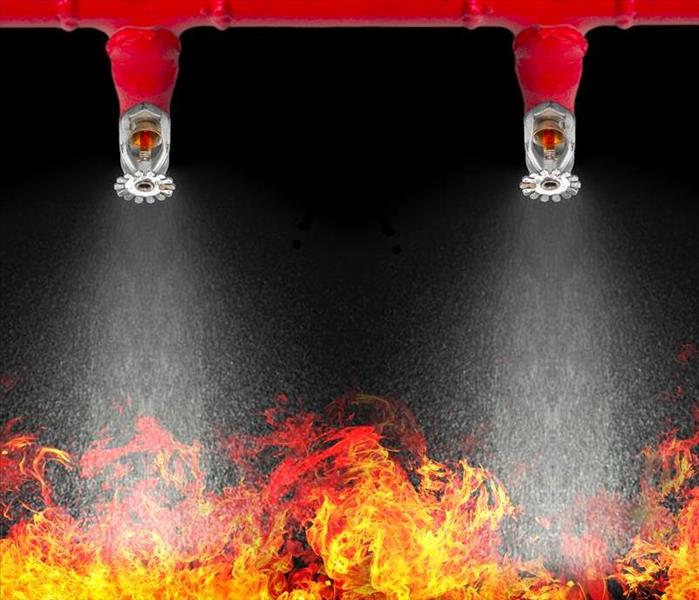 Consider these steps as regards Sprinklers Maintenance and avoid Accidental Discharges.
Consider these steps as regards Sprinklers Maintenance and avoid Accidental Discharges.
One of the big causes of damage to commercial properties is the accidental activation of fire sprinklers. The cost of repairing the water-logged property in North St. Paul, MN is much more than the cost of sprinkler maintenance.
The amount of water and water pressure that flows from fire prevention systems leads to thousands of dollars of damage. Because these systems are critical in preventing fire damage, it is essential that the heads and every other component are in good working condition.
How Sprinkler Maintenance Prevents Accidental Activation
One of the first steps in sprinkler maintenance is understanding the causes of accidental discharge. With this understanding, you'll be ready to take steps to avoid activation and prevent costly damage. Many heads are triggered by high temperatures. This heat either causes a metal link to melt or a glass bulb to burst. This leads to a rush of water. The simple mechanisms that provide a reliable response to fire also leave the system susceptible to untimely activation:
1. High Temperatures From Sources Other Than Fire
Any heads situated near light bulbs, cooking equipment, skylights, heating vents, and other sources of heat may discharge. Temporary sources of heat, such as construction equipment and high-powered lights are common sources of high temperatures. The solution to this problem is careful, preventative calibration of sprinkler heads. Part of routine system maintenance should include making sure that each head and its calibration is appropriate for the head's position and exposure.
2. Freezing Temperatures
A sudden drop in temperature won't activate a sprinkler head, but it can put enormous pressure on the pipes when the water inside freezes and expands. Even if a small part of the system is exposed to icy temperatures, pressure from the developing ice inside the pipes can cause broken components, cracked pipes, and forced valves. Preventative maintenance includes professional antifreeze solutions, added insulation, and building repairs such as sealing any cracks and gaps around doors and windows.
3. Rust and Corrosion
These sources of damage are a consistent concern for professionals in the fire protection industry. This is because the mix of water, oxygen, and iron is the perfect recipe for electrochemical corrosion. When this happens inside the pipes, it's hard to detect and prevent holes along the system. Routine testing is necessary to prevent unwanted discharge and, worse, failure of the system during a fire.
4. Mechanical Damage and Defects
This is one of the most common causes of accidental sprinkler activation. You may tighten a head too much or bump into a system component with a forklift. Sometimes, the simple passage of time and the resulting wear and tear can lead to worn parts. Routine inspections and professional replacement of parts can prevent unexpected gushes of water. Head guards are available that protect sprinkler heads from being bumped and broken.
5. Deliberate Sabotage
Whether it's a cigarette or match held up to a head or deliberate damage to the fire sprinklers, purposeful sabotage of the system is a leading cause of accidental discharges. The installation of head guards, putting sprinklers in hard-to-reach areas, and upgrading to industrial-strength components are some of the best ways to prevent sabotage.
Every minute following accidental activation can lead to thousands of dollars of professional water damage and restoration. Routine sprinkler maintenance and testing is the best way to ensure a system that works well and doesn't activate when it shouldn't.
Are You Covered After a Fire?
1/5/2022 (Permalink)
 Consider this information as regards your Coverage for better protect your White Bear Lake, MN house.
Consider this information as regards your Coverage for better protect your White Bear Lake, MN house.
A home fire can be a devastating experience. To watch something you have nurtured go up in flames is difficult, but as long as you and your family are safe, you can still recover from it, especially if you have a solid home insurance policy. Your coverage should help you pay for fire mitigation services as well as what you lose. There are a few things that aren't covered by a standard policy, though.
Important information to consider as regards your Coverage.
Loss
A loss from a fire is one of the many reasons it's important to keep your home insurance policy current. Rather than have to pay out of pocket for all the things that are destroyed or damaged in the fire, you can likely file a successful claim for several expenses:
- Damage mitigation
- Structure restoration
- Item replacement
- Short-term relocation
- Liability coverage for damage to adjacent properties
It's important to know which expenses your policy will cover if your home in White Bear Lake, MN catches fire. You don't want to be caught in the surprise of unexpected out-of-pocket costs after the fact. Review your policy with your agent and add any additional coverage you need.
Arson
The vital component in an insurance claim is that the triggering event has to be an accident. Fires that occur as a result of a fallen candle, a kitchen grease fire or a short in electrical wiring are likely to be covered. Fires that homeowners set on purpose are not. You cannot intentionally set a home fire and collect money on the damages from your policy. This is arson fraud, and it is a crime. Not only will your claim be denied but you will also probably face charges.
Wildfire
Natural disasters are often excluded from basic coverage. Some policies may cover damage from wildfires while others may not. Insurance companies assess not only your needs but their risks before developing a policy to offer you. Wildfires leave behind such widespread devastation that it would not be feasible for providers to automatically include such damage in a standard property policy. If your home is located in an area that is prone to wildfires, you may need an additional policy to cover that specific circumstance.
Vacant Home
Another occurrence that is not likely to be covered under your home insurance policy is a vacant home fire. If, for example, your vacation home catches fire while you are away, the basic policy may not cover the cost of mitigation or help you recoup any of the cost of replacing lost items. To make sure your valuable property is covered even when you're not living there, inquire about a vacant home policy through your provider.
The aftermath of a home fire can be very expensive, especially if your insurance policy doesn't cover every issue that you encounter after the disaster. Understanding the terms of your coverage is essential. Once you know what your policy does and does not cover, you can supplement it with other policies that match your needs more thoroughly.
It's better to have more coverage than you need than wind up in a situation where you don't have enough to compensate for your losses.
Why Call SERVPRO for Coronavirus Cleanup?
12/20/2021 (Permalink)
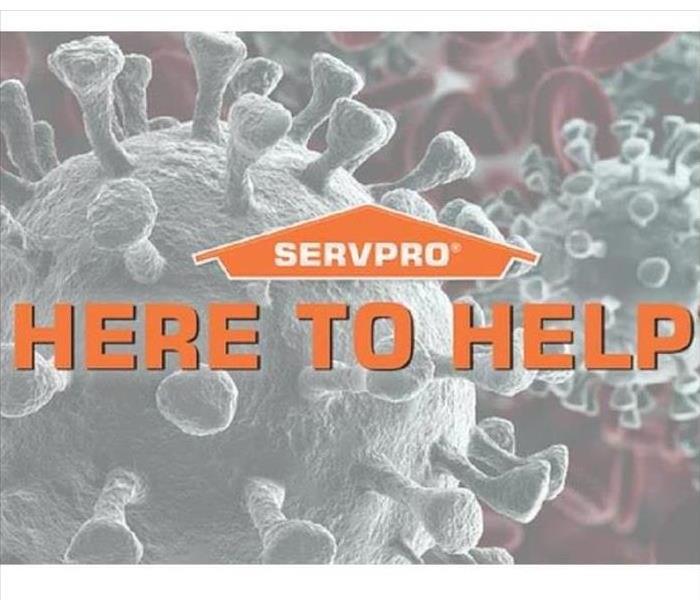 Disinfect and clean your White Bear Lake, MN commercial, and prevent Coronavirus.
Disinfect and clean your White Bear Lake, MN commercial, and prevent Coronavirus.
Coronavirus exposure is a serious concern for property owners in White Bear Lake, MN, and the struggle to prevent spreading contamination affects employers, employees, clients, and renters in many ways. Data suggests that the disease can spread as surfaces are exposed to the virus and people touch the same surfaces as long as a week after initial contamination, although the primary means of contamination is from one person to another through personal contact or droplets from coughs and sneezing. With concern for the people living and working on their property, many property owners are reaching out to property cleanup professionals for help.
How Does SERVPRO Proactively Clean for Coronavirus?
SERVPRO is a clean-up and restoration company with more than 40 years of experience. In response to the global virus, SERVPRO professionals are receiving updated guidelines and appropriate resources.
- Customers can expect the same adherence to the highest cleaning and sanitation standards.
- All coronavirus cleanup efforts are completed in accordance with information from the CDC and local authorities.
- The company's proprietary cleaning agent is certified by the EPA and has demonstrated effectiveness against viruses that are similar to COVID-19.
So far, there's no evidence that proactive cleaning will protect properties from new contamination as infected people move in and out of buildings. Experts are still testing disinfection products to find the best results.
Does Thorough Disinfecting Efforts Prevent the Virus?
Across the United States, SERVPRO is widely recognized as one of the top choices in cleanup and restoration. When qualified representatives perform proactive COVID-19 cleanup tasks, they may disinfect counters, desktops, light switches, doorknobs, bathroom fixtures, telephones, and other surfaces. Property owners must understand that the risk of coronavirus exposure is ongoing. As people come and go, there are many opportunities for surfaces to become contaminated again.
Recovery From Coronavirus Requires a Community Effort
Property owners can reach out to local authorities to learn the steps that individuals can take to slow the spread of coronavirus exposure. For effective results, property owners must work with the people in their buildings, professional cleaners, and local authorities for a united front against further exposure.
How Can I Keep My Employees Safe During Mold Remediation?
11/25/2021 (Permalink)
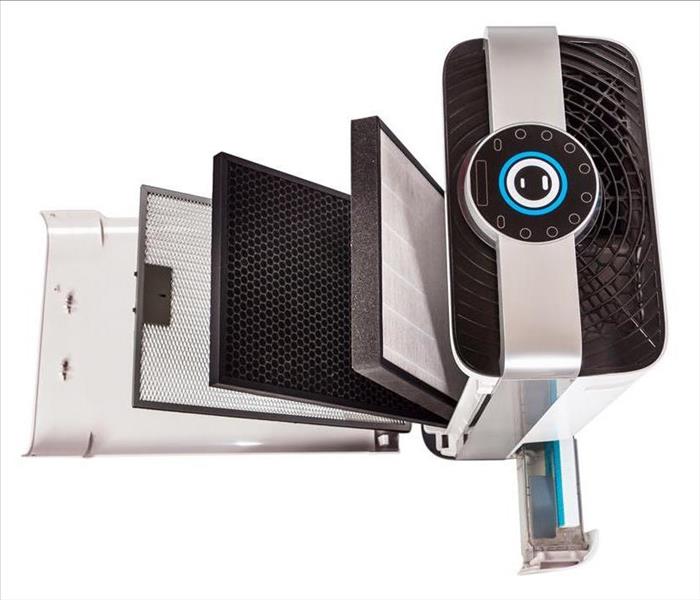 Mold is dangerous for the health of your employees. Contact mold remediation professionals to get rid of it.
Mold is dangerous for the health of your employees. Contact mold remediation professionals to get rid of it.
When you discover mold at your commercial building in North Saint Paul, MN, first and foremost, it's critical that you keep your employees safe. Mold spores are virtually everywhere, outdoors and indoors. Mold is a hardy little life form that doesn't require much to grow into a full-on infestation, and it can take hold in what seems to be no time. Humidity and a source of nutrients are all it needs to take up residence in your property. The initial step upon discovering the infestation is to contact mold remediation professionals. They can guide you through the mold removal process from start to finish, however minor or severe the problem turns out to be. In the meantime, it's helpful to know several options for keeping your employees safe until the mold is gone for good.
4 Ways To Protect Your Employees From Mold
1. Use Various Mold Containment Methods
The mold remediation team you hire will use the necessary containment systems to keep the mold and its spores confined as much as possible inside the affected area. Containment is perhaps the most efficient way of keeping the unaffected area fungus-free. One of the most common and effective containment methods involves utilizing negative air chambers. This system prevents mold spores from traveling through the building's ventilation system. Some technicians will create barriers with thick plastic sheeting. Whatever procedure the cleanup team implements, they will probably limit traffic to restoration professionals, if possible. This restriction will significantly help mitigate the risk of cross-contamination.
2. Install HEPA Air Filters and Purifiers
Air purifiers can be a very beneficial investment for workspaces, whether a problem exists or not. Opt for air purifiers with high-efficiency particulate air filters. These HEPA filters are fine enough to remove mold spores and keep the air as clean as possible for your employees. You can also get HEPA filters for your heating and air ventilation system.
3. Provide Your Employees Personal Protective Equipment
Even if the affected area is contained, your employees aren't guaranteed to be completely safe from black mold exposure. Providing them with PPE, most importantly face masks or respirators, will help keep them safe from breathing potentially contaminated air that can escape during the mold removal process.
4. Allow Your Employees To Work Off-Premises
If your employees aren't required to physically be on the premises during work hours, consider allowing them to work at home or in another remote location while the restoration is underway. You may even have another building in which they could set up an office for a while. Mold cleanup can take days or even weeks, depending on the extent of the damage. While you probably can't afford to totally close your business during this time, it's also essential to keep your employees safe.
Finding out your building has a severe case of mold growth can be anxiety-provoking, to say the least. Business must continue, but is it safe for your employees to work on location during the mold removal process? Keep these tips in mind, be proactive, and plan how you could best handle this situation well ahead of time in case it happens in the future.
How SERVPRO Helps Adjusters and Clients
11/15/2021 (Permalink)
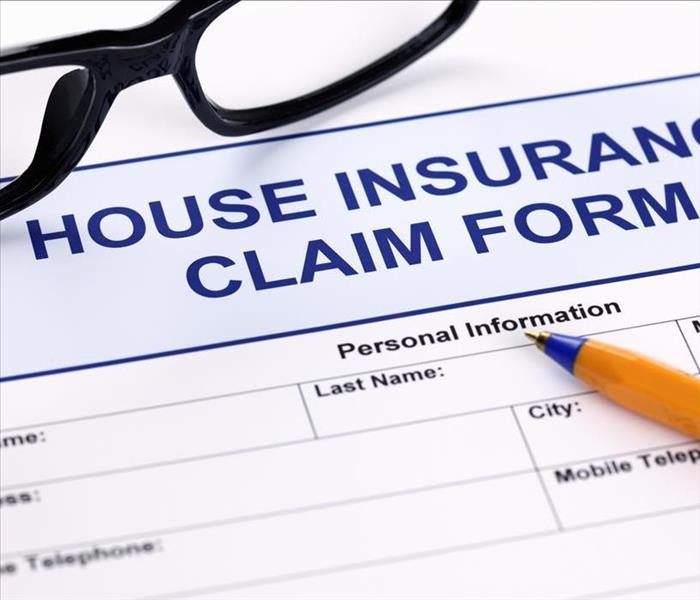 Our professional team is ready to help you with damage to your White Bear Lake, MN property.
Our professional team is ready to help you with damage to your White Bear Lake, MN property.
SERVPRO knows that as an insurance adjuster it is your responsibility to provide fast, efficient, and accurate service to your customers. Our franchise professionals can help you make it "Like it never even happened."
SERVPRO Helps Adjusters and Clients
We have built a reputation as an industry leader in water and fire cleanup and restoration for more than 50 years. Our franchise professionals are committed to acting with urgency when working with adjusters and clients to restore property while keeping costs low.
Why Choose SERVPRO?
Our restoration professionals have the training, equipment, and experience required to help with any insurance claim. Our franchisees are equipped to provide a variety of services:
- Emergency response to claims
- Pretesting
- Claims inventory
What Are the Benefits of Working With Our Company?
Restoring your customer's property is our top priority. Your customers can rest assured knowing that our team is working quickly and diligently to limit the damage to their property. Our claims team knows that restoring property is preferable to replacing it. Pretesting helps keep claims expenses down which helps both the client and the insurance adjuster.
With more than 1,900 locations in the United States and Canada, we probably have a franchise located near White Bear Lake, MN. We provide 24/7 emergency service. Our claims team can save you some legwork by providing your customers with photos of important items and an itemized loss inventory. All of our professionals are trained to IICRC standards for water and fire cleanup and restoration and receive ongoing training at our state-of-the-art training facility. Training is also available to insurance clients.
In addition to making sure our staff is highly trained, we only work with highly-qualified vendors. We provide a two-year labor and one-year materials warranty on all of our work. You can expect quick response times from our customer service team and we work with vendors, so you can focus on closing your claim.
What Does Our National Accounts Division Do?
Our National Accounts Division keeps the lines of communication open between our franchise professionals and insurance companies. This helps maximize satisfaction for insurance companies and their clients. The National Accounts Division also makes sure standards are met by performing internal audits, running background checks on employees, and completing job files for proof of work. Our National Accounts Managers are available to provide guidance for insurance professionals.
What Are Our Performance Guidelines?
Whenever you contact our team, your referral is reported and tracked at every step of the process. Our franchise professionals must fulfill 21 requirements to qualify to receive insurance referrals. Our team always uses the correct equipment and drying validation according to IICRC standards. We can provide metrics to demonstrate the highest levels of performance and customer satisfaction.
What Training Programs Do We Offer?
Our National Training Center provides employee certification training for local professionals, new franchise training for new location owners, continuing education for agents, adjusters, and restoration professionals, and an IICRC training program. Continuing education programs are available throughout the United States.
From industry-leading service to training, our team is prepared to help in whatever way the insurance adjuster needs. We are committed to excellent service for you and your customers.
What Your Home's Plumbing System Has To Say About a Possible Pipe Break
11/15/2021 (Permalink)
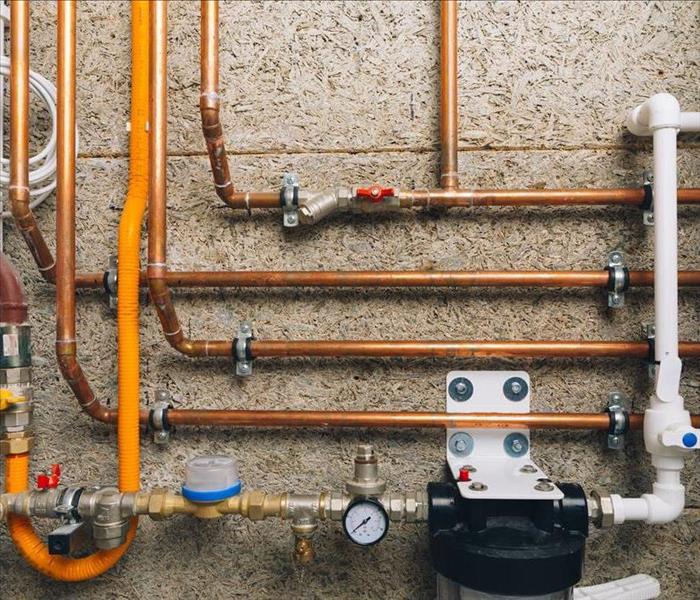 A pipe break in your North Saint Paul, MN, home can lead to water and mold damage.
A pipe break in your North Saint Paul, MN, home can lead to water and mold damage.
When the water pipes in your North Saint Paul, MN, home get noisy, they are actually letting you know about possible plumbing problems. You may hear hammering, bangs, and thumps, or squeals; any of these sounds could give you the chance to provide repairs before water damage from a pipe break happens.
Identify Your Home's Warnings of a Pipe Break
It's not uncommon for homeowners to feel a little spooked when they hear suspicious sounds from their water pipes. There's a good reason for this; plumbing mishaps, such as a pipe burst or drain backup, can leave you with a lot of messy, expensive cleanup. When you know what your pipes are trying to communicate, it's much easier to fix broken pipe before it leads to significant water damage.
Banging or Hammering
Any sounds similar to thumping and banging are likely caused by problems with water pressure or flow. For example, if a faucet is opened and then shut off suddenly, the pressure from rushing water causes a loud bang as the water hits the closed valve. This is known as a water hammer. Too much air pressure can also cause humming; this happens because too much pressure causes the pipes to vibrate.
Air bubbles are an example of a water flow problem. Pockets of air may become trapped in the pipes for a variety of reasons, and you may need help from a plumber to resolve this issue.
There are several forms of damage that could arise from water hammers, too much pressure, and an inconsistent flow of water:
- Weakened joints
- Damaged connections
- Waterlogged air chambers
- Potential pipe break
Remember, it's less expensive to pay for maintenance and small repairs than for large-scale repairs and professional water damage cleanup.
Gurgling or Sucking
If the pipes are becoming clogged or there's an obstruction somewhere along the line, you may hear a gurgling sound. The culprits could be a buildup of soap scum, hard water residue, or something that shouldn't have been flushed. Professional drain cleaners can usually remove the problem and, as a result, eliminate the gurgling, sucking sound.
Squealing
A high-pitched squeal, whine, or whistle often indicates worn components within the faucet, valves, or plumbing line. You should be able to determine the location of the worn part simply by listening. Homeowners can often handle faucet repairs, but washers and other components deep within the plumbing system may require expert attention. This is particularly important if the whine is situated near any gas lines.
Rattling and Clanking
Sometimes older pipes become detached from the walls, ceilings, or floors. There are many possible reasons for this:
- Rust has weakened fasteners.
- Very hot water caused copper pipes to expand, loosening fasteners.
- Structural elements of the home have decayed and no longer hold fasteners.
The plumbing system is usually hidden behind walls and between floors and ceilings. This makes it difficult for homeowners to address the problem and can make it very difficult to identify the exact location of the missing fastener.
You probably don't want to hear noisy pipes, but when your pipes do speak up, respond as quickly as possible to avoid the trouble and expense of a pipe break.
Tips for Sump Pump Maintenance
10/29/2021 (Permalink)
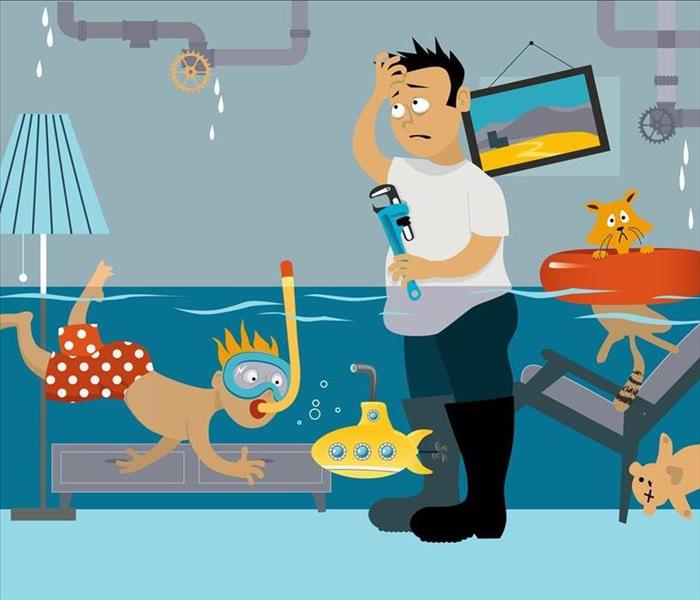 The maintenance of the sump pump will avoid a flood in your White Bear Lake, MN home.
The maintenance of the sump pump will avoid a flood in your White Bear Lake, MN home.
The space in your home in White Bear Lake, MN, is most likely to flood in your basement. You can have a strong foundation and take all the recommended precautionary measures to keep water out of the lowest level of your house, but a heavy storm may still overcome all the barriers you put in place. A sump pump is a smart addition to any basement, particularly if your home is in a flood plain, but it only helps you if you keep it in good working order. Here are some tips on how to do so.
How To Maintain Sump Pump
Keep Sump Pump Pathways Clear
Allowing water to flow out of your house is the pump's main job. The key to good pump maintenance is keeping the path of the water unobstructed. There are four main areas of the pump where clogs are most common:
- Intake screen
- Pit
- Vent hole
- Discharge pipe
If dirt or debris gather in any of these areas, the pump can overflow, dumping the water back into the basement it is designed to protect. By keeping the pump clean and clear of blockages, you can ensure that it is able to do its job and move water out of the basement in a timely manner.
Maintain a Regular Testing Schedule
Even if your sump pump is clear of debris, you can't always tell if it's working by looking at it. Fortunately, the pump is pretty easy to test. Fill a bucket with water and pour it into the basin. This should trigger the float and activate the pumping mechanism. You'll know it's working properly if the water drains quickly.
Flood damage mitigation experts recommend that you test your pump at least once a month, particularly during rainy seasons. Frequent testing ensures that your pump is ready to protect your basement if a particularly heavy storm hits your area.
Ensure Access to Power Sources
No matter how great a shape your pump is in, it doesn't work if it isn't connected to a reliable power source. Frequently inspect the power cord for flaws and plug it into a ground fault circuit interrupter outlet. Additionally, you must make sure the GFCI outlet is located above the flood line of your home. It can't power your pump if the flood itself causes it to malfunction.
It's also good to have a backup power source. A generator can supply your home with power even if the municipal structure fails. Many sump pumps come equipped with their own battery backup, so that may be a factor you want to consider when choosing one for your home. If you select this option, you need to check the battery periodically to make sure it's still strong.
A sump pump can be a lifesaver for your basement or the lowest level of your home during a heavy storm. While the best protection from flooding is prevention, that's not always feasible, particularly if your home is located in a flood plain. A reliable pump helps you get floodwater out of your home quickly before it can cause a lot of damage.
How To File a Fire Insurance Claim
10/20/2021 (Permalink)
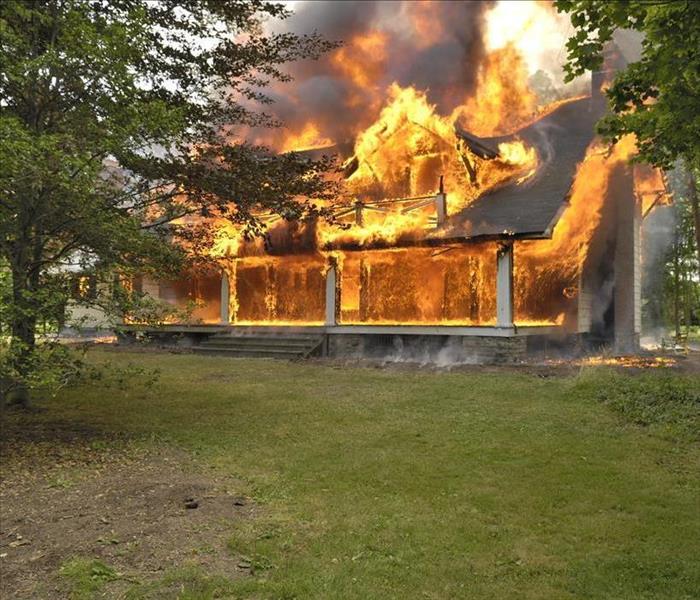 Fill a fire insurance claim to get repaired your home in White Bear Lake, MN.
Fill a fire insurance claim to get repaired your home in White Bear Lake, MN.
With wildfires and other fire risks increasing due to extreme weather events, homeowners need to know how to file a claim when they need fire restoration. The earlier homeowners file a claim, the sooner they can get their damaged property repaired or replaced.
5 Tips for Filing a Fire Insurance Claim
Whether your home has been destroyed or partially damaged, the first step to getting back to normal is to file a fire insurance claim. These tips can help you get started.
1. Request a Partial Payment Upfront
Many people who have been through a house fire have immediate needs that can not wait on the insurance company to finish processing a claim. If you need money for essential items, such as clothes or toiletries, ask your insurance adjuster if the insurance company can issue you a partial payment to cover these items. However, avoid purchasing anything you do not need, because the insurance company may not cover items it deems to be unnecessary. The amount you receive will be deducted from your final settlement.
2. File Your Claim as Soon as Possible and Follow Up
The fire restoration process can not begin without the insurance company doing its part. As soon as your family is safe, call your insurance company to report your claim. If your adjuster requests anything from you, such as an inventory of damaged items, photos, receipts, or estimates, return these items promptly. Keep track of all of your communication with the insurance company. Keep original documents and make a copy for the insurance company. If you don't hear back from your insurance company, call them to find out what the delay is. If the company is not being cooperative, you may want to speak to an attorney about what the laws in White Bear Lake, MN, are regarding how long the insurance company has to settle your claim.
3. Track Your Living Expenses
Most homeowners' policies include coverage for loss of use. This coverage provides reimbursement for expenses incurred while your home is not habitable. However, it only covers the difference in what you would normally spend if you were living in your home, versus what you are spending to live in a hotel or rental. Extra expenses might include meals out, laundry services, and the cost of a hotel room. If you stay with friends or family, your insurance may reimburse them for extra costs incurred to have you in their home.
4. Keep Paying for Your Insurance
Some people think that they no longer need to pay for their insurance because their home has been destroyed. However, homeowners' insurance includes liability protection, so you should keep paying for it until you replace that coverage.
5. Submit Anything You Find After the Claim Is Closed
Insurance companies often print something on checks about the payment being "in full" or final, but this is not legally binding. If you discover additional damage that requires smoke cleaning or other restoration services, you can still submit the damage for reimbursement.
Your home is probably your most important and most valuable asset. It is important to stay on top of your insurance claim to ensure fire restoration is completed as quickly as possible.
Tips for Keeping the Crawl Space Dry
9/24/2021 (Permalink)
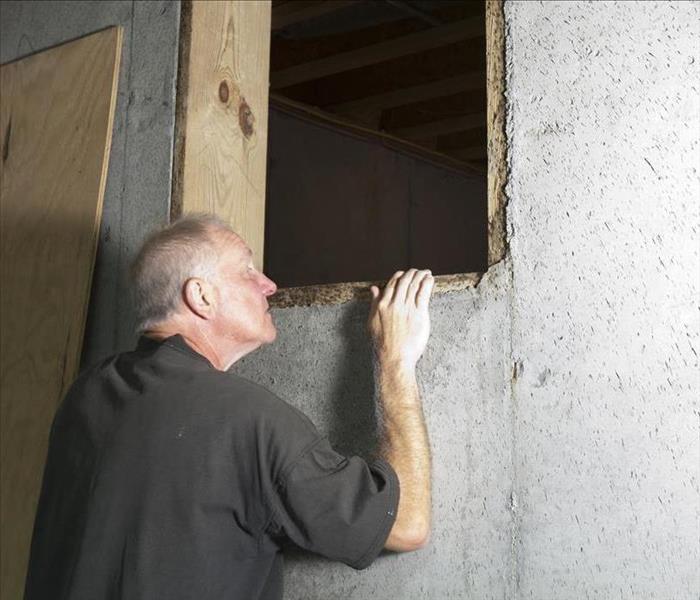 Maintain your crawl space dry in your White Bear Lake, MN, home to avoid further damage.
Maintain your crawl space dry in your White Bear Lake, MN, home to avoid further damage.
As an adjuster, it is likely that you frequently assess damage due to a wet crawl space in your clients' homes. Many homeowners don't think about the common ways that water seeps into this area at the base of their houses or what they can do to prevent this type of damage. Here are five tips you can share with your clients in White Bear Lake, MN, to help them protect their homes from extensive water damage in the crawl space.
How to Keep The Crawl Space Dry
Mitigate Damage Quickly
Flooding in any area of a home has the potential to affect the crawl space. SERVPRO's water restoration specialists understand the importance of quick, thorough assessment. They arrive on-site within hours to conduct their initial investigation:
- Locate the source of the water loss
- Inspect the surrounding area and assess damage
- Track the flow of the water into other areas of the home
- Create a task list for every part of the home that needs mitigation.
The response team doesn't just stop at the most obvious damage. This fast and thorough approach is the reason many providers select SERVPRO as a preferred vendor for their clients.
Improve Drainage
Sometimes water damage comes from outside the home. Improper or poorly planned drainage can lead to a wet crawl space. Every homeowner should inspect gutters and downspouts on a regular basis to make sure that they are not clogged and that the bottom of the spout is pointed away from the base of the house. It's also important to pay attention to the grading of the lawn. The slope of the grading should direct water away from the foundation so that it doesn't seep inside.
Turn Off Water Hoses Near the House
Even something as simple as leaving a water hose or the sprinkler system on too long can cause water damage. A running hose left in the flowerbed by the house can fill it up faster than the ground can absorb the water. Broken sprinkler heads must be replaced as soon as possible to prevent a flood in one particular area when it's turned on. Homeowners benefit from paying close attention to the effects of lawn care on their homes.
Repair Broken Pipes
Broken pipes in any area of the house can cause water to trickle down into the crawl space. Even if the pipe is repaired quickly, such a large water loss can cause more problems than are immediately apparent. Any time you inspect the damage at a client's home that was caused by a pipe burst, it's a good idea to also check all the areas beneath its location.
Have a Solid Foundation
Advise your clients to have their foundations professionally inspected at least once a year. Visible cracks may not appear for a while, and in the meantime, small fissures leave their crawl spaces vulnerable to flooding. Rain, snow, ice, and groundwater can all cause issues if they find a way into the home through the foundation.
A wet crawl space can have an effect on the entire house. Unmitigated water damage can cause issues that cost you and your clients a lot of money. By sharing these tips, you can help them prevent most of these problems.
The Black Mold Remediation Process
9/17/2021 (Permalink)
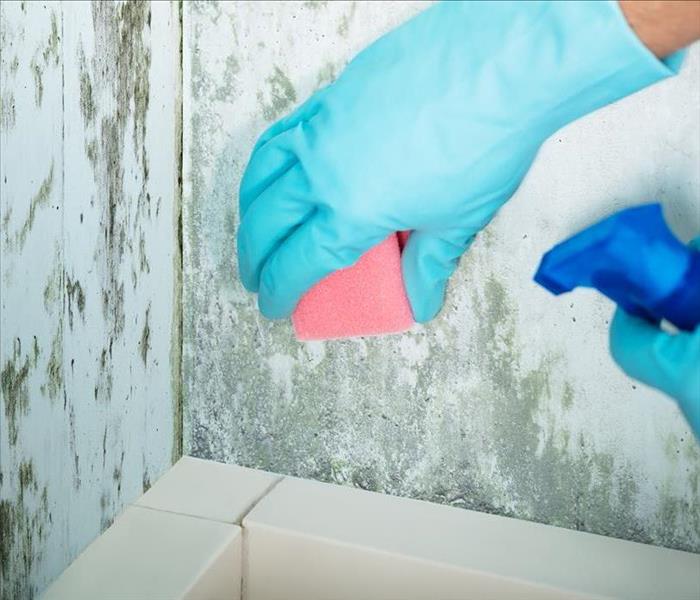 Black mold remediation must be realized by a specialized team in your North Saint Paul, MN, commercial property.
Black mold remediation must be realized by a specialized team in your North Saint Paul, MN, commercial property.
Mold remediation is a time-consuming job that requires specialized training and equipment. Although many property owners assume that this can be done safely without involving experts, the truth is that mold spores move easily through the air and can quickly spread throughout your North Saint Paul, MN, commercial property. Once those spores find a place to land, it only takes a small amount of moisture and a food source for black mold or other types of fungi to support the growth of a colony. Certified mold cleanup and mitigation professionals are equipped to safely and effectively deal with this problem.
The Critical Steps of Black Mold Remediation
For lasting protection from mold-related damage, professionals move through several steps, beginning with mold assessment and ending with a final evaluation:
Assess and Identify the Moisture Source
Mold cannot grow without a source of moisture. The moisture source could be something as obvious as a leaking pipe or it could simply be the result of high humidity levels in a bathroom. In many cases, mold growth begins out of sight in hidden areas behind walls or under carpeting. This assessment includes samples from the air and surfaces and helps professionals determine the extent of the damage.
Remove the Source of Moisture
Getting rid of the moisture source is the first step of remediation. This includes repairing any broken pipes and fixing leaks. It could involve major tasks such as repairing a damaged ceiling or replacing an outdated plumbing system. This task is one of the most important areas of focus because doing it well is the best way to avoid future trouble.
Prevent Cross-Contamination and Spread
Tiny mold spores travel on moving air, clothing, hair, and skin. When property owners attempt to DIY mold cleanup, they inadvertently spread spores and create more trouble for themselves. One of the things professionals do before entering a mold-infected property is equipment themselves in personal protective gear:
- Protective clothing
- Helmets
- Gloves
- Boots
- Goggles
- Masks
Professional cleanup includes sealing off doors and windows between the affected area and unaffected areas. Contamination containment also involves dust suppression using special misting equipment.
Remove and Dispose of Waste
Anything that was contaminated by black mold or other fungi must be removed appropriately to prevent more contamination. This often involves double-bagging materials and treating the bags with a specialized detergent. Proper disposal of the containers is undertaken to ensure that spores aren't spread to other properties. During this step, mold remediation professionals use products and techniques approved by the EPA.
Disinfect and Dry All Surfaces
Properly disinfecting all surfaces in the affected area is another crucial step in the remediation process. A variety of techniques are used to clean porous and non-porous materials. Some of the supplies used during this step include wipes, wire brushes, HEPA vacuums, and polyethylene containment materials. Once all materials have been cleaned, technicians use sunlight, fans, heat sources, and dehumidifiers to make sure everything is completely dry.
Test and Evaluate Cleanup Results
Some mold remediation professionals complete this test, but many arrange for a third party to take air and surface samples. This testing is done to determine that the moisture source has been removed, all mold damage has been repaired, and air quality levels are appropriate.
Black mold remediation is a tedious task that requires a lot of specialized training and equipment. Leave this work to North Saint Paul, MN, professionals who have access to the necessary supplies.
Landscaping Tips for Flood Control
8/26/2021 (Permalink)
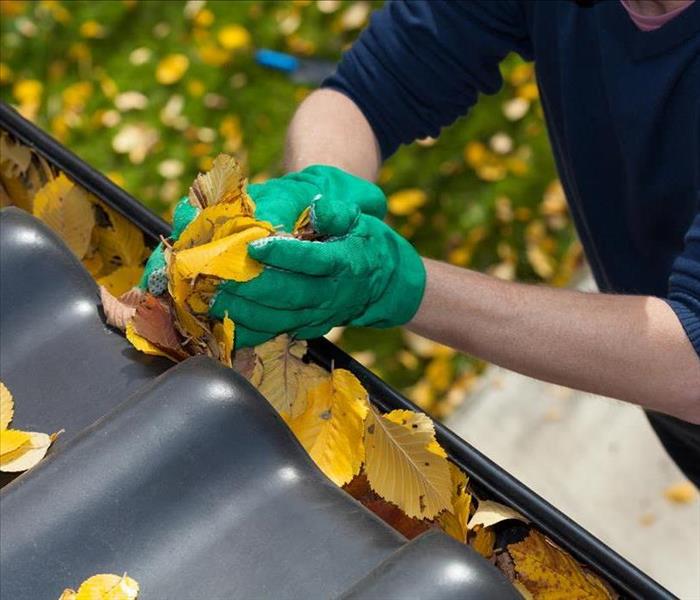 Maintaining the rain gutter clean will prevent water damage in your White Bear Lake, MN, home.
Maintaining the rain gutter clean will prevent water damage in your White Bear Lake, MN, home.
A heavy storm in White Bear Lake, MN, can pose a threat to your home. If you live in an area prone to outside flooding, you know what a difference even small changes can make when it comes to protecting your property.
Here are a few ways your landscaping can help divert floodwater away from your home.
Driveway Update
One of the common culprits in flooding is a concrete driveway. Unless the original design includes proper drainage structures, water from a rainstorm is likely to either flood municipal drains or direct unwanted flow toward your house. A good alternative is to find material that works with your natural landscape and allows water to absorb into the soil beneath the drive:
Rather than leave flood water with no place to go, these driveway materials allow it to soak into the soil where it belongs. This helps keep your home safe.
Heavy Mulch
Another problem with flooding is the debris that tends to spread everywhere. Mulch is great for your garden, but it's not something you want to end up in your living room. Instead of using wood chips or some type of material that can easily be washed away, choose a heavier mulch. Many synthetic mulches provide the same protection to the plants and still stay in place when excess water from a storm is present.
Rain Garden
If you want a low-maintenance landscaping idea, a rain garden is right up your alley. It can also help divert water away from your home during an outside flooding event. Choose native plants that have different moisture requirements. Plant the ones that can withstand a lot of water in the middle, a lower portion of the garden, and place the ones that don't need as much water around the perimeter. The rain will run down to the middle of the garden and pool there, giving all your plants exactly what they need and keeping the water away from your home.
Downspout Direction
Your gutters and downspouts are prominent factors in rain drainage around your home. Of course, you want to make sure that the gutters stay clean and free of debris. It doesn't do any good, however, to efficiently drain water off the roof if it just ends up gathering around your foundation. Flood damage experts recommend diverting rain spouts away from your home to prevent flooding.
Swales and Ditches
A swale is useful in residential neighborhoods to keep water from your yard out of your neighbor's property, and ditches keep runoff from flowing into the road or municipal drains. The water flows down the incline where it pools at the bottom. Many homeowners line the bottom of the swale with rocks and plant vegetation on the sides to slow the flow of the water.
You can't control the weather, but you can take specific steps to manage the effects it has on your home. By choosing landscaping options that use outside flooding to your advantage, you not only protect your house but also can sustain a beautiful lawn and garden
Keep It or Toss It After a Fire
8/17/2021 (Permalink)
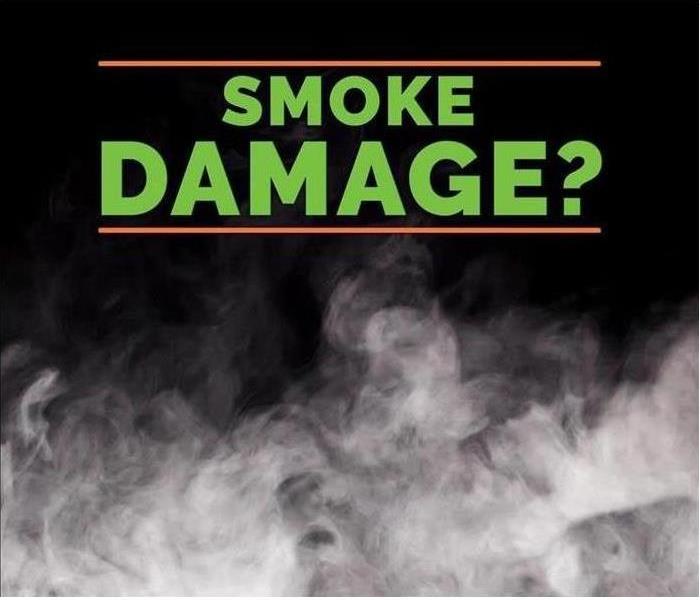 After suffering fire and smoke damage you might be wondering what you can keep and what you should toss.
After suffering fire and smoke damage you might be wondering what you can keep and what you should toss.
When the ash has settled after a home fire in North St. Paul, MN, there's still a lot of recovery work to do, and some of the most difficult work is still ahead. Sifting through the rubble and deciding what to keep and what to throw out is one of these troublesome steps. You may find several items that can be salvaged and repaired after suffering fire damage, such as furnishings and jewelry.
There are some items that must always be thrown away:
Food Items
Any foods that were stored in open containers or permeable packaging should be thrown out immediately. Foods that were sealed in cans, jars, and other containers may also be contaminated. The heat from the fire can cause food to spoil. Foods may absorb toxic chemicals and pollutants.
Food in the refrigerator may be safe unless
- The fridge smells smoky.
- Soot is visible inside the fridge.
- The refrigerator lost power during or after the fire.
- Food has an odd odor.
- Frozen food isn't cold or hard.
If you have any doubts or concerns about your food, throw it out and replace it. Remember fire damage isn't limited to areas where flames were present; high levels of heat can also cause damage.
Medications and Cosmetic Products
Anything you plan to consume or put next to your skin should be carefully inspected after a fire. This includes any medications, vitamins, supplements, and similar products. If you don't think these items were close to the flames, inspect their storage area for soot, fire extinguisher dust, and similar damage. Watch out for warping on bottles and other containers. Any sign of these damages means that the products aren't safe to use.
When in Doubt, Throw Them Out
Even if these items were directly exposed to flames or smoke, the high temperatures in the vicinity of the fire can damage items. If you aren't sure, ask qualified fire restoration and cleanup professionals for help. Talk to your fire insurance representative to learn more about your fire damage coverage.
Mold Prevention After Flooding
8/17/2021 (Permalink)
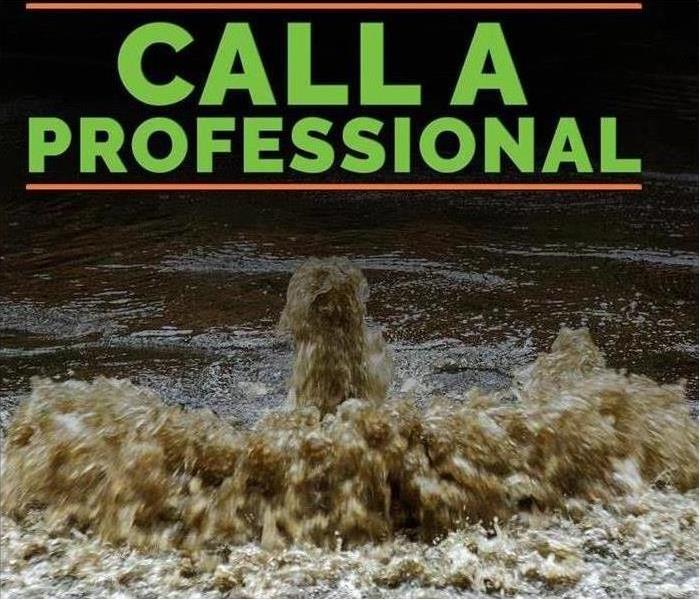 Call a professional after flooding to clean up and to avoid further damage.
Call a professional after flooding to clean up and to avoid further damage.
As storm season approaches, it is important to brush up on your damage prevention strategies. While no homeowner likes to think about what a bad storm in North St. Paul, MN, could do to the house, planning what to do if flooding does occur can help you prevent secondary damage such as mold growth. Here are several problems that can lead to a fungus infestation and what you can do to resolve them quickly before that happens.
Excess Water
A common problem after a storm is excess water. There are several places in your home where floodwater tends to pool:
- Basement
- Crawl spaces
- Attic
The longer water remains in your home, the more damage it causes. One of the first things that water restoration specialists will do when they arrive at your home is pumped the standing water out of your house. Their industrial pumps can make this process go smoothly and quickly. To minimize flooding, it is smart to have a sump pump installed in areas of your home that are most likely to flood during a storm.
Saturated Structure
One of the issues that causes the most storm damage is the saturation of parts of the structure itself. Porous materials such as drywall and floor tiles don't stop water from seeping in. If the damaged wall isn't torn out and replaced, mold growth can occur. The fungus can start to grow in as little as 24 hours after a high level of moisture settles in, so it's important to mitigate water damage in a timely manner.
Damaged Items
Bacteria in flood water can aid the growth of mold and cause unpleasant odors. It's important, therefore, to include every item in your home in the mitigation process. Anything in your home that is touched by contaminated water needs to be cleaned or thrown out.
Mold growth and other secondary damage don't take long to take root in your home after it floods. Quick, professional remediation is the key to avoiding these problems.
Bathrub Overflow Water Damage
8/17/2021 (Permalink)
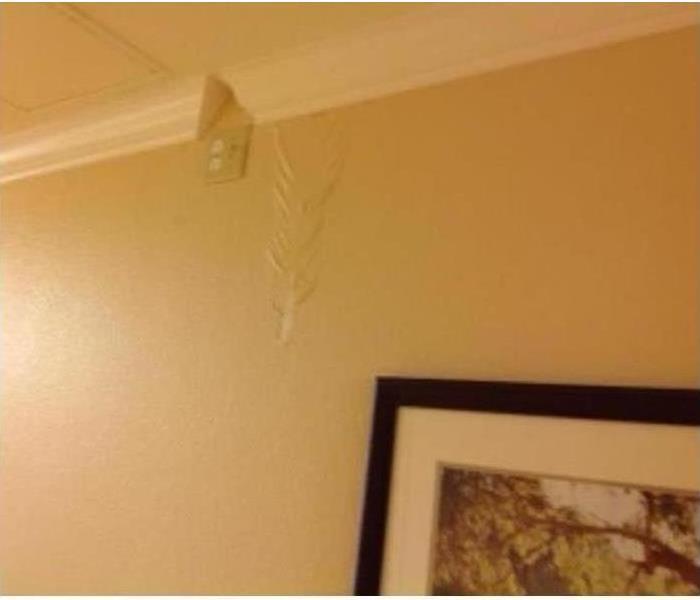 Water damage caused by an overflowing bathtub in Saint Paul, MN.
Water damage caused by an overflowing bathtub in Saint Paul, MN.
Water damage causes the most home insurance claims. Torrential rains, bursting pipes, and bathtub overflows are just a few potential causes of water damage. In fact, water damage is often caused by an overflowing bathtub. There are several reasons why this can happen, but no matter the cause, a professional water remediation company will need to step in to help you with the mitigation process.
No matter the cause of your bathtub overflow and water damage, you should know the six major reasons why this event can cause damage to your home in Saint Paul, MN.
Leaky Ceilings
If your bathtub is on the second floor, even if the overflow is quickly caught it could make small bubbles in your downstairs ceiling. Water could begin leaking, and you can have discoloration. If the amount of water is large, it could make your ceiling sag. Avoid entering the room if this happens, since more water or debris could fall and hurt you. Keep everyone out of the area until you have it fixed by an experienced technician.
Wet Drywall
An overflowing tub can easily damage drywall. It can weaken so badly when wet that you cannot fix it, and must be replaced. If there is a significant amount of water running down the walls, you should shut off the electricity. An electrician and plumber will need to check out the damage in this case along with SERVPRO professionals to ensure the leak is fixed and your home is safe and restored.
Ruined Flooring
Your floors can be ruined as well, especially wood or linoleum.
Damp Carpets And Furniture
Water coming through the ceiling can damage appliances and furniture. Mold can start to grow in your furniture and carpeting and can create a bad smell.
Bacteria Growth
Even if the water is clean, it can still cause bacteria to grow that could be harmful. This threat can develop when a significant amount of time passes before you get it cleaned up. The bacteria can grow with warm temperatures and time.
If your bathtub overflows, shut the source of the water off right away and give SERVPRO. We understand how damaging water can be and will be out to your property as quickly as possible to prevent more damage.
Plan Now To Avoid Frozen Pipes During Winter Temperatures
8/16/2021 (Permalink)
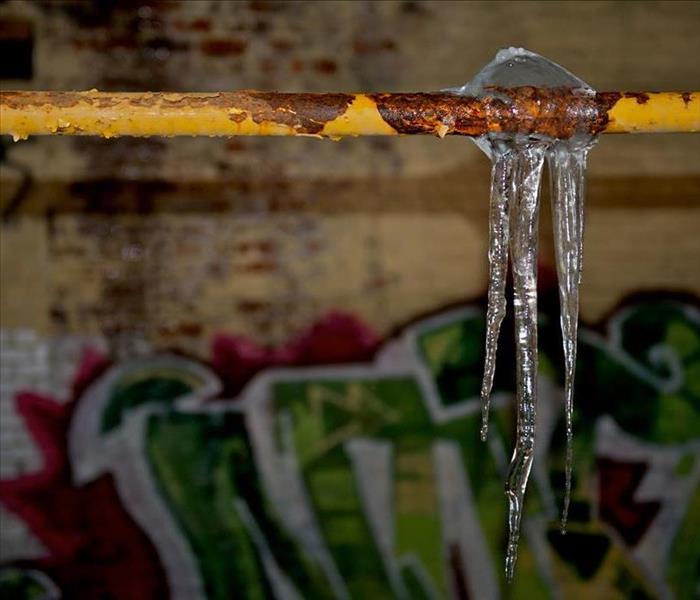 Cooler temperatures can freeze the pipes and break them in your commercial property in White Bear Lake, MN.
Cooler temperatures can freeze the pipes and break them in your commercial property in White Bear Lake, MN.
Once the summer temperatures fall and cooler weather settles in, there are many possible causes of water damage for business owners to consider. One of the most important situations to avoid is the damage that happens after freezing temperatures lead to broken pipes.
Prevent Frozen Pipes
Before jumping into the steps to take after the damage has happened, consider some steps you can take to protect your pipes and, hopefully, prevent them from breaking:
Identify areas of possible weakness, such as pipes that are exposed to the weather, pipes in unheated parts of the building, and unprotected pipes along exterior walls.
Drain water from hoses and pipes that won't be used during cold weather, such as the sprinkler system.
Remove exterior hoses and store them inside. Drain hoses and pipes before storing them for the winter.
Add insulation to exterior walls, basements, and other cold rooms in the building.
Consider products such as pipe sleeves and insulated covers. These protective covers could provide just enough warmth to keep water running when it's needed.
Remember that water expands when it freezes, so when the water in a pipe becomes cold enough to freeze, there's a lot of pressure from the inside of the pipe. The steps you can take to prevent broken pipes are effective ways to avoid a lot of water damage.
Keep Your Pipes Warm During the Winter
There are several other steps you can take to protect your commercial property in White Bear Lake, MN. These include setting your nighttime thermostat to a temperature above freezing, letting a small amount of cold water drip from the faucets during very cold weather, and opening cabinet doors to allow heated air to flow freely around the pipes. If your business is going to close for several days or longer, turn off the water to the building. Otherwise, you may return to serious flooding and the need for expensive water cleanup.
Respond to Frozen Pipes
Sometimes, in spite of your efforts, the pipes may still freeze. Even if there's no obvious damage, you may find that just a small trickle is all you're getting from the faucet. This is a clear sign that the pipes are frozen:
Leave the faucet open and begin looking for the section that's frozen.
Use a space heater, electric heating pad, or another gentle source of heat to treat the frozen section of the pipe. You could also warm up some towels to wrap around the pipes. As you slowly thaw the ice inside the pipes, you'll see a stronger flow of water from the faucet. Don't ever use any open flame, blowtorch, or propane heater to warm up the pipes.
Continue applying gentle heat until you have full water pressure from the faucet.
If you have one frozen pipe, there's a good chance that there are other clogged areas in the pipes. Test all of the faucets on your property.
If a burst pipe has caused serious water damage, contact local cleanup and reconstruction professionals. The sooner you respond to flooding and damage, the better you can avoid further expense and inconvenience.
A Country-Wide Disaster Recovery Effort
7/29/2021 (Permalink)
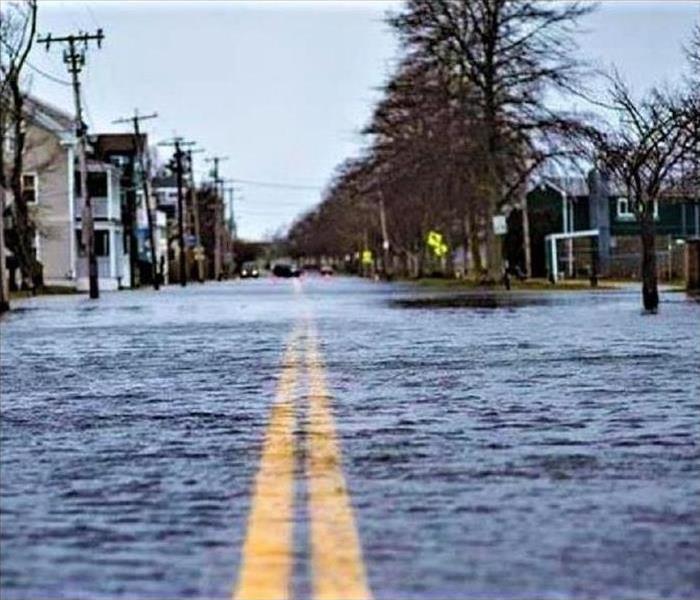 SERVPRO is ready to respond Faster to Any Size Disaster
SERVPRO is ready to respond Faster to Any Size Disaster
When major disasters affect communities, SERVPRO is ready to respond Faster to Any Size Disaster and will get you back on your feet as quickly as possible. Each disaster recovery team in North St. Paul, MN, has access to heavy equipment and commercial-grade supplies through the support of corporate leaders nationwide. When many residential customers are affected by widespread flooding, storms, or other disasters, national operations managers offer vital support:
- Seamless communication
- Increased help through temporary labor
- Strategic placement of additional equipment
Some of the best restoration professionals in the industry work with corporate teams to ensure timely mitigation and recovery.
Valuable Experience and Training
Residential customers throughout the country have been assisted through SERVPRO's storm response efforts. Teams of technicians have worked to help communities recover from California wildfires, hurricanes, major flooding such as the 2007 Chicago situation, and the Polar Vortex of 2014. There's a lot of reassurance possible with the knowledge that disaster recovery teams have dealt with all of the most common types of disasters.
Strategic Placement of Teams
Throughout the years, a network of storm response teams has been established to cover the country. These emergency response teams are ready to go every hour of the day and every day of the year, including holidays. Franchise professionals have also participated in training to prepare for unpredictable situations. This is particularly valuable when natural and criminal forces (such as major floods that force people away from their neighbors and leaving homes vulnerable to looters) combine to cause widespread uncertainty.
A Timely Response
A fast response is vital to preventing lasting storm damage. It doesn't take very long for building materials, upholstery, and carpeting to absorb floodwaters, along with any contaminants picked up by the water. If allowed to sit for more than a day or two, mold, mildew, and contaminants can cause long-lasting damages and destruction.
During large storms and their aftermath, SERVPRO corporate helps local franchises provide disaster recovery. Training in most types of emergencies is provided to franchise teams. Equipment and personnel are placed strategically throughout the country to ensure an appropriate and timely response from some of the best recovery technicians available.
Avoiding Higher Insurance Rates When Filing Claims
7/29/2021 (Permalink)
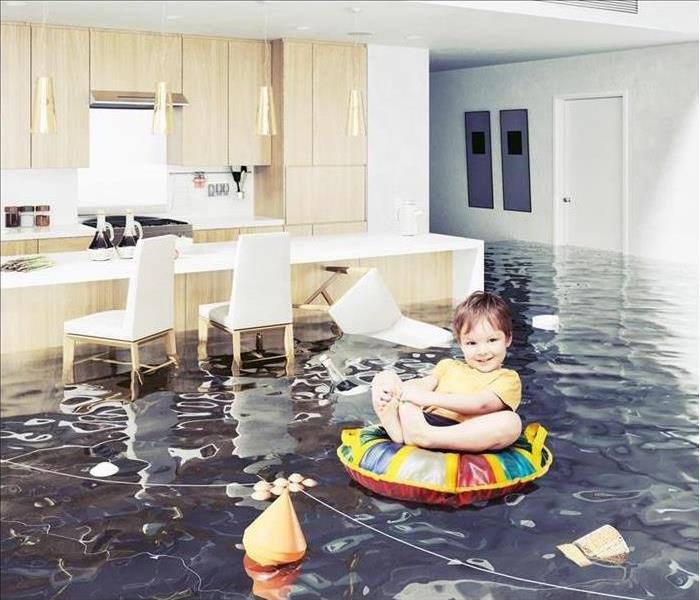 If you experienced significant flooding, contact a local mitigation company.
If you experienced significant flooding, contact a local mitigation company.
It is not uncommon for homeowners to worry about their insurance rates after having to file an insurance claim because of sudden water damage or a home flood. Unfortunately, regardless of the reasoning for the claim or loss, a rate hike is always a possibility after filing. However, some considerations may limit or exacerbate your risks.
3 Considerations To Limit Or Exacerbate Your Insurance Rates
1. Filing Too Many Claims
While your insurance company is there to protect you against financial losses due to unpredicted damages, they still do not want to pay out more than they have to. If you are a client who continuously files claims, then the insurer will likely raise your rates to reduce their expenses. Every insurer uses algorithms to predict the average level of payouts for any given year or client; when a client surpasses those expectations, an insurer must make adjustments to protect other clients and their interests. Unfortunately, some policyholders who file too many claims may even lose their policy.
2. Purposeful or Neglectful Damage
If the damage to your property is a result of intentional damage or neglect, then your insurer will almost certainly raise your rate. An intentional incident that causes an insurance claim may cause your insurer to see you as a financial risk to the company.
3. Accidental Damage
Most insurers will not penalize a good client when damages are accidental or unpredictable, especially if they do not routinely file claims. When an accident occurs, your insurer will want you to work with an accredited mitigation company in North St. Paul, MN, and they will follow the process closely.
While it is natural to worry about rate hikes after water damage, you still may need to file an insurance claim for extensive damage. Water loss can be costly, and many homeowners cannot afford to go it alone. If you experienced significant flooding, contact a local mitigation company to find out more about the restoration process and how to work with your insurer.
Understanding the Sewer Cleanup Process
7/28/2021 (Permalink)
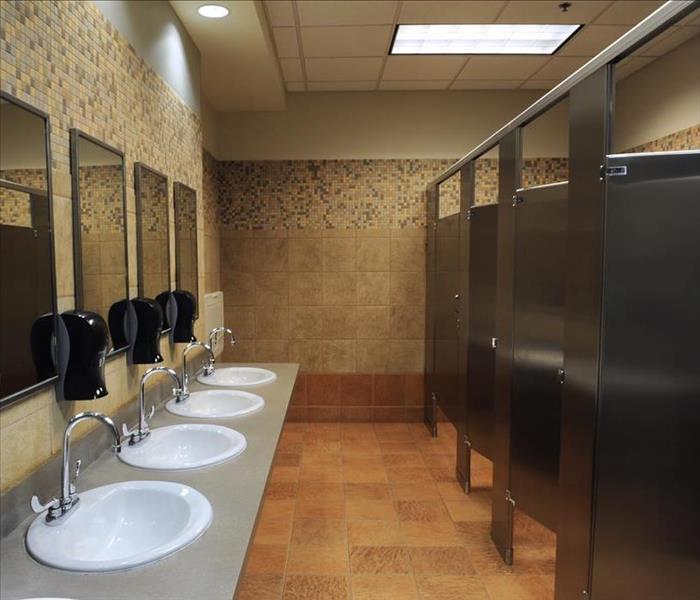 Hire our professional team in White Bear Lake, MN, for an efficient and quick response.
Hire our professional team in White Bear Lake, MN, for an efficient and quick response.
One overflowing toilet in your client's building in White Bear Lake, MN, can cause a lot of damage. When business owners need sewer cleanup, they should have a reliable company they can call to mitigate the damage. SERVPRO is a preferred vendor for many insurance providers because its technicians have the training, experience and corporate support needed to expedite the cleanup process efficiently.
Assessment
After a sewer backup, technicians must examine the damaged area to determine the extent of the issue. The initial report in SERVPRO's Claims Information Center outlines the information they find:
- Cause of the problem
- Number of floors affected
- Tasks needed to complete cleanup
- The estimated cost of full remediation and restoration
This report is available in the CIC as well as in a spreadsheet that can be sent to both you and your client. If more damage is discovered during the mitigation process, the assessment in the CIC is updated in a timely manner.
Mitigation
SERVPRO technicians are IICRC certified. They go through detailed training, complete with hands-on experience before they perform sewer cleanup for clients. The mitigation process involves tearing out damaged materials, cleaning and drying the area to prevent secondary damage, and replacing missing materials with new ones. To receive referrals from the corporate office, a franchisee must meet the high-performance standards set by the company. When you make SERVPRO a preferred vendor, you can trust that you are getting premium service.
Insurance
As a provider, you know how important it is for businesses to be sufficiently covered for any problems that may arise. While SERVPRO specialists are among the best in the business, they are also insured just in case a problem occurs when they are cleaning damage from a flooded toilet. This gives your clients further protection during the cleanup process.
When a backup occurs in their buildings, business owners need certified sewer cleanup experts who can provide fast, efficient service. Learn why so many providers list SERVPRO as a preferred vendor.
3 Steps To Take When Your Water Heater Breaks
7/28/2021 (Permalink)
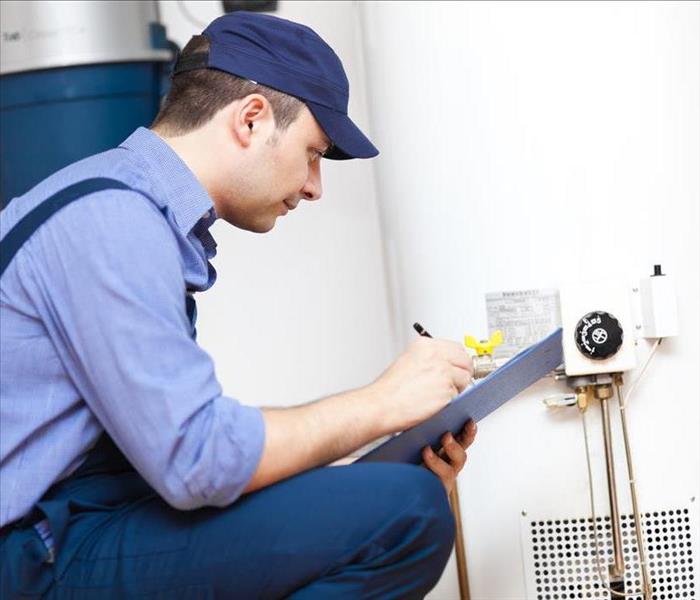 A broken water heater can cause serious damage.
A broken water heater can cause serious damage.
The average lifespan of a water heater is 10 to 13 years. A leaking water heater can result from damaged supply lines, internal rust, high water pressure, or sediment buildup. A water heater leak can damage the nearby walls and floor and may eventually cause it to stop working completely. If you have noticed a leak or suspect another problem, it is important to act quickly.
1. Turn Off Your Water Heater
If you notice signs that you have a broken water heater, such as strange noises, turn it off immediately. If the heater uses gas, turn the thermostat dial to the OFF position. For an electric heater, cut the power at the circuit breaker.
2. Stop the Leak
If you have a leaking water heater, stop the leak by turning off the water supply and then drain the water heater. Shut off the water by turning the valve near the heater clockwise as far as you can or shut the water to your home off at the main water supply.
Once the water is off, attach one end of a hose to the drainage valve and move the other to a safe place to drain the water. Open the drainage valve to drain the water and the pressure relief valve to prevent a vacuum from forming. If a large amount of water has accumulated from the leak, contact a water remediation company to dry out your home.
3. Rinse Your Water Heater
Once the heater is drained, open the water supply and flush it with cold water to remove any remaining sediment. If you have a failed water heater, you may need to contact a professional in North St. Paul, MN, to repair or replace it.
It is better to deal with a leaking water heater before it completely fails. Taking these steps can save you cleanup time and reduce property damage.
4 Tips for Managing a Storm-Canceled Flight
7/17/2021 (Permalink)
 A cancelled flight due to the weather can be a stressful experience. Take a deep breath and follow these tips.
A cancelled flight due to the weather can be a stressful experience. Take a deep breath and follow these tips.
Many people think of air travel as a stress-inducing event, not just the act of flying but the entire process. When a storm hits and throws off your travel plans unexpectedly, it creates an even bigger headache. It's beneficial to understand beforehand what to do in the case of a canceled flight so the process can go smoother. Here are some tips for managing a flight that was canceled due to weather.
1. Understand Your Rights
When you schedule a flight, you agree to specific terms, which vary from airline to airline. These terms also vary from country to country. For example, the European Union requires airlines to compensate clients such as hotel rooms and meals for delays longer than two hours and cancellations. However, the United States does not have these regulations.
2. Use Social Media
When you're stressing over a canceled flight, you may not consider alternative forms of contacting the airline such as social media platforms such as Twitter. Sometimes customer service is more accessible by this means of communication. It's a good suggestion for contacting other services, such as storm damage restoration professionals.
3. Check the Airline's Website
Check the airline's website to see if you can check your flight's current status. It should also tell you if the airline has booked you on an alternate flight. If you need more information, call the airline or go to the customer service desk.
4. Call the Airline
If you're already at the airport when you find your flight has been canceled, you can go to your airline's customer service desk and wait, and while you're waiting there, call the airline on the phone. Depending on the airline, a weather-related cancelation may entitle you to hotel or food vouchers, maybe even a replacement airline ticket.
A canceled flight will never be a stress-free event. Just as with other storm tips, the key is to being prepared beforehand anything happens. This way, before you head out of North St. Paul, MN, you'll find it easier to navigate the unexpected.
How Much Does Mold Damage Cost?
6/28/2021 (Permalink)
 Mold often grows in hidden areas.
Mold often grows in hidden areas.
If you have mold in your home, one of the concerns you probably have is how much mold removal will cost and whether your insurance will cover it. Several factors play a role in the overall cost of dealing with mold damage.
Overall Cost of Mold Damage
Mold Inspection
Because mold often grows in hidden areas, it is a good idea to have a mold inspection done before proceeding with black mold removal. The inspector will look for all of the hidden areas of mold and the root cause of your mold problem. The inspector will also be able to recommend a mold remediation company in North St. Paul, MN. A qualified mold inspector should meet several criteria:
- Have a degree in a relevant science or engineering field
- Have completed industry-approved courses in mold investigation
- Have industry credentials
- Provide a report with lab results
A typical mold inspection takes between two and five hours. The average cost is $200 to $600.
Mold Remediation
Mold remediation companies perform the actual mold removal services. Depending on the extent of the project, the process may take a few days to a few weeks. The process involves removing water and mold-damaged materials, cleaning and disinfecting carpets, walls and personal items, vacuuming with HEPA filtration and removing mold-damaged studs and drywall. The cost can vary from $500 to more than $30,000 depending on where the damage is and how widespread the problem is.
Insurance Coverage
Many homeowners policies have an exclusion for damage caused by mold and other fungi. However, if the mold resulted due to another covered cause of loss, such as a burst pipe, your insurance may cover the cost of mold cleanup.
The cost of mold removal can vary substantially depending on the circumstances. It is a good idea to check with your homeowners or flood insurance company to find out if your policy provides coverage for mold cleanup before you begin the process.
The SERVPRO Commitment to a Timely Response
6/24/2021 (Permalink)
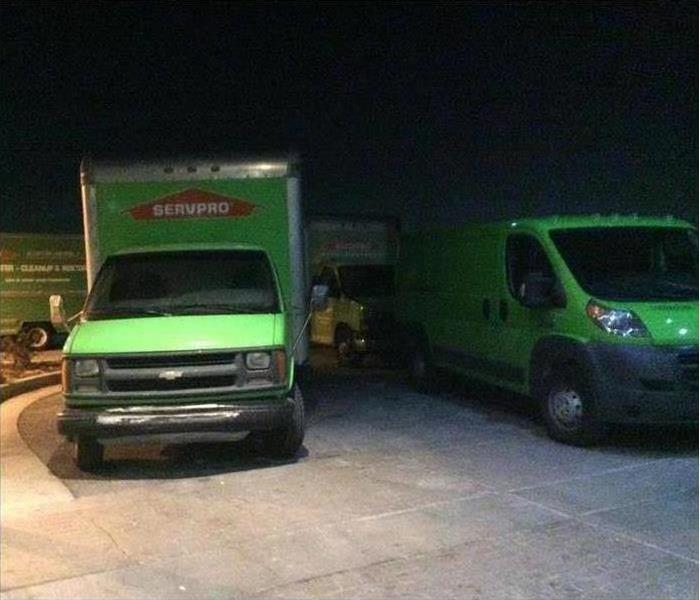 SERVPRO has a quick response for damage control.
SERVPRO has a quick response for damage control.
With franchises located in White Bear Lake, MN, and many other locations around the country, SERVPRO provides local services with a secure foundation from national corporate offices. The company has more than 1,700 franchises with the goal of arriving faster to any size disaster, including the property damages that affect you. In fact, one of the primary goals of the company is to ensure that technicians are ready to respond to damages at any time of day, any day of the week.
Teamwork, Training, and Technology
As part of the company's commitment to restoration customers, SERVPRO combines top quality work with technology that streamlines the process of completing each insurance claim:
- Emergency crews respond faster to any size disaster all day every day.
- Consistent training is completed in compliance with top industry standards.
- Partners have access to a comprehensive electronic claim system.
- Franchises maintain preferred vendor status with insurance companies.
When damages threaten commercial properties, SERVPRO water, fire, mold, and storm damage restoration technicians are ready to respond. The faster teams arrive at damaged properties, the easier it is to keep insurance claim costs in check.
Local Ownership, Corporate Resources
Local ownership of franchises helps ensure that teams arrive at damaged properties quickly. It is an essential step toward making sure that property, inventory, furnishings, and other contents suffer the least damage possible. For example, when water damage occurs, the first 24 hours are crucial in determining how far damage penetrates drywall, carpets, and other materials. Emergency teams must be on hand when fires and firefighting efforts are complete to reduce the extent of secondary damages.
A Quick Response for Damage Control
SERVPRO franchises are committed to arriving faster to any size disaster when White Bear Lake, MN, property owners need any type of cleanup and restoration work. A quick response to fire, water, and other types of disasters means that the severity and extent of damages are limited, and this ensures that recovery costs are also kept within appropriate bounds.
Smoke and Soot Cleanup
6/24/2021 (Permalink)
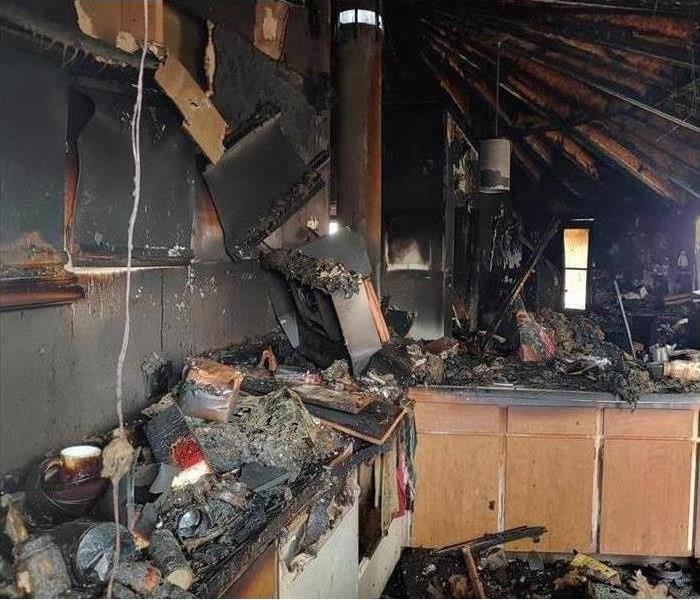 A commercial kitchen that has fire damage.
A commercial kitchen that has fire damage.
Smoke and soot are very invasive and can penetrate various cavities within your home, causing hidden damage and odor. Our smoke damage expertise and experience allow us to inspect and accurately assess the extent of the damage to develop a comprehensive plan of action.
Smoke and soot facts:
- Hot smoke migrates to cooler areas and upper levels of a structure.
- Smoke flows around plumbing systems, seeping through the holes used by pipes to go from floor to floor.
- The type of smoke may greatly affect the restoration process.
Different Types of Smoke
There are two different types of smoke–wet and dry. As a result, there are different types of soot residue after a fire. Before restoration begins, our certified technicians will test the soot to determine which type of smoke damage occurred. The cleaning procedures will then be based on the information identified during pretesting. Here is some additional information:
Wet Smoke – Plastic and Rubber
- Low heat, smoldering, pungent odor, sticky, smeary. Smoke webs are more difficult to clean.
Dry Smoke – Paper and Wood
- Fast burning, high temperatures, heat rises therefore smoke rises.
Protein Fire Residue – Produced by evaporation of material rather than from a fire
- Virtually invisible, discolors paints and varnishes, extreme pungent odor.
Our Fire Damage Restoration Services
Since each smoke and fire damage situation is a little different, each one requires a unique solution tailored for the specific conditions. We have the equipment, expertise, and experience to restore your fire and smoke damage. We will also treat your family with empathy and respect and your property with care.
Flood Damage Prevention Tips
6/22/2021 (Permalink)
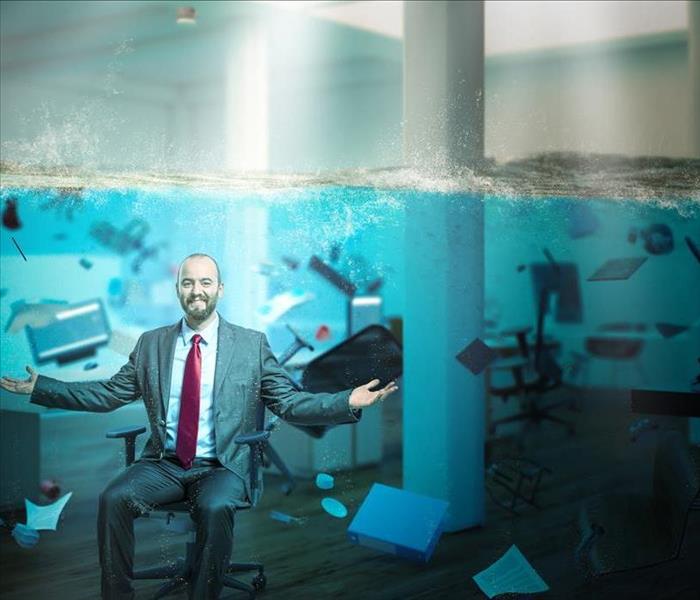 Flood prevention can save you a lot of time and money.
Flood prevention can save you a lot of time and money.
After a heavy storm hits North St. Paul, MN, your property may have some damage due to flooding. While certified storm mitigation experts can help you clean up the mess, the best course of action is to prevent as many problems as possible to begin with. Here are some tips on storm preparation to help you avoid damage in the first place.
3 Tips on Storm Preparation
1. Barriers
There are certain areas of your building that are especially prone to flood damage:
- Windows
- External doorways
- Loading docks
Essentially, any space that can be opened is more vulnerable to water entry. Using sandbags or other barrier methods can stop the flow of water into your building. Even if it doesn’t completely block floodwaters, it can slow it down enough to prevent a lot of damage.
2. Landscaping
You can’t always prevent flooding. It is possible, however, to divert most of the water away from your building through creative landscaping strategies. Your landscape architect can show you good locations for trenches and can recommend ground cover that can slow water flow toward your building considerably.
3. Organization
Many items in commercial buildings get storm damage simply because they are in the wrong place at the wrong time. Water can destroy equipment, furniture and important files. Elevating particularly vulnerable items just a few inches off the floor can make a big difference. Digitizing your most important documents is also a way to safeguard them against the risk of floods. Cloud storage means that your business won’t lose information even if the hard copies are destroyed.
No matter how careful you are, you may still have some water damage in your building after a heavy storm. That doesn’t mean that you are completely powerless against flooding, though. Sandbags and trenches can prevent a lot of the water from getting in, and some tweaks in your organization can protect items from minor leaks that occur. Taking a few extra precautions can save you a lot of time and money after a flood.
How To Clean Sewage Backup
5/28/2021 (Permalink)
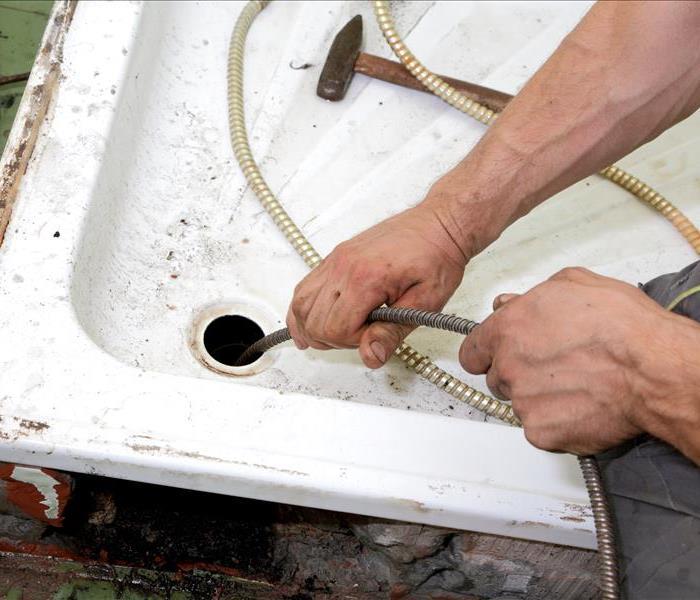 Sewage cleanup may require a professional to get it done.
Sewage cleanup may require a professional to get it done.
Not only is a sewer backup disgusting, but it is also a serious health hazard. Cleaning one up is no laughing matter. It is something that takes time, patience and a bit of know-how. Here are some things that you can do if you've had a sewage backup in your home.
4 Tips to Clean Sewage Backup in Your Home
Turn Everything Off
A sewage backup or leak is essentially a flood. You should turn off and unplug any appliances or electronics in the area. If you can't do this safely, turn off the main electricity to the house. Items to watch for when it comes to electricity and flooding are:
- Hairstyling tools in the bathroom
- Appliances
- Lights that plugged in or are wired into the wall
- Heaters
These items might get missed in the effort to clean up.
Safety First
Before removing any sewage, think of your safety. Wear goggles, a mask and protective clothing. Contaminated water is dangerous, and you don't want any to get on you. Even a simple sewer backup can be harmful. If you are not sure, call a professional sewage cleanup company in White Bear Lake, MN, to help.
Remove the Sewage
If you have already located and corrected the backup's source, it is time to get rid of the mess. Removing the sewage is one of your first steps in cleaning up. You can do this with a wet/dry vacuum. It may be tempting to rinse the waste down, particularly if the problem is a bathtub backup where it is relatively easy to do. Don't do this. Sewage can harden in drains and cause you even more problems.
Clean the Area
Once the sewage is gone, use a disinfectant to clean the area. Do not just use soap and water. You need something that will kill bacteria and other microbes to be safe. Throw out any rags or sponges, so you don't use them for anything else.
A sewer backup can be a serious problem if you don't know how to handle it. When you have a sewer problem, just take it one step at a time and remember to clean the area thoroughly.
5 Tips for Cleaning After a Pipe Bursts
5/25/2021 (Permalink)
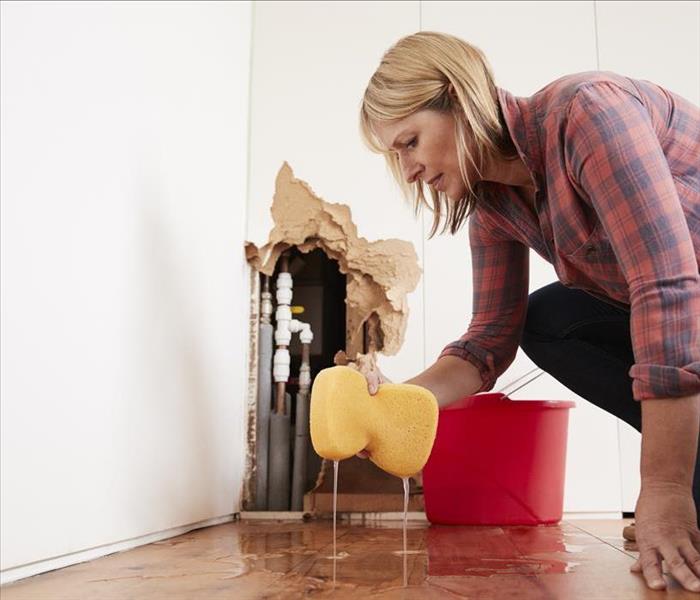 A bursting pipe needs to be treated immediately to avoid further damage.
A bursting pipe needs to be treated immediately to avoid further damage.
Discovering bursting pipes at your North St. Paul, MN, commercial building can be a devastating discovery. Depending on the size of the leak, possibly hundreds of gallons of water could be flowing through your building. It's essential to stop the water and fix broken pipe immediately.
Tips for Bursting Pipe Cleanup
1. Turn Off the Electricity
Before you do anything else, you must turn off the electricity at the breaker box. If you can't safely navigate to the box, call the utility company to shut it off. Until it's shut off, electricity could be flowing through the standing water.
2. Extract the Standing Water
Every minute counts. Next, you must extract all standing water as swiftly as possible to avoid additional loss. It's helpful to always have a wet/dry vacuum on hand for such situations, as one of these machines will get rid of the water and small debris quickly and safely.
3. Remove Affected Contents
Remove all items soaked by the water from the bursting pipes. In addition to furniture, paper and other porous materials, this could include wet drywall and soaked carpet and padding.
4. Separate Salvageable Items
Anything that you can thoroughly dry within 48 hours will probably be salvageable. Materials that you can't dry completely are susceptible to mold growth, and you will likely have to throw them away.
5. Dry the Affected Area and Contents
Finally, the affected area and remaining contents will need to be dried as quickly as possible. You can open windows and doors if the outdoor humidity is less than the indoor humidity. You can also run heaters, fans and dehumidifiers to help the drying process along. Hiring water damage remediation professionals can significantly benefit you, as they have industrial equipment and years of expertise.
When you're dealing with bursting pipes and water damage in North St. Paul, MN, time is of the essence. Take action promptly to stop the water flow, repair the pipes and begin the drying process.
Tips for Teaching Fire Safety to Kids
5/25/2021 (Permalink)
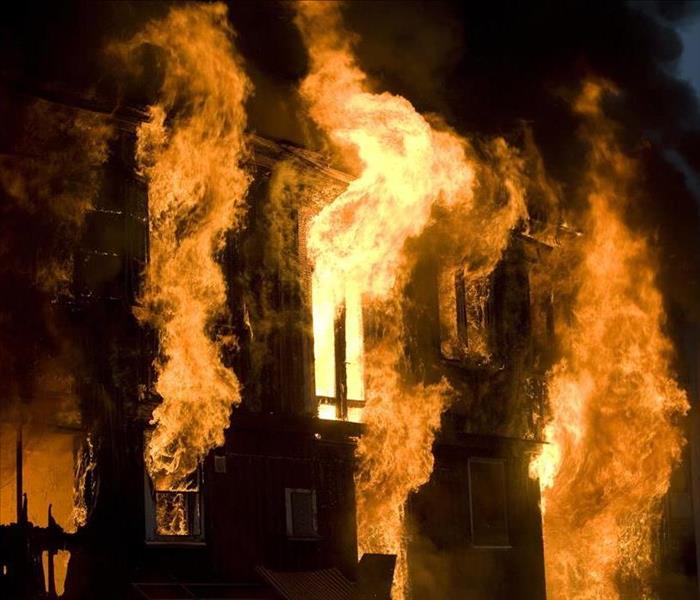 A house fire can be devastating.
A house fire can be devastating.
As a parent, your kids' safety is likely the number one priority on your list. Therefore, it just makes sense to have a simple escape plan that they can remember so that they can get out of your house in North St. Paul, MN, quickly in case of a fire. Here are a few things to teach them to ensure they know the drill.
Teaching Fire Safety to Kids
How To Get Out of the House
The smoke detector is probably the first indication that there is a home fire. When your kids hear this, they must know the steps to take to get to safety:
- Bed roll - Instead of sitting up in bed, roll to their stomachs and use the hand closest to the side to guide them to the floor.
- Floor crawl - Crouch down on hands and knees or on their bellies if smoke and heat are already in the room and crawl toward the escape.
- Test door - Touch door to see if it's still cool and if so, open slowly to see if it's safe to crawl out of the room.
Practice doing these things with your whole family so that everyone can be familiar with what to do in the event of an emergency. Your kids' safety may depend on their ability to get out of the house on their own, and these drills teach them how to do that.
How To Find Each Other After Escaping
You also want your kids to know where to go after they get out of the burning house. Fire restoration experts recommend that include a safe spot where you will meet if you get separated in your fire escape plan. A trusted neighbor's house or a well-lit parking lot of a business down the street are both good options.
Knowing what to do when there's a fire is important for everyone in the family. Protect your kids' safety by teaching and practicing the plan until they are comfortable with it.
My Home Has Flooded! Now What?
4/20/2021 (Permalink)
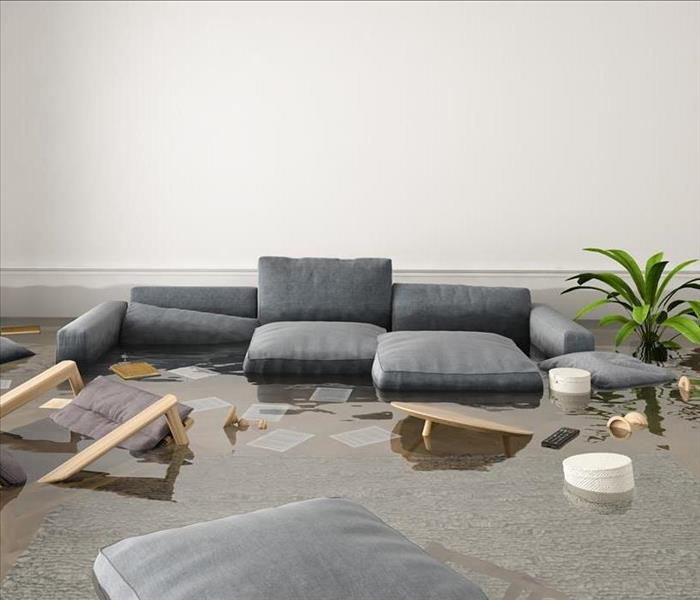 Flooding can cause severe damage and will need cleaning.
Flooding can cause severe damage and will need cleaning.
A flood is a flood whether it's a result of a burst pipe or a hurricane. Your White Bear Lake, MN, property will sustain the same basic types of water damage. Therefore, the remediation steps are essentially the same for every flood situation. The restoration process must begin immediately to avoid as much loss as possible.
Here are some tips for cleaning after your home sustains a flood:
5 Tips For Cleaning After Suffering Water Damage
1. Determine the Type of Water
Three varieties of water can enter your home. Clean water comes from uncontaminated water, such as rain or broken pipes. Gray water is slightly contaminated but generally not harmful (e.g., water from washing machines, dishwashers and clean toilets). Black water is severely contaminated water, such as that from a sewage overflow or a flood from a river or lake. It's critical to hire water cleanup specialists to properly clean and sanitize after a black water event.
2. Extract Standing Water
Extract all of the standing water immediately. Most materials will experience severe damage quickly. Additionally, porous materials are susceptible to mold growth within 24 hours of water exposure. A wet/dry vacuum is an excellent method of removing flood water.
3. Remove Everything
Remove as much as possible from the affected area. Then, the materials can be sorted into what's salvageable and what isn't. This process may even require some drywall removal. Carpet and padding will probably also be unsalvageable.
4. Dry Everything
The area must be dried thoroughly as quickly as possible to avoid further water damage and mold growth. Opening windows and doors and running dehumidifiers, fans and heaters can help dry the area quicker.
5. Clean and Disinfect Everything
All remaining materials that have been exposed to the water must be cleaned and disinfected. Remember to clean everything, including walls and crevices.
Water damage, whether from clean water or black water, can result in a severe loss. Begin the restoration process quickly to save your home from additional loss.
How To Mitigate Wind Damage?
4/15/2021 (Permalink)
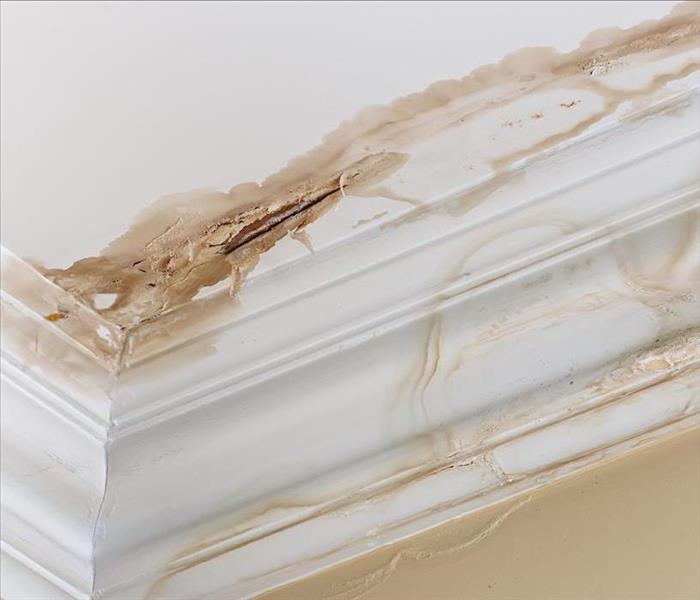 Roof leak can lead to water damage on your ceiling.
Roof leak can lead to water damage on your ceiling.
Many people do not understand the damage that a simple roof leak or another water incursion can create. The only way to prevent this damage in North St. Paul, MN, is through wind damage mitigation efforts. As a business owner, it is important to know what is necessary to stop wind damage before it starts.
Wind damage mitigation consists of using:
- Water barriers
- Roof-to-wall anchors or roof-to-foundation anchors
- Window and door barriers
Knowing what these are and how to utilize them can save you from calling a damage remediation company.
Steps to Mitigate Wind Damage
Water barriers
When talking about wind damage mitigation, water barriers most often refer to a sealed roof deck. This prevents water from coming in when the shingles are blown off during a storm.
Missing shingles are not the only thing you have to worry about when creating a barrier. You should also make sure that you waterproof the soffits and anywhere else that water could enter the building.
Creating solid water barriers prevents water from entering your business and damaging vital equipment.
Roof-to-Wall or Roof-to-Foundation Anchors
If you own your building, this is an important step to avoiding a roof leak and keeping your roof where it should be. During a storm, wind can slip under the roof, causing the roof to lift. Having an anchor system will help prevent this from happening.
If not anchored properly, sections of the roof may lift and break, allowing water to damage your equipment, walls, inventory and floors.
Window and Door Barriers
Window and door barriers won't help you if you have a damaged roof but help prevent water from coming in during a flood. You can use temporary shutters, weatherproof glass or plexiglass for windows and sandbags or stormproof doors for your doors. Many security doors also serve as weather guard doors. Check with the manufacturer to see if the doors of your business are weatherproof.
A roof leak or flooding from windows and doors can be devastating to your business. Fortunately, there are steps you can take to mitigate storm damage before it becomes a problem.
How To Clean Furnace Puffback
3/26/2021 (Permalink)
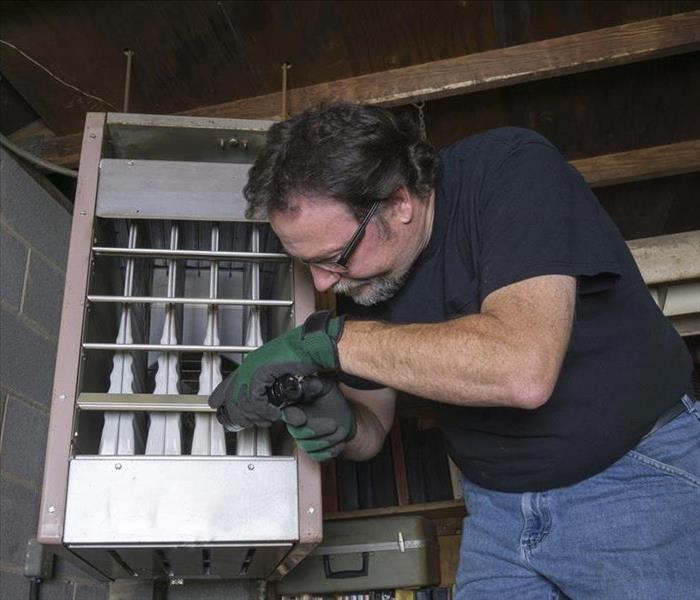 Fix furnace issues.
Fix furnace issues.
The furnace in your commercial building in North St. Paul, MN, is an integral part of keeping your whole building warm and comfortable. When it burns out, you certainly want to get it fixed as soon as possible. It's also important that you don't ignore the puffback damage that the malfunctioning furnace may have caused.
Furnace Puffback Cleanup
Call Cleanup Experts
Even with proper maintenance, parts of your oil furnace are likely to wear out and stop working over time. When this happens, you may notice a sooty substance on the wall and floor surrounding it. This is called puffback, and it needs to be cleaned by fire restoration specialists. These certified technicians have the tools and training needed to complete all parts of the cleanup process:
- Assessment of damage
- Building test to determine extent of spread
- Thorough removal of tar and soot
- Repair or replacement of damaged materials
Proper cleanup takes more than just wiping away the furnace puffback that you can see. Trust the professionals with the necessary knowledge and skills to ensure that the mitigation process is thorough.
Fix Furnace Issues
You also need to hire someone to fix the furnace that caused the problem in the first place. After all, it doesn't do you any good to clean up the puffback damage if the conditions that created it persist. Your insurance provider will likely ask you to prove that you have taken the steps to remedy both the cause and the effects of furnace mishap before the company will approve your claim. Repairing or replacing the furnace may seem costly but there will likely be fewer out-of-pocket expenses in the long run if you take care of it in a timely manner.
A worn-out furnace can cause a lot of problems in your commercial building. Puffback damage from the overworked furnace must be cleaned by restoration professionals so that your building can get back to normal.
How To Confirm Your Mold Suspicions
3/26/2021 (Permalink)
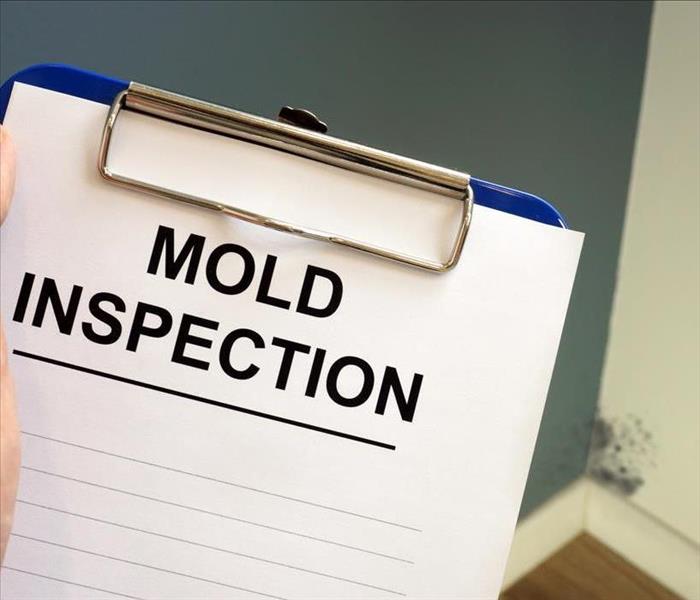 Contact a professional to confirm your mold suspicions.
Contact a professional to confirm your mold suspicions.
If you notice a musty odor in your home in North St. Paul, MN, you probably know that you have mold growth somewhere. If it's hidden, however, you may not know where or how big the problem really is. An indoor environmental specialist can get you the answers you need so that the issue can be mitigated thoroughly.
Ways to Confirm If You Have Mold in Your Home
Exploratory Test
A home test is only going to tell you that there are mold spores in your home, but that's true even if you don't have a significant growth. A professional mold test is necessary for finding hidden patches. There are many places mold can hide:
- In air ducts
- Behind walls
- Under carpet
- Inside cabinets
Certified environmental hygienists have the equipment, experience and knowledge needed to find where molds spores are most prevalent, indicating the location of the growth itself.
Air Quality Test
The most common way that an indoor environmental specialist uses to get an accurate reading is by testing the air quality. Technicians may use a spore trap to sample the air of your home. The spores stick to the sticky surface in the trap, and these spores are tested in a lab. The test results reveal not only how concentrated the mold growth is in different areas throughout your home but also the type of mold present.
Surface Test
Before the mitigation work can begin on your home, mold remediation experts need to know exactly what kind of fungus they're dealing with. If it is visible, it's easy to get a surface test of the mold. By carefully removing some of the spores in the growth for further inspection, they can make better decisions about the specific methods needed to remedy the problem.
You don't need to waste money on a home mold test from your local hardware store. If you have a significant mold problem in your home, only an indoor environmental specialist will be able to get an accurate test that reveals all the information needed to resolve the issue.
Enjoy Spring With a Flood Prevention Plan
2/11/2021 (Permalink)
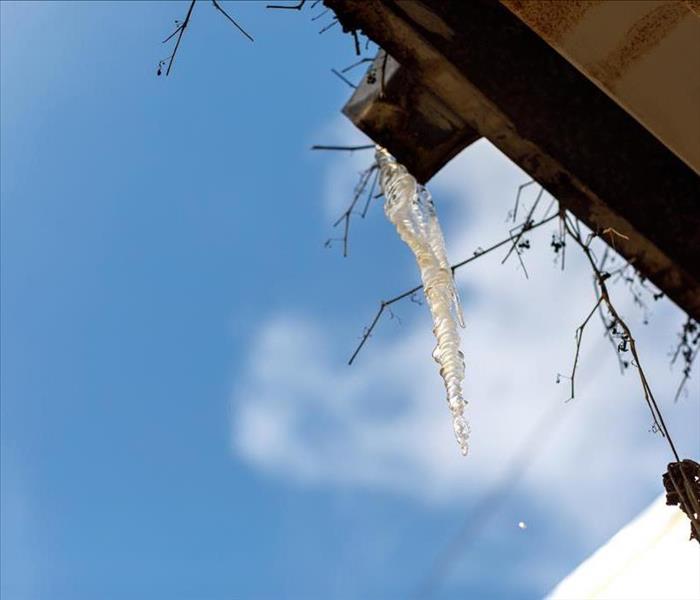 Remove snow and ice from your roof.
Remove snow and ice from your roof.
When spring temperatures signal the close of winter, many White Bear Lake, MN, business owners and customers look forward to getting outside and enjoy the sunshine. It's important to recognize, however, that the spring thaw often leads to flooding. Fortunately, there are several steps you can take to prevent a visit from your local water damage repair company, starting with fall and winter chores.
Steps to Prevent Spring Flooding
- Keep runoff points, such as rain gutters, free of snow and ice.
- Insulate any pipes on or near the exterior of your buildings.
- When shoveling snow, pile it up away from the foundation of your building.
- Arrange for snow and ice removal for the protection of your roof and rain gutters.
- Complete sump pump maintenance to be sure the pump can handle rising water levels from a frozen pipe or spring flood.
The care you take in doing these tasks before the spring thaw are effective ways to protect your building if floodwaters do rise.
Turn Your Attention Outside
After making sure that you won't suffer from a frozen pipe on your property, you can turn your attention outside. For example, if there's a street drain on or near your land, such as in the parking lot, take time to clean it off. When water isn't allowed to run freely, the resulting overflow could cause damage to your property. Pay similar attention to the gutters around your property.
Take a Community View
After all your preventative methods, there may still some risk of flooding in your community. Prepare for this eventuality by stocking up on sandbags. If water begins to accumulate due to melting snow or other causes, position sandbags where they can prevent water from getting into doorways, basement windows, and other openings around your foundation. You may also want to reach out to community leaders if you recognize issues that should be addressed by road crews, etc.
It isn't unusual for the spring thaw to lead to flooding, but this doesn't mean that your business needs to suffer. Your preventative actions in the fall and winter and ongoing actions can set your mind at ease.
3 Things You Should Do After Storm Damage
1/28/2021 (Permalink)
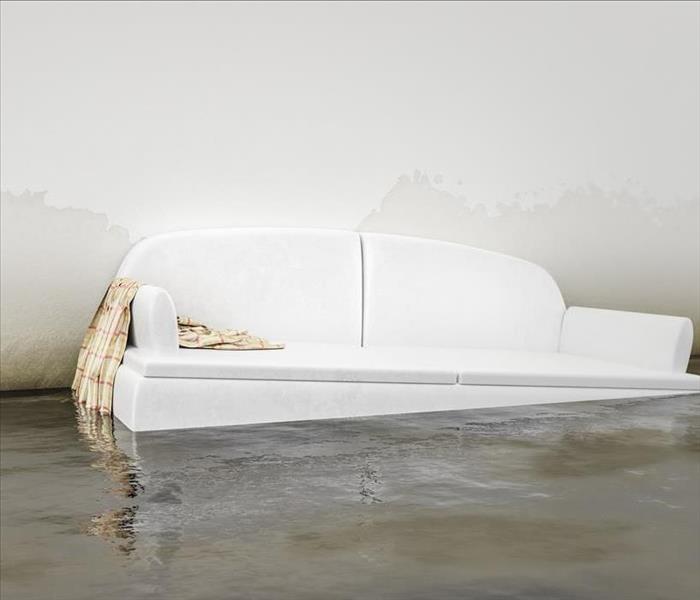 Heavy rains can lead to severe flood damage
Heavy rains can lead to severe flood damage
It is very important to file your flood insurance claim and take steps to mitigate your damage as soon as possible after storm damage occurs. The longer you wait, the more damage may occur to your property. These are three things you should do after your property is damaged by a storm.
3 Things To Do After Storm Damage
1. File an Insurance Claim
When large storms occur, insurance companies will be very busy trying to process all of the claims that result. If you have flood damage or wind damage from the storm, you should file your claim as soon as possible, so that you don't end up getting stuck at the back of the line.
2. Mitigate Your Damage
Because it may take a while for the flood insurance company to inspect your damage and give you the go-ahead to begin repairs, it is important to take steps to mitigate your damages while you wait. If you have a hole in your roof, place a tarp to prevent leaks from occurring while you wait for repairs. Board up any windows that have broken. If your home has water damage it is important to dry it out quickly to prevent mold damage. Consider contacting a water mitigation company in North St. Paul, MN, to get your property dried out fast.
3. Document Your Damage
Before you start making temporary repairs or removing damaged contents, document your damage for the insurance company. Take photographs or video of your damaged property. Keep receipts for materials and labor used to make temporary repairs. If you have any records that prove the value of your damaged property, gather them together.
Your flood insurance company may be overwhelmed with the volume of claims filed after a major storm. These three steps can help you prevent unnecessary damage to your home and ensure that your claim is processed as quickly as possible so that you can begin repairs.
4 Reasons To Hire a Mold Removal Specialist
1/26/2021 (Permalink)
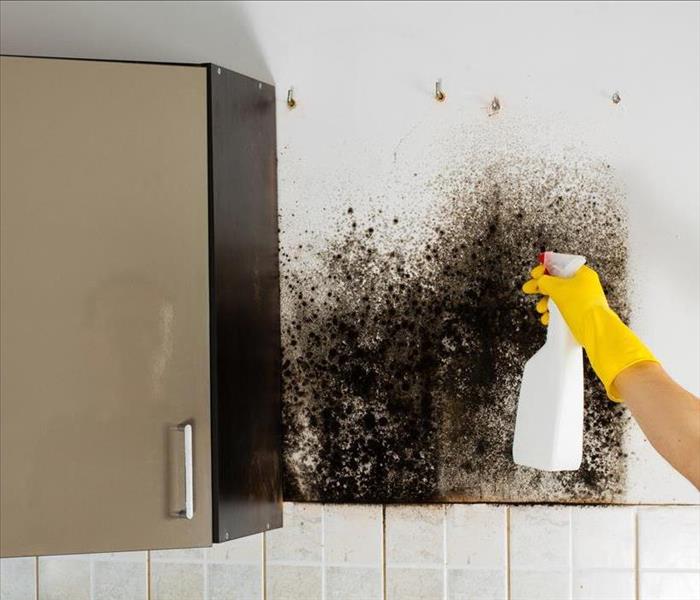 Consider hiring a professional to remove mold.
Consider hiring a professional to remove mold.
Mold is a strange substance and topic. Some homeowners do not cringe at the sight of mold in their homes; instead, choosing to take a DIY approach to the removal with no thought of potential consequences. Other people assume that every mold is toxic and believe that the mere sight means massive renovations are underway. However, before becoming either reactionary or proactive against mold in your home, hire mold inspection services in White Bear Lake, MN, to review the situation. There are at least four reasons to consider hiring a professional.
4 Reasons to Consider Hiring a Mol Removal Specialist
1. Black Mold Toxicity
People often refer to black mold as toxic, but not all forms are. However, there is no way to know if a species is of a toxic variety without a test. Characteristics do little to help the novice homeowner differentiate between a typical house mold and a dangerous variety. The simple truth is that most molds carry negative attributes, but identification depends on professional testing.
2. Necessary Inspections
Mold inspection services are standard among disaster restoration companies. If you suspect you have mold, you might want to consider hiring a company to assess your home and identify the type of mold. If it is of a toxic species, you may wish to vacate the premises while the team cleans it. However, you will not need to leave with every type of infestation; some species are mild, meaning if the growth is not too significant, a family might stay during the cleanout process.
3. Black Mold Traits
House mold is different from toxic black mold. The toxic variety will appear dark greenish-black or gray, and it may have a slimy texture. Some people describe the mold as being greasy. It is different from most house mold species, which appear green, yellow, and other colors and have a textured appearance, almost soft or fuzzy.
4. Professional Removal
Regardless of the species, DIY mold removal is never a good idea. There are too many types of mold, and people can have countless reactions from mild to severe. It is best to leave removal to professionals.
A mold inspection can help identify the species. Regardless, never remove mold without a professional.
How To Create an Office Fire Evacuation Plan
1/20/2021 (Permalink)
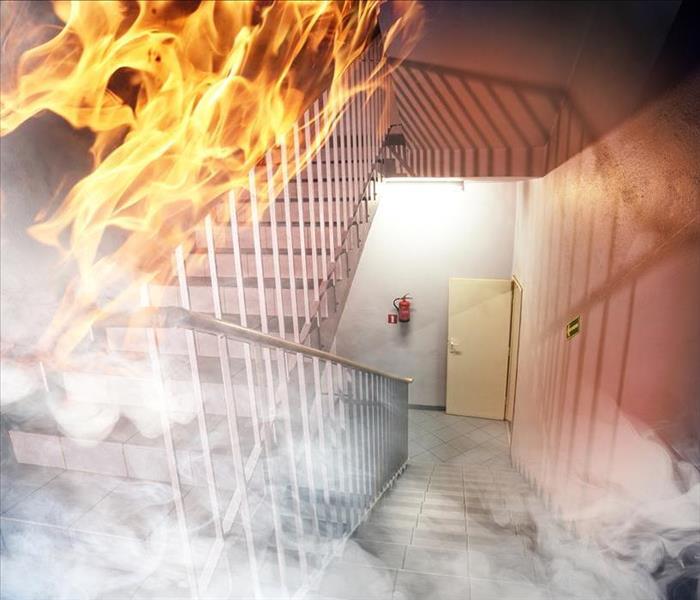 Create a proper fire escape plan
Create a proper fire escape plan
Your employees are your most valuable asset. Where would your North St. Paul, MN, business be without them? A fire escape plan is essential for your people and property; a fire can start virtually anywhere at any time. Devising an emergency escape plan doesn’t have to be complicated.
5 Points to Include in Your Fire Escape Plan
Here are the most critical points to include in your plan:
1. Consider Various Scenarios
No one can prepare for every possible scenario, but it is essential to be ready for as much as possible. Fire damage experts suggest considering the types of fires most likely to threaten your business. Maybe it’s cooking appliances in the breakroom, employees’ portable space heaters or something more industry-specific. Then, brainstorm “ what if” scenarios. When you and your employees are prepared for various scenarios, it’s no longer viewed as “the unimaginable.” Everyone will know the procedure.
2. Assign Roles and Responsibilities
Roles and responsibilities should be established to have leaders to which others can look for guidance during an emergency. A clear chain of command should be created, along with backups.
3. Plan Escape Routes and Gathering Areas
A fire escape plan should always have primary and secondary escape routes marked. In addition to posting maps of the exit routes, ensure that all the exits are clearly marked. Designate areas for employees to assemble after evacuating the building. Make sure the area can safely accommodate everyone a safe distance from the building.
4. Inspect Equipment and Train Proper Use
Ensure that all your emergency equipment is up-to-date and in proper working order. Your staff should also know where all the emergency equipment is and how to use it properly.
5. Perform Fire Drills
Regularly rehearsing fire drills can help decrease confusion and make evacuation techniques almost second nature. This will ensure that everyone can get out as quickly and safely as possible.
Creating a proper fire escape plan is crucial for your employees and business. Keep your employees aware and all of your emergency equipment maintained regularly. This will ensure that your evacuation plan is operated as safely and efficiently as possible.
3 Tips for Removing Smells From Your Microwave
12/29/2020 (Permalink)
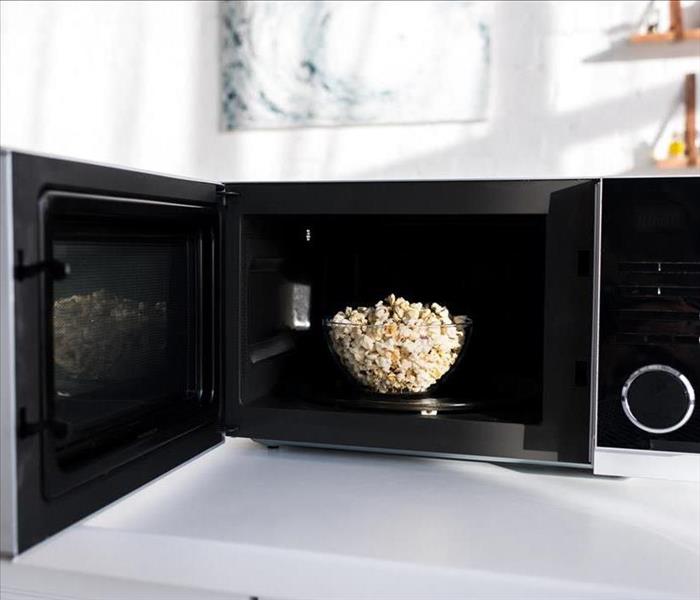 Remove the smell from burnt popcorn
Remove the smell from burnt popcorn
The smoke smell from burnt popcorn is so pungent, many workplaces have banned the popular snack food from the break room. However, if you haven't banned this noxious food from your home yet, you might need these three tips for removing microwave smells.
Tips For Removing Microwave Smells
1. Clean the Inside
Sometimes, all you need to do to eliminate odors is to clean your appliance thoroughly. Start by using a rag or sponge to remove any debris or burnt food from the interior of the oven. Next, place a cup of water in a microwave-safe container and heat it in the oven for three to four minutes. The steam this produces will help loosen up food particles.
Use a soft, moist cloth and a small amount of dish soap to clean the interior surfaces and vent grill. Finally, rinse with clean water and dry with a soft, lint-free cloth. Leave the oven door open for two to three hours to allow it to air out.
2. Try Steaming With Lemon Juice or Vinegar
If the smoke smell persists after cleaning, try neutralizing odors by using lemon juice or vinegar. Follow the same steps as in the first tip, but instead of using plain water, add one tablespoon of lemon juice or vinegar and then heat for two to five minutes.
3. Deodorize Overnight
For really persistent odors, try this overnight method. Put an open box of baking soda in the oven at bedtime and leave it overnight. You can also use baking soda to remove odors from nearby cabinets. However, if odors continue to be an issue after trying this tip, you may need to contact a professional cleaning service in North St. Paul, MN, to assist you.
A smoke smell or other odor from your microwave can be a chore to get rid of. These three tips can help you get your home smelling fresh.
3 Potential Problems From Frozen Pipes
12/17/2020 (Permalink)
 Frozen pipes can lead to water damage.
Frozen pipes can lead to water damage.
Commercial properties, such as warehouses, are prone to wintertime damage. It is crucial to maintain facilities before and during the coldest months of the year. Failure to do so can result in significant damage to a building's functionality, especially its plumbing systems. Frozen pipes can lead to at least three costly water damage issues for business owners.
3 Costly Water Damage Problems From Frozen Pipes
1. Pipe Bursts
Frozen pipes often lead to broken pipes. As the water freezes in the line between the water source and the closed faucet, pressure builds. If the pressure from the expanding water is not released or resolved quickly enough, it can lead to splitting and bursting lines. Depending on the occupancy of the building at the time of the break, significant flooding can occur.
2. Dangerous Outdoor Conditions
Sometimes, the frozen and failed pipe is outside of a building, and water damage may go unnoticed by people inside. If the leak persists long enough in cold conditions, the leaking water will freeze over, compromising workers' and customers' safety. If people fall on your commercial property, the company is likely liable for damages.
3. Costly Structural and Inventory Damage
When a break occurs inside the facility, there are questions of structural issues and ruined inventory. A burst pipe can lead to significant flooding in only a few hours. If the facility is left alone for several days, there is no telling the extent of the damage. When the problem occurs inside, hiring a water cleanup service in North St. Paul, MN, is likely your best bet.
Commercial warehouses are prone to pipe freezes, which means having a proactive mitigation and prevention plan in place is necessary. Do not risk the expense and business interruption of water damage from frozen pipes. Prepare your company for the worst case, so you never face it. Use the tools and people at your disposal to figure out a gameplan for this winter.
How To Deal With Water in a Light Fixture
11/26/2020 (Permalink)
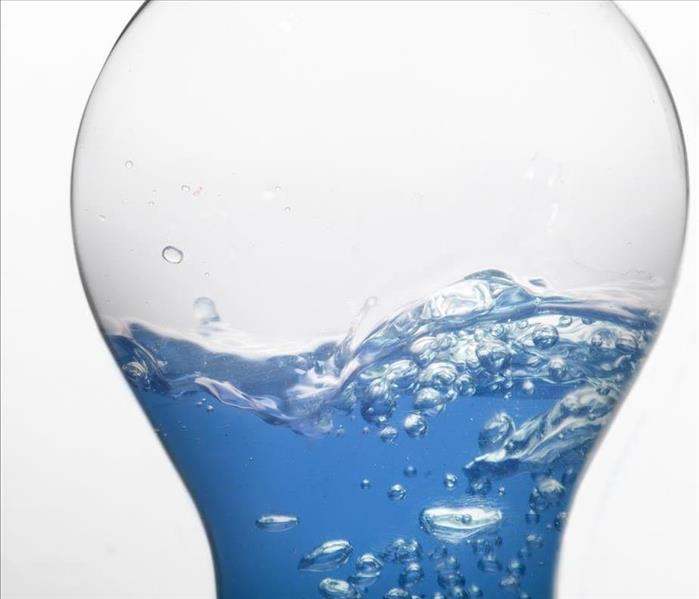 Water in light fixtures can be very dangerous.
Water in light fixtures can be very dangerous.
A flood from a busted pipe or supply line leak can affect more than just the surrounding area. This is particularly common when the faulty water source is on the second story of your home in White Bear Lake, MN. Not only can it cause water damage to the flooring and walls around it but also to the ceiling under it. Here are a few tips for getting the water out of the light fixture on your lower floor effectively and efficiently.
2 Tips To Deal With Water in a Light Fixture
1. Stay Safe
Your gut reaction may be to open up the fixture and just let the water drain out. This is not advisable until you have taken the necessary safety precautions:
- Shut off water to stop flooding.
- Flip breaker to cut power.
- Don rubber gloves and boots to neutralize residual charge.
Draining the fixture is one of the first steps toward taking care of the water damage to your lower floor. If you choose to touch the light before the restoration team arrives, make sure you are doing it safely.
2. Call Professionals
If the leak in your home has flooded two floors, you need water damage repair that goes beyond amateur abilities. When water has made its way into a light fixture on a lower level, you probably have quite a bit of ceiling damage on top of everything that needs mitigation on the higher floor. You need a team that has the experience and expertise to address the whole problem. As soon as you know there is an issue, call local water restoration specialists. They can assess the problem, propose solutions and provide an estimate of how much time and money it will probably take to fix it.
Water damage doesn't always stick to one area of your home. The more water involved, the farther and faster it can spread. It may even flood a lower floor, including the ceiling and light fixtures. Use the appropriate safety precautions and call for the help you need.
Why Hire a Mold Remediation Professional?
11/19/2020 (Permalink)
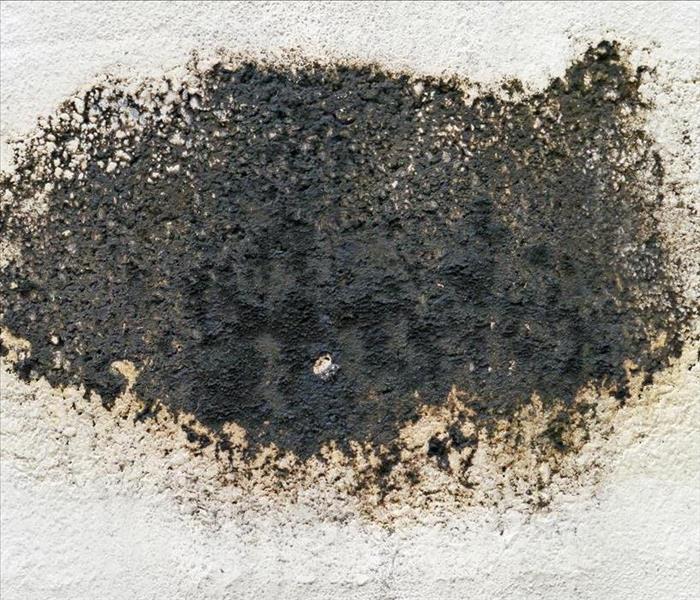 Black mold damage.
Black mold damage.
There is plenty of misconceptions about mold and color. For example, not all black mold is toxic, despite the perpetuating rumors. The only definitive way to know the toxicity or danger of mold found in your home is having it tested by a professional. Do not trust those DIY mold tests because many can produce a false positive.
If you believe you have a mold problem, contact a mold remediation company in White Bear Lake, MN. These services offer several advantages over DIY approaches.
- Test and mold identification
- Complete remediation and restoration
- Professional advocacy
3 Advantages of Hiring a Mold Remediaton Proffessional
Test and Mold Identification
If you are dealing with toxic black mold, you do not want to be in your homes during remediation. A mitigation service will test your home's air quality and take samples of the mold growth to determine the species and appropriate mold cleanup procedures. For minor and non-toxic jobs, your family can possibly stay in the home during removal, depending on where the infestation is; however, if toxic, the house will require extreme precaution and quarantine of the infestation site.
Complete Remediation and Restoration
A professional service can often complete an entire remediation and restoration in less time than a homeowner alone. The company understands the proper cleanup process and knows how to restrengthen damaged structures.
Another significant benefit of professional companies is the work guarantee. Most remediation services certify their work with a warranty, meaning that if a problem is not resolved, they will come back and fix the persistent issue.
Professional Advocacy
While not every residential disaster will fall within your insurance policy, a remediation company can help determine the probability of any covered damages. For example, while many insurers will not cover mold per se, they might cover mold due to unseen damages. With experience working with various insurers, a mitigation service can advocate on the homeowner's behalf, helping to move the claims process along.
Do not try to correct black mold damage on your own. The risk of financial compounding financial loss is too significant. Instead, hire a mitigation company to help you sort through the damages.
How To Protect Pipes When Storms Bring Freezing Temperatures
11/13/2020 (Permalink)
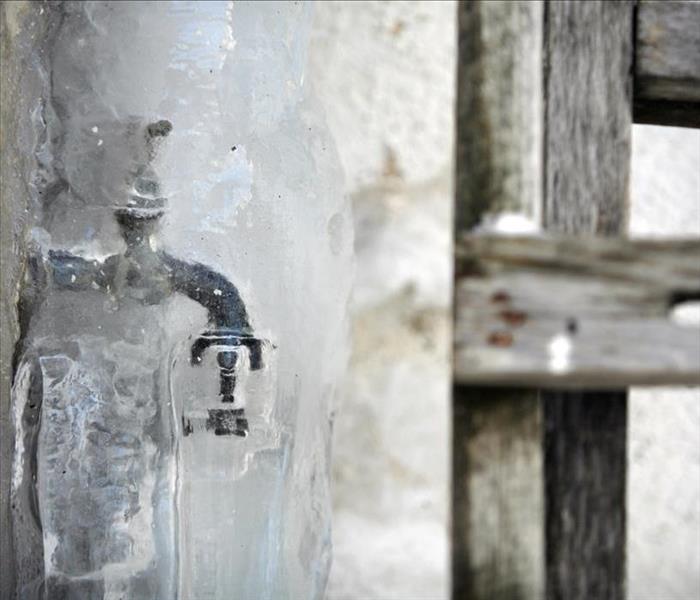 Pipes that are exposed to the weather can freeze and cause water damage.
Pipes that are exposed to the weather can freeze and cause water damage.
In conversations about storm damage in North St. Paul, MN, people generally think about rain and how that much water could impact their businesses. However, rainstorms aren't the only sources of storm-related water damage. Another common occurrence is damage, such as a burst pipe, that takes place after winter storms bring a drop in temperatures.
Why Are Frozen Pipes a Problem?
When wintry temperatures come around, the freezing weather causes standing water and fluids in the pipes to freeze. Why is this a problem?
Water expands as it freezes.
Expanding water puts a lot of pressure on pipes.
Metal, plastic, and other pipe materials can't stand up to the pressure, so they break.
No matter how tough the pipes and other components of your water and sewer system, they cannot withstand the pressure of expanding water.
How Can You Avoid Frozen Pipes?
The good news is that you can take a few simple steps to avoid a frozen pipe on your commercial property:
- Identify the pipes most likely to freeze. For example, any pipes on the exterior walls or that are exposed to the weather.
- Avoid a burst pipe by draining water out of hoses, swimming pools, and sprinkler systems.
- Keep external valves open, so that any water can drain out or expand without causing pipe damage.
- Add insulation around exposed pipes, both inside and outside.
- Look for areas on the property that may be susceptible to standing water.
- Maintain a consistent temperature in rooms where pipes run, even during the night and over weekends.
As you learn more about the vulnerability of your pipes, take extra steps to protect them from freezing.
What If Pipes Still Freeze?
Occasionally, you may still experience a burst pipe even after taking precautions. When this happens, contact a water damage cleanup and repair professional. If mistakes are made during the thawing process, you may inadvertently cause further damage. After contacting professionals, keep faucets open and try to find the section of pipe that has frozen. At this point, you can begin thawing the pipes as you wait for technicians to arrive.
How To Check for Hail Damage on Your Roof
10/28/2020 (Permalink)
 Hail can cause severe damage to your roof.
Hail can cause severe damage to your roof.
Roofing materials matter when it comes to inspecting a hail-damaged roof. Hail impacts wood, asphalt and composition shingles differently. Here’s what you need to know.
Facts About Rood Damage Due to Hail
What To Look For With Wood Shingles
If your North St. Paul, MN, home is topped with wooden shingles, there are four main things to look for if you suspect your roof requires hail damage repair:
- Shingle splits that are orange or brown in color
- Splits that are very sharp along the edges and/or corners
- Splits that show no signs of damage along the edges
- Damage that appears random and doesn’t seem to follow a pattern
What To Look For With Asphalt or Composition Shingles
While a hail-damaged roof that’s covered with asphalt or composition shingles may also show signs of damage that seem random and don’t appear to follow any pattern, that’s where the similarities end. These types of shingle may also show the following signs of hail damage:
- Shiny-looking asphalt or mats
- Hail impacts that appear black in color
- Hail impacts that feel soft, like a pressing on overripe piece of fruit
- Exposed roof felt due to loss of granules
- Damage that appears random and doesn’t seem to follow a pattern
What To Do Next
If you determine that your roof has suffered hail damage, one of your first calls should be to a storm damage restoration company. Its technicians will come to your house and perform a thorough inspection of your roof, as well as other areas that may show signs of damage. Hail may lead to hard-to-spot cracks in your roof that can allow water to enter your home, for example. These cracks are often best assessed from inside the home.
Dealing with a hail-damaged roof doesn’t have to be stressful. By acting quickly and enlisting the help of trained professionals, you can repair and restore your roof promptly and get back to the business of everyday life.
What Does Renters Insurance Cover After a Fire?
10/21/2020 (Permalink)
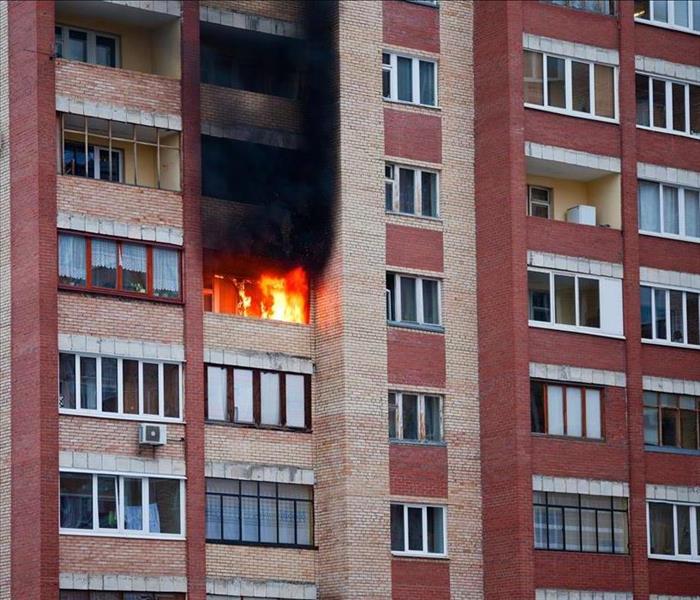 Fire damage in a building.
Fire damage in a building.
When a fire breaks out in your rented home, you may have a lot of questions about what your renters insurance covers and what isn't included.
Tips To Prepare For Fire Damage
There are several things you can do to prepare for this stressful experience before it happens:
- Understand the most common causes of residential fire damage and take steps to prevent them.
- Install smoke and fire alarms throughout the home and keep fire extinguishers conveniently available. You may be eligible for better insurance rates by taking these steps and any others recommended to you by your agent.
- Create a plan of action to guide your steps after a fire breaks out. Make sure this plan includes an evacuation route and phone numbers, such as for first responders.
- Learn what your insurance covers and what isn't covered.
The short answer to your concerns about insurance coverage is that you'll be reimbursed for your belongings.
More Details About Coverage
Fires are covered by renters insurance. Any of your possessions, furnishings, and other belongings are eligible for reimbursement. If the fire causes your home to be uninhabitable, your insurance provider may pay for you and your family to stay at a hotel in White Bear Lake, MN. If you were responsible for the fire and resulting damage, your insurance may cover some of that damage and associated losses. If you left a candle burning or caused an electrical fire by overloading an outlet, the damage is covered by your policy, unless there's evidence that you caused the fire intentionally.
Things Not Included in Your Policy
Naturally, there are some exceptions to this coverage. For example, your insurance doesn't cover damages to the structure of the apartment itself. Any work completed by fire restoration and cleanup professionals should be covered by the insurance the property owner carries. Whether the property owner has the right insurance coverage or not, your insurance won't cover these repairs.
Protecting your home and family from fire damage doesn't begin and end with your renters insurance. Take the steps listed above and learn more about preventing fires by working with your insurance agent and other professionals.
3 Reasons To Call a Water Restoration Service
10/16/2020 (Permalink)
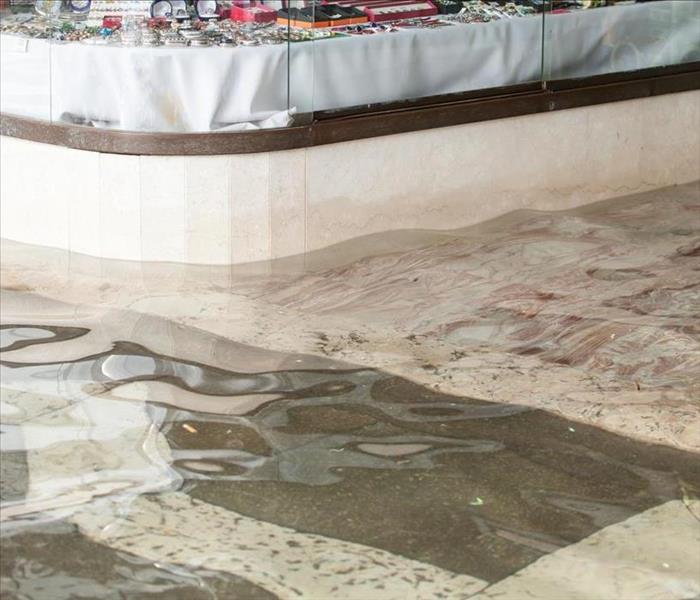 It would be best if you trusted experts in many instances.
It would be best if you trusted experts in many instances.
As a business owner, the objective is to place profits over losses, which often means using talented people, already under your employ, to resolve problems rather than contracting out. Unfortunately, not every building problem can or should be handled in house, like pipe burst cleanup. It would be best if you trusted experts in many instances, like a water restoration service in North St. Paul, MN. There are at least three instances where it is best to contract out repairs.
Instances Where It Is Best To Call a Water Restoration Service
- Overwhelming damage
- Sewer or black water
- Mysterious cause
Overwhelming Damage
Pipe breaks or floods often lead to a significant amount of damage to your property and equipment. In most cases, an insurer will require the use of a remediation service or other professional to resolve the problem. Beyond insurance requirements, when dealing with a pipe burst cleanup, it is crucial to assess the damage to the facility's structural integrity and its systems; standard maintenance personnel may not possess the required skills or knowledge.
Sewer or Black Water
Under no circumstances should you or your team members attempt to clean up black water or sewage. Many states have regulations establishes who can clean up such a disaster and how. A mitigation or sewer cleanup company will possess the appropriate knowledge and certifications to complete such a task legally and up to building codes.
Mysterious Cause
Sometimes, water damage will not be as apparent as a broken pipe. Walls or other structures or equipment can hide the underlying cause of water damage. A restoration service will have the necessary tools and expertise to find the source of the problem, resolving it quickly and allowing you to get back to business as usual.
While some building problems, like a pipe burst cleanup, are obvious, including their need for professional help, others are not. If you are uncertain of the need for professional intervention, then consider contacting a local water mitigation service for advice.
3 Helpful Tips That Will Save You Money on Home Maintenance
9/29/2020 (Permalink)
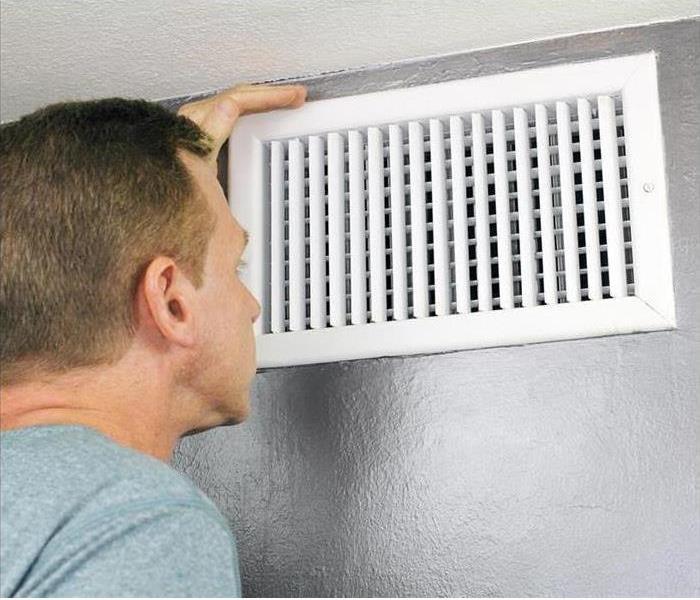 Change air filters
Change air filters
When it comes to keeping an updated and efficient home, many homeowners are concerned about the maintenance cost. From adding updates to keeping things in working condition, the bills can add up quickly. If you are looking to save money on the upkeep of your North St. Paul, MN home, consider the following three tips for making facility management less expensive.
Three Tips for Making Facility Management Less Expensive
- Reduce Lighting Costs
While it may sound simple, reducing the cost of lighting your home can be a huge cash saver. If you are using the same old light bulbs and fixtures that came standard in your home when you moved in, you may be spending more than you need to in monthly electricity expenses. While switching out cheap incandescent bulbs may sound counter-intuitive, the long-term savings can really pay off. Swap out standard light bulbs with compact fluorescent bulbs (CFLs) to take advantage of the following savings:
- Reduce your energy use by up to 75%
- Go up to five times longer between switching out light bulbs
- Reduce greenhouse gas emissions and contribute to a healthier planet
- Small Updates Over Time
Although it can be tempting to go all-in on your list of fixer upper projects, doing small updates over time may be a more frugal option. Save up for projects that will lower you home maintenance cost. Rather than adding pretty new cabinets to your kitchen, think about getting a more energy efficient furnace or air conditioning unit to save on your monthly utility bill.
- Don't Forget Routine Upkeep
While updating and upgrading is always appealing to homeowners, it is important to remember to take care of your existing fixtures. Some of your long-term home maintenance cost can be reduced by doing simple things regularly, including the following:
- Change air filters
- Replace missing or damaged roof shingles
- Clean drains of debris and buildup
By taking care of your home's structure on a regular basis, you may avoid the need for home repairs after a storm strikes near North St. Paul, MN.
What to do About Your Noisy Water Heater
9/29/2020 (Permalink)
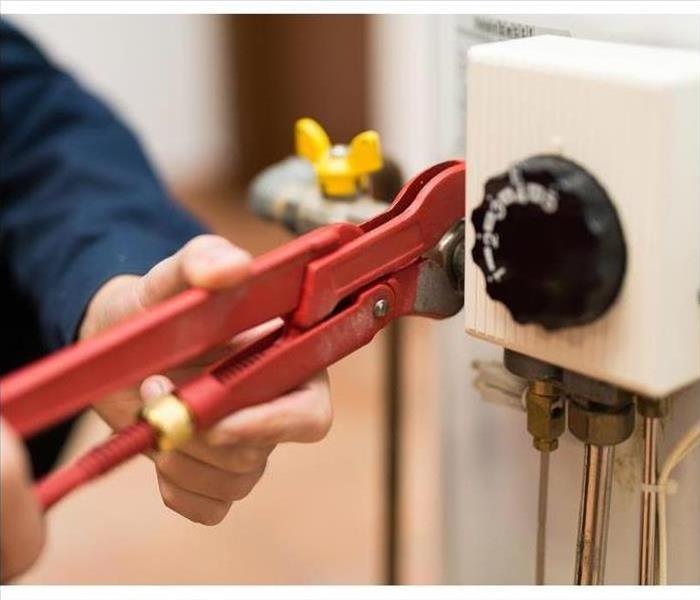 Water heater maintenance is one of the best ways to prevent leaks.
Water heater maintenance is one of the best ways to prevent leaks.
Your water heater is the lifeblood of your home. It controls the flow of water to your sinks, tubs, and major appliances while allowing you to regulate the desired temperature for drinking, bathing, and other needs for you and your family. Like any other major appliance, problems can occur over time, and repair and/or replacement costs can skyrocket when not properly maintained. Fortunately, simple observations may be enough to help you diagnose a potential problem as it arises.
Identifying Problems Through Listening
Water heater noises are varied and can stem from several potential problems. Some issues can be small and easy to fix yourself, while others may require professional help. Note the following common occurrences and their sounds:
Partially-closed valves – Water line valves that are partially closed forces water to push through smaller openings, creating a screaming sound. Ensure all valves are completely open when hearing this noise.
Sediment buildup – Sediment naturally forms over time around element tubes and traps water beneath the layers, indicated by a crackling sound. The element should be cleaned, or replaced if the noise persists.
Loose sediment – At times, sediment deposits can be stirred inside your tank when water is flowing through, causing a rumbling noise. Using a deliming solution during a water heater flush should solve the problem.
Additional Maintenance Notes
Water heater maintenance is one of the best ways to prevent leaks and premature breakdowns. The buildup of sediments and other minerals are a major cause for issues, particularly if you have hard water. Installing a water softener, and regular flushing and cleaning of the system can help prevent long term issues. If leaking does occur, always consult a water cleanup and mold remediation professional in White Bear Lake, MN, to ensure there is no extensive damage to your heater and the surrounding area. The cost of regular maintenance often pales in comparison to that of a major repair or replacement, so taking the time to observe your heater and keep it clean can save a fortune in the long run.
How To Determine if Your Washing Machine is Moldy
9/29/2020 (Permalink)
 Does your washing machine stink? There may be mold growth in the drain.
Does your washing machine stink? There may be mold growth in the drain.
Mold grows in moist places, so it is no surprise that a washing machine is a prime place for it. These spores can sometimes hide, so you won’t always know they are there, but it is important to know if your machine in North St. Paul, MN, has any type of mold growth. Here are some ways you can determine if there is mold.
Call a Professional
Fungi is not something you should deal with yourself. Mold remediation experts have the proper safety equipment to handle different types of fungus that grow in homes. That is why it is always safest to call a professional if you believe there are signs of an infestation in your laundry room. The experts may be able to tell you what type you have and give you an estimate on the cost of cleanup. The mold in your laundry room could be due to:
- Wet laundry
- Cracks in the hoses
- Machine leaks
Check for Strange Smells
If you start to notice a mold smell coming from your washing machine, you may want to look around for leaks as this could be a sign of growth. Washers that have fungi in them often cause dirty laundry to smell bad even after it has been washed. It is important to watch out for these signs so that you know when to bring in help.
Do an Inspection
It’s a good idea to regularly inspect your washer as it is a constant source of moisture. Look around and check for leaks and cracks in the hose. Check behind the machine to see if there is any mold growth. Front loading machines are more susceptible, so clean that style regularly. Checking the pipes and doing regular maintenance on your washer can help prevent mold, but always bring in help when needed.
If you think there might be mold in your washing machine, you should call a remediation expert right away. If left unattended, it might continue to grow and could end up costing you more in the long run.
Common Commercial Water Damage Problems and Remedies
9/28/2020 (Permalink)
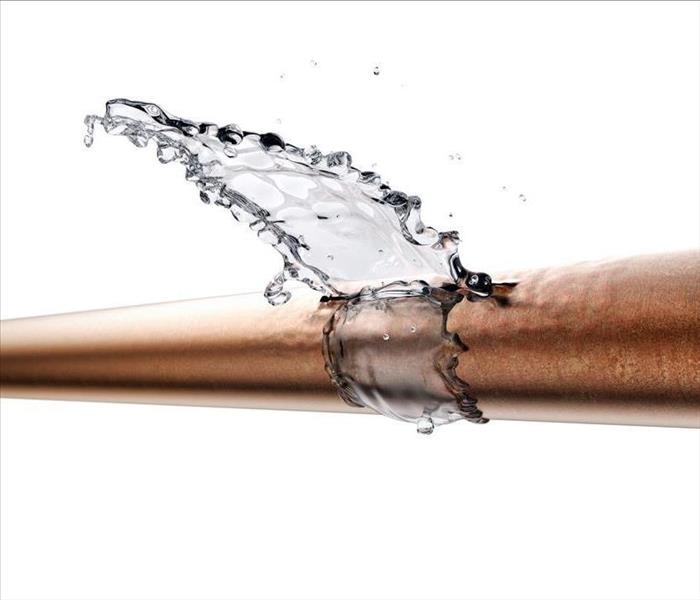 Bursting pipes can be a leading cause for commercial water damage.
Bursting pipes can be a leading cause for commercial water damage.
Whether your business in North St. Paul, MN has a broken pipe or another common issue that can lead to water damage, it’s often helpful to know how to react to prevent major damage from occurring. Knowing what problems commonly occur and how to react can help you prevent your business from sustaining water damage.
3 Common Problems That Cause Water Damage
1. Sewer Backups
Sewer backups are often caused by blockages, and backups can result in costly repairs. However, knowing the signs of a sewer backup can help you prevent your business from flooding. If a sewer is backed up, you may notice that your sinks or toilets aren’t draining as quickly as they should. If you do have a backup, it can be helpful to have a plumber inspect your sewer lines, and regularly having your sewer lines cleaned can help to prevent future backups.
2. Pipe Issues
While a broken pipe can cause a building to flood, a leaky pipe can also cause damage to a business. Often, you can temporarily fix a leaky pipe by sealing it. However, because a leaky pipe could be an indicator of other issues, you may want to have your pipes examined to ensure there aren’t any hidden problems. In the case of a pipe that is broken, turning off the water in your building is often the best solution.
3. Faulty Appliances
In addition to sewer systems and pipes causing water damage, appliances can also be the cause of water damage. Frequently cleaning your appliances can help prevent them from malfunctioning. However, if you do notice that an appliance is leaking, backed up or is simply not working as it should, knowing how to safely and quickly shut off the appliance can be helpful.
Understanding what water damage issues commonly occur in businesses and knowing what to do if you notice these issues can help protect your business. If your business has been damaged from a broken pipe or other problems, it can help to work with water repair experts.
How To Protect Your Roof After Fire Damage
9/28/2020 (Permalink)
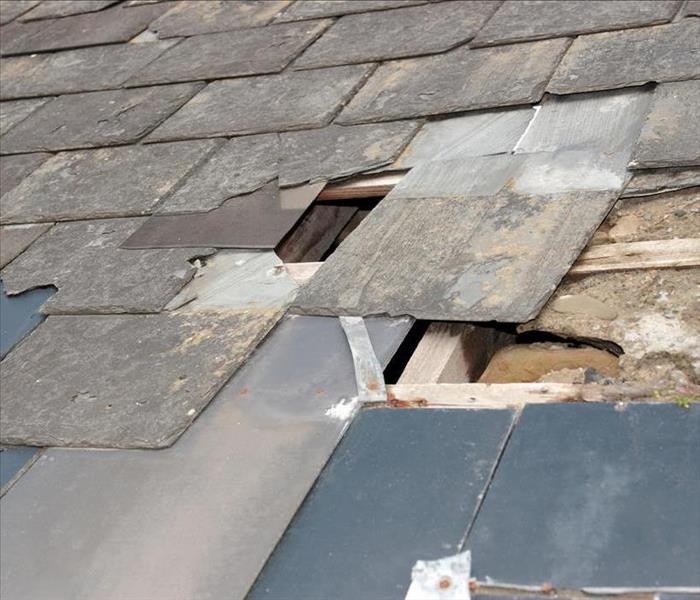 Secure the roof so that no further damage happens to your building.
Secure the roof so that no further damage happens to your building.
When a fire breaks out in your building in White Bear Lake, MN, one of your first calls will likely be to professional restoration services for fire cleanup. One of the first things they will do is secure the roof so that no further damage happens to your building. Having a tarp professionally installed on the roof can prevent excessive water damage from rain as well as keep extra dirt and debris from fall through to the attic.
Applying the Tarp
The benefit of having a tarp placed on your damaged roof by professionals is that you know it will protect your building while it's being repaired. Professional tarp services include the following steps:
- Anchoring a board to the roof
- Placing the tarp over the anchor board
- Applying a second board on top of the tarp to hold it in place
- Ensuring the tarp extends over the roof's edge
- Securing the boards and the tarp so they don't become detached
A tarp that is properly secured protects your building throughout the fire cleanup process by covering any holes created by the flames or resulting from the repair process itself. Technicians should replace the tarp whenever they are not actively working on the roof.
Preventing Damage
When your building needs roof repair, it becomes vulnerable to many outside elements. A rainstorm could cause significant leaking, which, if not remedied in a timely manner, can turn into a mold infestation. Debris can blow into the building from the holes in your roof. An unsecured roof can also be tempting to animals such as birds and squirrels that are looking for a place to nest. By covering the roof any time they're not working on repairs, your technicians help you avoid these problems.
Protecting your building from secondary damage is essential during fire cleanup. From assessing the problem to completing the restoration, experts are here to help.
Involve Your Insurance Company for a Water Damage Claim
9/23/2020 (Permalink)
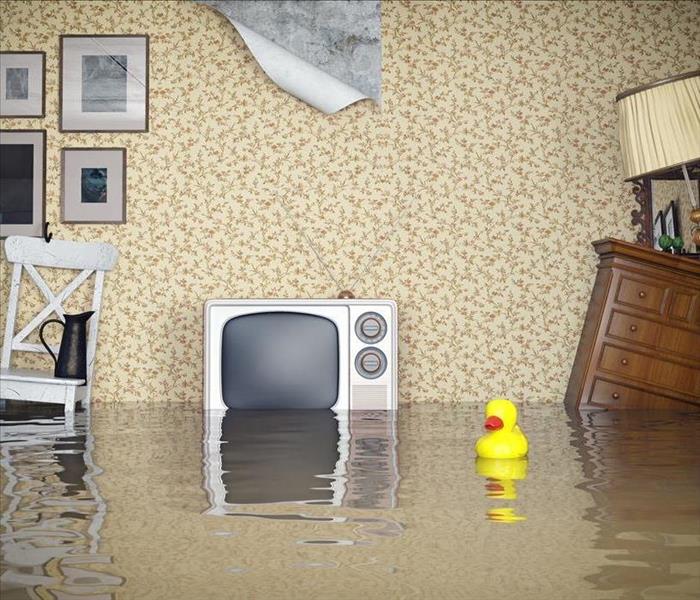 Water damage can be due to a bursting pipe or heavy rainfall.
Water damage can be due to a bursting pipe or heavy rainfall.
When your home has flooded because of a pipe burst situation or heavy rainfall, filing an insurance claim may not be one of the first things on your mind. However, the sooner you file your claim, the better the results for your home and your claim. Don't start cleaning up the water or moving your belongings around until after you have spoken to an agent. You may actually cause more damage or hurt the outcome of your case by jumping straight to cleanup and repairs.
3 Steps To Follow After Suffering Water Damage
1. Immediate Water Damage Response
Contact your agent as soon as possible because a quick response to water damage is vital. You'll need the following information to share with the insurance company:
- A copy of your insurance policy
- Details of the water damage (avoid using the word "flood")
- An inventory of your damaged property
- Contact information for anyone involved
- Questions about how to proceed
In some cases, your insurance agent may have recommendations about who to contact for water damage cleanup and repair.
2. Your Next Steps
After contacting the necessary professionals to start the insurance claim process, there are several more steps you can take. These involve taking pictures of the damage and creating a safe place to store receipts and documents relating to the damage. You may also want to contact an adjuster for a second opinion regarding the costs of damage, losses, and repair.
3. Mitigation Steps
During your conversation with insurance professionals, you may be advised to start removing water, boarding up holes, and other preventative steps. If you fail to complete these tasks, further damage may occur, and the new damage may not be covered by your insurance. Remember to save receipts and make notes about any new information you discover.
Most of the time, you'll have better success with your insurance claim if you involve restoration experts in the cleanup and repair of your home in White Bear Lake, MN. These experienced professionals may also help you work with the insurance company for better results. Keep communication lines between all parties open and respectful for the very best results.
How To Prepare Against Flood Damage
9/18/2020 (Permalink)
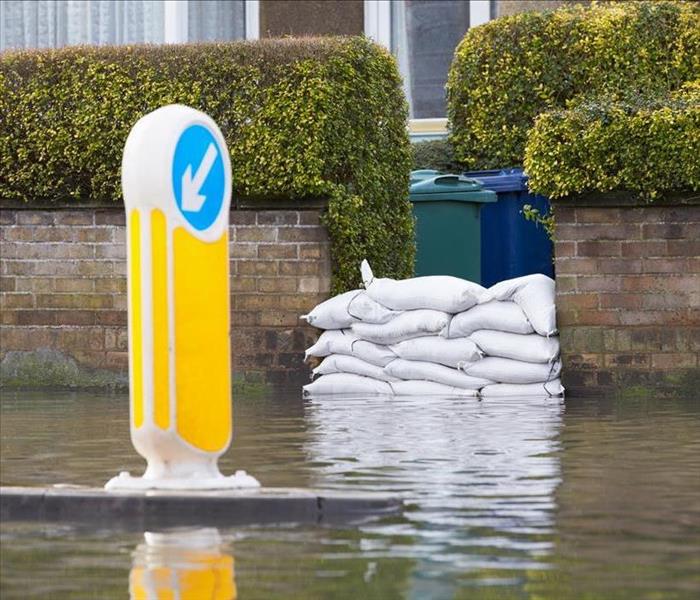 You can prevent most storm damage caused by flooding by placing a temporary barrier.
You can prevent most storm damage caused by flooding by placing a temporary barrier.
How prepared are you for the fall weather? This time of year brings about some of the most severe weather patterns, which can leave your home vulnerable to flooding and other storm damage. Instead of worrying over the possibility of damage, contact a storm mitigation company in North St. Paul, MN, to help you plan for prevention. Most companies will suggest at least three methods for reducing or eliminating the risk of a flood.
3 Methods For Reducing The Risk Of A Flood
1. Secure Loose Yard Items
While water is a prominent part of flood damage, many people forget about loose debris that may collide with your windows or other vulnerable entry points. Therefore, one of the first things you should do if worried about floods is to secure any loose lawn ornaments or furniture. While some items may be heavy enough not to float away, others can lead to extensive issues. You can secure items with long stakes and ties, or even by placing cinder blocks or other heavy objects on top of the things. It may also be a good idea to secure the item in a garage or other outdoor building where it cannot cause damage.
2. Elevate Sensitive Materials and Appliances
While flooding poses a significant risk to your house's structure, it also poses a threat to your sensitive documents and appliances or devices. If you are aware of a flood threat, then make sure that all items are raised above the estimated flood level.
3. Place a Temporary Barrier
You can prevent most storm damage caused by flooding by placing a temporary barrier. Use sandbags stacked above the estimated flood line to create a blockade from water. You may need to set pumps inside the border to prevent the water level from rising on both sides, but a pump and barrier can protect your property.
Fall is a season for severe weather. If you are concerned about potential flooding, then contact a local mitigation company to discuss preventative steps.
Understanding Fire Safety Protocols
9/15/2020 (Permalink)
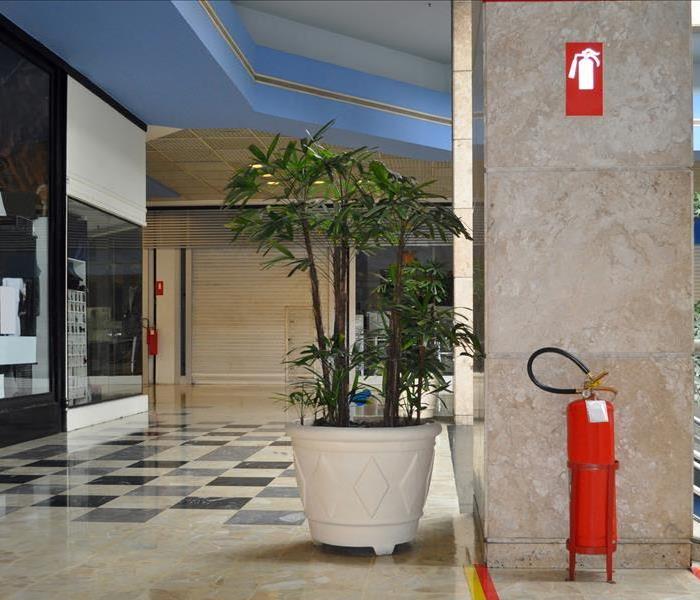 Every person in your building needs to know how to use an extinguisher.
Every person in your building needs to know how to use an extinguisher.
Safety is an important aspect of every building's established procedures. It's not enough to have your protocols written down in a manual and tucked away on the shelf, though. You must make sure that every employee knows the fire safety practices for your building in White Bear Lake, MN. At minimum, everyone needs training on how to use a fire extinguisher and what to do in the event of an emergency.
Fire Safety Practices That Every Employee Should Know
Extinguisher Usage
Every person in your building needs to know how to use an extinguisher. According to fire damage experts, correct usage follows the P.A.S.S. method:
- Pull the pin to break the seal.
- Aim the nozzle at the base of the fire.
- Squeeze the handle to release the contents of the canister.
- Sweep the spray back and forth along the base of the fire.
Not every flame requires calling emergency services. Often, a small fire can be doused with the tools you have on hand. For example, a small kitchen fire in your break room should be easy to put out with a fire extinguisher. If the canister is emptied and the fire still persists, however, it is time to get the professionals involved.
Emergency Assessment
If a fire is too big to put out with an extinguisher, evacuation procedures should be immediately put into action. Everyone in the building should have the training necessary to know exactly what to do in the event of an emergency. In addition to regular training and fire drills, evacuation routes should be posted in prominent locations on every level throughout the building for easy reference.
Understanding fire safety practices such as using a fire extinguisher and when to evacuate the building is essential for everyone who works in your building. The more people know about the protocols you have in place, the more likely they are to be able to get themselves and others to safety should a fire occur.
What is a Category 3 Water Damage?
9/4/2020 (Permalink)
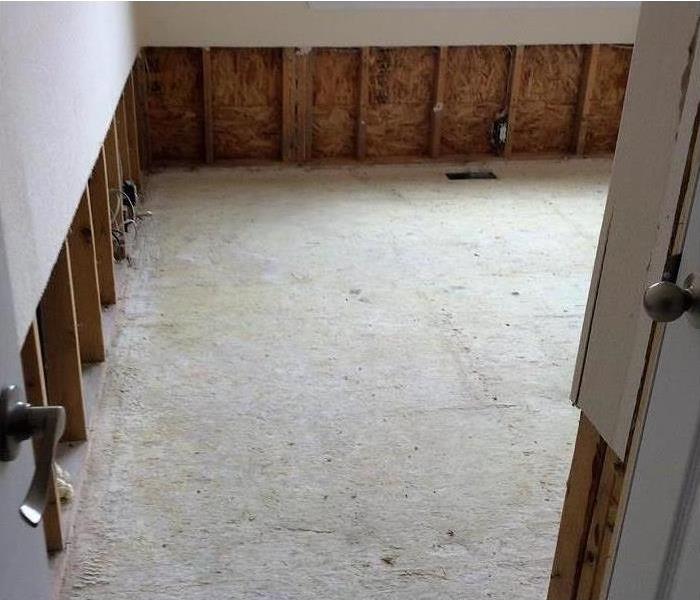 Sewage Damage needed to be removed from this home. The drywall, carpet, and pad will all be replaced.
Sewage Damage needed to be removed from this home. The drywall, carpet, and pad will all be replaced.
What is a biohazard? The term biohazard refers to any biological materials (microorganisms, plants, animals, or their byproducts) that pose a threat to the health of living organisms.
By IICRC water categories, sewage is considered a category 3 "Black Water"
Category 3 water is grossly contaminated and could cause severe illness or death if ingested and any contact should be avoided. Examples include flooding from rivers or streams, water from beyond the toilet trap, water from the toilet bowl with feces, or standing water that has begun to support microbial growth.
- May contain untreated sewage, harsh chemicals, and microbes
- Water from flooding rivers or sewer backup
Sewer backups should be considered an emergency since the water may contain viruses, bacteria, and other microbes that cause serious illnesses. SERVPRO Professionals have specialized training and equipment to quickly and safely clean contaminants like sewage.
Don't wait for the damage to get worse. Call us today to have your home cleaned from Category 3 Water Damage.
Preventing a Worse Water Damage
9/4/2020 (Permalink)
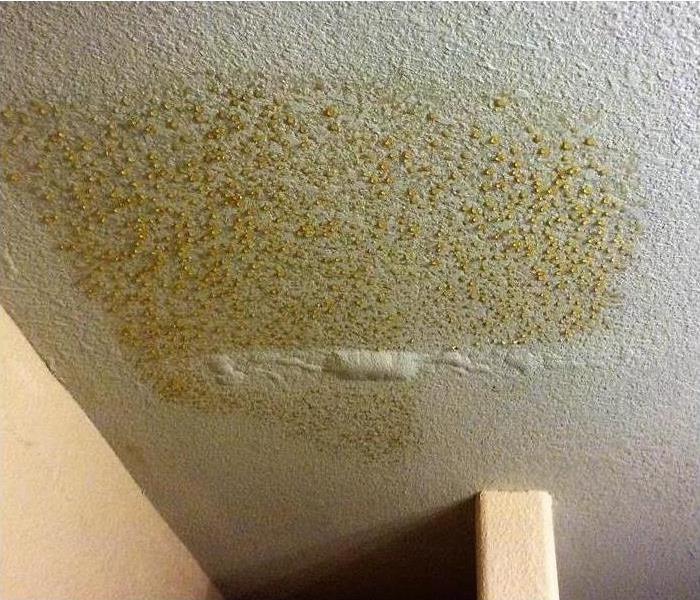 Water from above caused the ceiling damage to this White Bear Lake home.
Water from above caused the ceiling damage to this White Bear Lake home.
Removing surface water can help prevent more extensive damage. However, water intrusions invade floors, ceilings and walls to find the lowest point in your home. Standing water from an overflowing bathtub or other water incident will search for pin hole crevices and cracks in your floors and walls looking for a way to travel downward. Surfaces such as wood, drywall and carpet pull water away from plain sight and into the interiors of your home. Below is what you can do as you wait for the professionals from SERVPRO to arrive:
- Shut off the water source if possible or
contact a qualified party to stop the
water source. - Turn off circuit breakers for wet areas of the
building, if access to power distribution
panel is safe from electrical shock.� - Remove as much excess water as possible by mopping or blotting.
- Wipe excess water from wood furniture
after removing lamps and tabletop items. - Remove and prop up wet upholstery
cushions for even drying. - Place aluminum foil or wood blocks
between furniture and wet carpeting. - Remove to a safe, dry place any paintings,
art objects, computers, documents and
other materials that are valuable or sensitive
to moisture. - Do not enter affected areas if electrical
outlets, switches, circuit breakers or electrical equipment are exposed to water. Always avoid electrical hazards. - Don’t use a household vacuum to remove
water. This could cause electrical shock or
damage to the vacuum.
Filing a Flood Insurance Claim
8/26/2020 (Permalink)
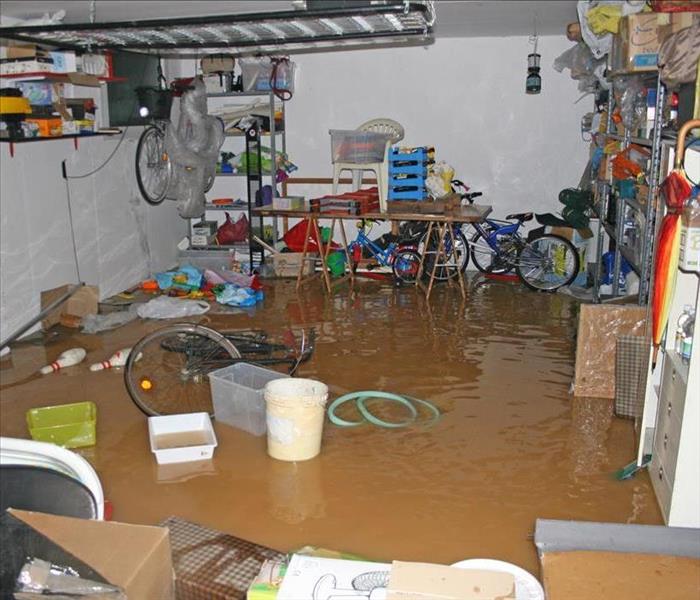 Flood Damage in a White Bear Lake, MN, home.
Flood Damage in a White Bear Lake, MN, home.
While making a flood claim may sound like an intimidating process, any storm remediation professional in White Bear Lake, MN, can tell you the process is straightforward. After the flood, there is a standard four-step process you can follow to protect your claim and ensure its approval.
- Call insurer
- Mitigate loss
- Clean
- Compile proof of loss
4 Steps to Filing a Flood Insurance Claim
Call Insurer
You will first want to call your insurance representative and explain the cause of the disaster and when it occurred to get the insurance claim process moving. The sooner you can notify the insurance company, the better because they need to schedule an adjuster to come out and assess the damage to your property. Most adjusters have a busy schedule, which means they may not visit the site for a few days or more.
Mitigate Loss
A significant portion of the flood claim process will rely on the homeowner and the remediation company they hire. The primary aim before the adjuster gets to the property is to mitigate further loss. You will want to cover holes and excavate excess water. Also, dehumidifiers, fans and pumps may be used to speed up the drying process.
Clean
While waiting for the adjuster to visit, you can begin cleaning your house. However, do not be too quick to dispose of damaged or insured items. You will need a record for the insurance agent when they arrive. Cleaning the property allows the adjuster to walk the premises and spot damage more easily.
Compile Proof of Loss
You may want to organize damaged items for the adjuster to inspect. Also, it is an excellent idea to compile any receipts you may have for the items to help in the valuation process.
A flood claim need not be a confusing or overwhelming process. If you organize the mitigation and cleanup, remediation and claim procedures are more approachable. Talk to a remediation specialist for greater insight into the claims process.
SERVPRO Is Faster to Any Size Disaster
8/20/2020 (Permalink)
 SERVPRO Is Faster to Any Size Disaster
SERVPRO Is Faster to Any Size Disaster
When a catastrophe happens at your commercial property, it makes no difference if it’s a fire, flood or storm. What matters is how quickly you can recover your building. SERVPRO is faster to any size disaster.
More Services
SERVPRO offers a wide range of commercial assistance. If your building was recently hit by extreme weather or a similar disaster, SERVPRO can have a team on the scene immediately to provide an array of services:
- Fire damage restoration
- Water damage restoration
- Flood recovery
- Mold mitigation
- Storm damage restoration
SERVPRO can also lend a hand if your facility needs a thorough, professional cleaning. From chemical spills to biohazardous materials, your local recovery team has the tools and training required to safely disinfect and sanitize your space in keeping with the most up-to-date regulations and guidelines from the Centers for Disease Control. SERVPRO also offers defensive cleaning perfectly suited for restaurants and similarly high-traffic public spaces.
More Locations
SERVPRO is faster to any disaster for two reasons. First, it has over 1,7000 franchises across the United States. Finding the location nearest to White Bear Lake, MN, is as easy as calling 1-800-SERVPRO or clicking the "Locate a Local Franchise" button on the SERVPRO website.
Second, the professionals at your local SERVPRO office are on call 24 hours a day, 7 days a week, 365 days each year. Teams of skilled men and women are perpetually standing at the ready to begin the recovery effort at your commercial property.
More Credibility
The majority of insurance companies in the United States prefer SERVPRO. Your local franchise makes filing an insurance claim simple and stress-free. Pretesting, for example, is just one way that SERVPRO helps keeps costs down. Whenever possible, SERVPRO teams restore or repair instead of replace. They can also create detailed inventories and submit claims electronically for fast, accurate results.
SERVPRO is a local company with a national network. When the unexpected happens, it’s reassuring to know that you can count on its recovery teams to be faster to any disaster.
What does it mean to be #OneTeam?
8/7/2020 (Permalink)
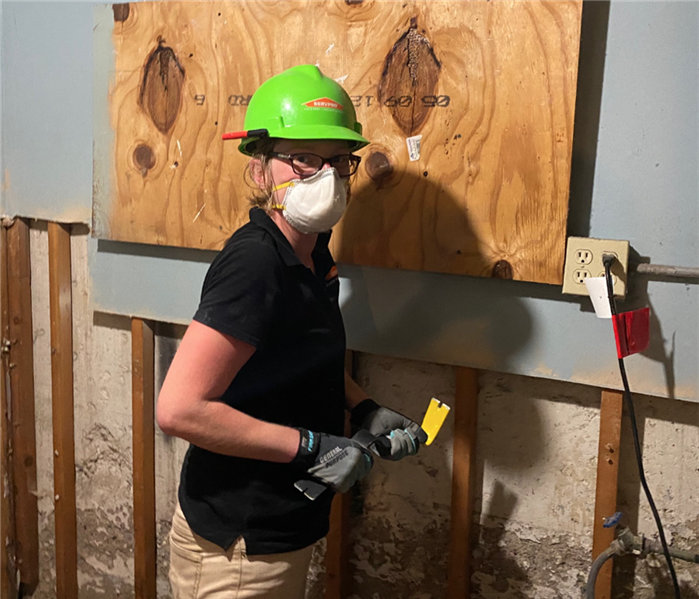 Demolition in the basement of a Commercial Building
Demolition in the basement of a Commercial Building
“We all started out sweeping out the back of the truck…” is a prelude to the #TeamValdez story that I have heard more times than I could count.
Sweeping out a van is something I could conceptualize – broom, van, done – I have in fact seen our guys do it every day. However, what goes on after the morning job board meeting and before the “sweeping out the van” has always eluded me. Sure, conceptually, I know what the production crew does, but practically, I have no idea.
What it means to be Team Valdez
#TeamValdeaz has always prided itself on being a true team, and with SERVPRO’s #OneTeam initiative and our new franchise purchase, I got he chance to (literally and figurative) get my feet wet. I have spent the last couple of weeks in Minnesota at our North St. Paul / White Bear Lake location and have learned more than I could have ever anticipated. While we have been staffing our crew here, I told our guys that #TeamValdez was #OneTeam, and to let me know what they needed – I had their back.
Well let me tell you, I got the chance to put my words to action. Just over a week ago, we received a commercial water loss, and I was one of the crew members that responded. I helped with stabilization, contents, and today – demolition!
#OneTeam means doing what you need and not letting your teammates do it alone, putting down the calculator, picking up the crowbar and hammer, putting on some demo tunes, and getting dirty together!
It has been so exciting and insightful to see the whole process, from getting the call to seeing the production side through, and has allowed me to gain a better big picture view to help in my everyday role with #TeamValdez!
Basic Disaster Preparedness Steps
7/24/2020 (Permalink)
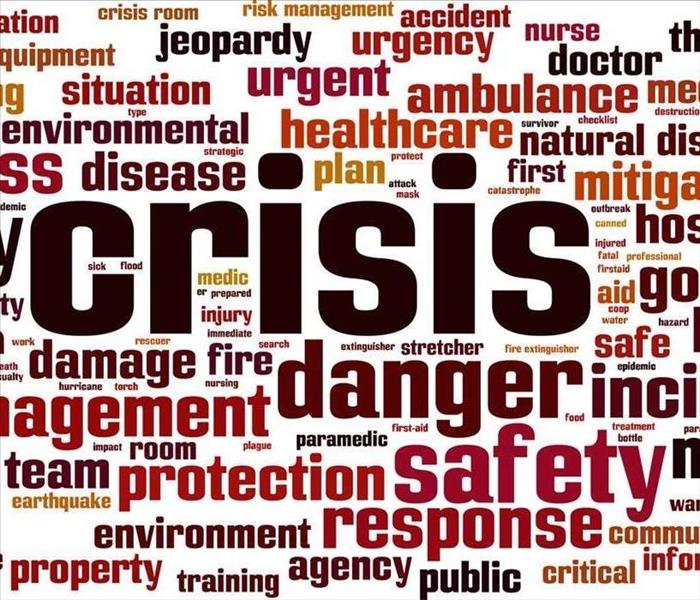 Disaster Preparedness can help you avoid a crisis during an emergency.
Disaster Preparedness can help you avoid a crisis during an emergency.
Natural disasters present a lot of pressing challenges to business owners, and it can be difficult to determine the best route for disaster preparedness. After all, the preparedness plan must include answers to many potential scenarios:
- What if roads are blocked and your employees or suppliers can't get through?
- What if winds knock down power lines?
- What should happen if your building is damaged by wind, rain, flooding, or other natural elements?
- How will you respond if employees are injured during the disaster?
These and other concerns must be addressed by your business preparedness plan. Here are a few basic steps you can take to get started:
3 Steps For Disaster Preparedness
One: Plan for Employee Safety
This should include installing fire extinguishers, first aid kits, and other safety equipment. Don't forget to create and practice an evacuation plan. You may also want to put together a phone tree for maintaining communication with staff and employees. Write up a contact list with customers, disaster cleanup professionals, employees, insurance providers, and suppliers.
Two: Purchase Appropriate Insurance Coverage
Not only does this step give you peace of mind knowing that any damage will be covered financially, but it also gives you access to valuable disaster preparedness and risk-avoidance advice. An experienced insurance professional will give you tips that are specific to your White Bear Lake, MN, business.
Three: Establish a Second Location
During a major storm, it's often possible to remain operational by setting up a temporary workspace. You could also set up your software, programming, and other data in a cloud service, so employees can do their work from home.
Of course, there are many other things to consider, such as protecting your building from damage and how to determine when it's safe to return to your building. Fortunately, there are many valuable resources online, through your local government agencies, from your insurance provider, and through local emergency authorities, such as the fire department. Make time today to begin your plan or to update your existing disaster preparedness plan.
Tips for Effectively Using Security Fencing After a Fire
7/21/2020 (Permalink)
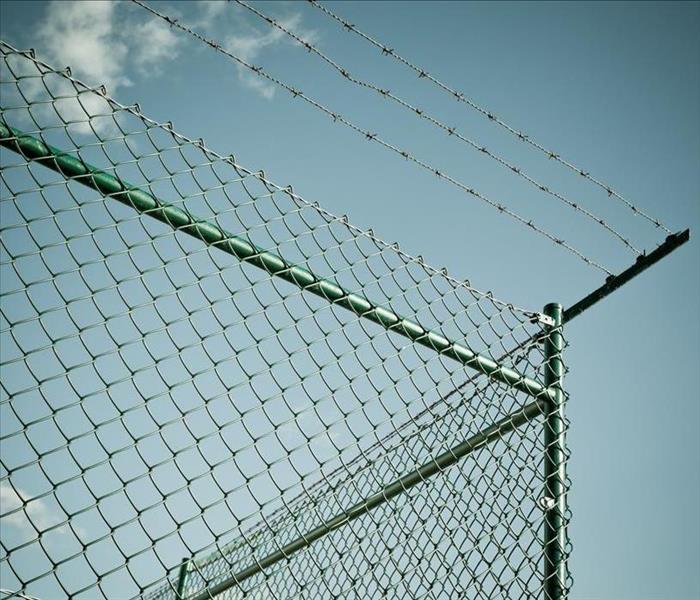 A security fence is important after a fire at your North St. Paul, MN, commercial property.
A security fence is important after a fire at your North St. Paul, MN, commercial property.
When your North St. Paul, MN, business has suffered fire damage, putting up a security fence may not be the first thing you think of. After all, what do you have to lose when your building and its contents have been burned up? There are several reasons to put up this layer of protection around your property:
- Damaged buildings tend to attract people with vandalism or theft on their minds.
- You could be held liable if intruders are injured while in your fire-damaged building.
- If people wander around inside your building, they could cause further damages that won't be covered by your insurance policy.
- The insurance company could require fencing as a preventative step.
When you hire a fire damage remediation company to board up holes in the roofing, ask them to put up fencing as well.
Maintain a Secure Barrier
Once you've recognized the need for a security fence, use the following tips to make sure the barrier is effective:
- Make sure there's a clear view of the fence. If there are bushes or trees close to the fence, trespassers will use these areas to get over the fence without being seen.
- If your building is located in an area without streetlights, consider installing some lights around the perimeter of the fence. Position your lights inside the fence where they can't be disabled by anyone with criminal intent.
- Keep up with maintenance on the fence. If the fence belongs to the fire damage remediation company, you won't have to worry about this step. However, you can make sure the fence is protected from pests, weeds, and other natural elements.
- Recognize that the gate is the weakest point of the fence. Use a strong lock to keep the gate shut and make sure there's plenty of light focused on this spot.
Work closely with the professionals who are handling the fire cleanup and damage remediation to make sure the fence is an effective barrier.
Security Reduces Losses
A security fence is an important step in cleaning up and moving on after a fire at your North St. Paul, MN, commercial property. This security step can end up saving you a lot of time and money throughout the fire restoration process.
The Importance of the Mold Remediation Process
6/29/2020 (Permalink)
 The crew you hire will need to take proper precautions to remove mold safely.
The crew you hire will need to take proper precautions to remove mold safely.
Too many homeowners believe that mold growth can be handled in typical DIY fashion, but that is a mistake. There are several mold varieties that a person should not expose themselves to unless they have the proper training, which is why a remediation company in North St. Paul, MN, is strongly recommended for the removal process. The standard method involves five steps.
- Safety
- Containment
- Waste removal
- Cleaning
- Restoration
5 Steps Involved in The Standard Method for Mold Remediation
1. Safety
Depending on the mold species, the crew you hire will need to take precautions. On the first day, they will collect samples of the mold damage and send those samples to a lab for identification. If the mold is a toxic variety, then the crew will need to wear full protective units, gloves and ventilators. For more docile species, a face mask and gloves will suffice.
2. Containment
The remediation company may seal off the affected area to prevent further exposure. It is also common for the team to spray down the mold with water to prevent mold spores from escaping to other areas of your home while being disposed of and collected. The team will also resolve any issues of water damage.
3. Waste Removal
For generic mold growth, waste removal is straightforward, but toxic species require more preparation and caution. Teams will seal the collected pieces in airtight bags before walking them out of the infested space.
4. Cleaning
Once the mold is removed, the remediation company will begin cleaning the affected space. They will use several commercial cleaners and disinfectants to kill any remaining spores before moving on with the restoration of your home.
5. Restoration
During the restoration phase of the process, the team will replace any drywall and insulation they removed. They will also make sure that the wall studs are structurally sound. The objective is to restore your home to predisaster conditions.
Mold growth can be devastating to homeowners.
A mold remediation company is essential to freeing your space of the infestation. Do not attempt to do it alone.
Tips to Securing Your Building After a Fire
6/17/2020 (Permalink)
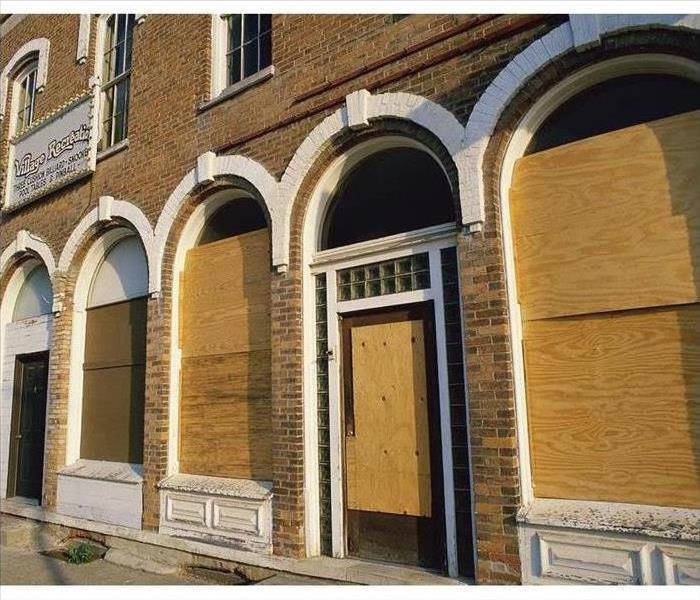 Board up doors and windows, as many of these have likely been compromised due to the fire.
Board up doors and windows, as many of these have likely been compromised due to the fire.
The effects of a fire in your office building can be devastating. Even minor fire damage can become a burden on your business. In severe cases, you won’t be able to enter your building until cleanup and restoration crews make it safe to do so. In the meantime, it’s important to secure your facility to prevent mischief or thievery.
The Rationale
You’re already facing turmoil and stress having to relocate your business and pick up the pieces after a terrible ordeal. You don’t want to have to add insult to injury by dealing with people breaking into your building. Looting is common in temporarily closed buildings.
- Your insurance company will probably require you to secure your facility.
- Emergency services personnel will direct you in how to best secure your building.
- Do not attempt to go inside your building without permission from emergency services.
Close all Entrances
During normal operating situations, you’ll lock your doors and may even have an alarm system deterring suspicious activity around your building. However, fire damage may make these protective measures obsolete, and looters may see a golden opportunity. Board up doors and windows, as many of these have likely been compromised due to the fire.
Board up Other Possible Entry Points
Looters won’t hesitate to find other ways to get inside your building. After the fire, there are likely gaps and holes in the structure where someone could access the facility. Look for any other spots you need to board up and make sure they are secure.
Consider Security
One of the best ways to keep people away from your White Bear Lake, MN, building during the fire cleanup and restoration process is to place a security guard or two on site. This extra cost will be well worth your efforts.
Fire damage can be difficult enough to contend with; you don’t want people breaking in your building. Make sure you follow these guidelines to ensure items inside your office remain untouched.
Do You Have an Emergency Preparedness Plan for Your Pet? You Should!
6/17/2020 (Permalink)
 Keep your pets safe
Keep your pets safe
Pets are family too, and as such, they need to be included in their families' fire emergency preparation plans. If you have a furry friend, you need to establish a pet preparation plan that guides you and your other family members on what to do in the event of an emergency to ensure that your canine, feline or other pet makes it out of the home safely, too.
Preparing Your Pets for Fire Emergencies
Some considerations to make when devising your plan are as follows:
- How to keep your pets from causing fire emergencies
- What supplies your pet will need in the event of an emergency
- How often you should practice your pet safety plan
- What to do if you are forced to evacuate
By taking each of the above into consideration ahead of time, you can devise a plan that will better help you respond in the face of a real fire emergency.
Prevent Your Pets From Starting Fires
The National Fire Protection Association estimates that approximately 1,000 house fires are started by pets each year. You can prevent your pets from starting fires by practicing the same safety measures as you would with your children. Remove stove knobs, extinguish open flames, use flameless candles and secure young pets when you leave the house.
Know What Supplies You'll Need, and Practice!
To increase your response time, have an emergency bag ready to grab and go in the event of a fire. This bag should contain everything your pet will need to stay comfortable and healthy while away from home, such as canned dog food, medications, identifying tags and the like.
In addition to preparing a bag, practice the plan. Train them to come when you call that way you're not looking for them when you should be running out of the house.
Prepare for Evacuation
Evacuation in the event of a fire is a very real possibility. Have a safe place to where you and your pet can go until it is safe to return to your home.
Your fire emergency plan should provide for what to do with your pet in the event of an emergency. If it doesn't, work with your White Bear Lake, MN, fire safety team to devise an effective plan today.
Fighting Mold and Secondary Damages
4/23/2020 (Permalink)
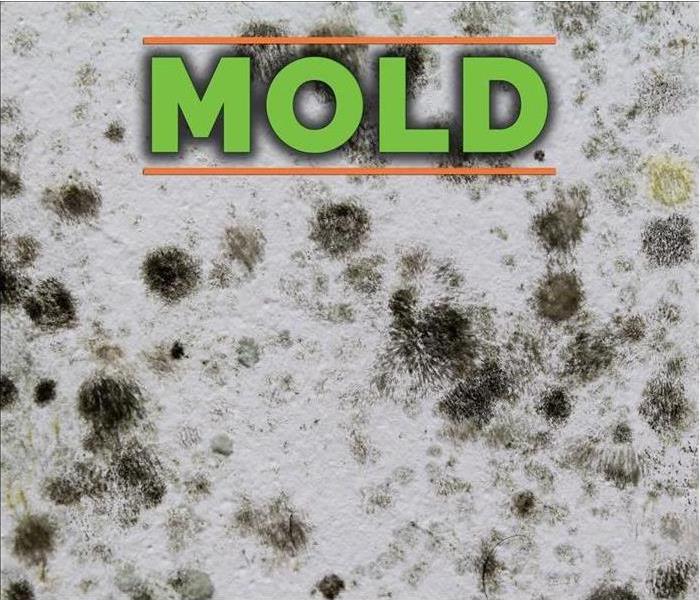 After suffering water damage in your commercial property in North St. Paul, MN you may suffer secondary damages.
After suffering water damage in your commercial property in North St. Paul, MN you may suffer secondary damages.
After floodwaters have receded from your North St. Paul, MN, commercial property, the risk of secondary damages sets becomes an issue. Unfortunately, the potential for hidden risks is significant, and even months after the water has completed dried away, there may ongoing effects. One of the most significant sources of secondary damage is the presence of black mold.
What's the Truth About Mold?
What is black mold? While it may not be quite as frightening as it's sometimes made out to be, there are still serious reasons to clean it up and prevent future growth:
- Many types of mold produce mycotoxins that can't be seen.
- Mold gives off an unpleasant musty odor.
- It is hard to get rid of mold stains from walls, ceilings, and other surfaces.
- When mold attacks wood beams, bricks, and wallboard, it causes a lot of structural damage.
The best way to be sure that secondary damage doesn't result from flooding is prevention. If there's high humidity throughout your property, contact a water damage remediation team to thoroughly clean and disinfect all areas affected by flooding and high levels of moisture.
How To Prevent Ongoing Damages?
Secondary damages are fairly common after bursting pipes, toilet overflows, sudden flooding, or heavy rainfall. The good news is that, in addition to the work of water damage cleanup and disinfection technicians, there are several steps you can take to limit further damage. These include inspecting your property for dripping or leaking water, areas of heavy moisture, and hidden damages. It's also important to provide proper ventilation to rooms that continually have a lot of moisture. As soon as you find any water or moisture, clean it up and thoroughly dry the area. With these efforts, you can keep recovery costs down and prevent future trouble.
Isn't the Danger Past?
Black mold often occurs when property owners believe that the danger is over when there's no sign of water. Unfortunately, hidden pockets of moisture provide excellent hiding places for mold growth. Protect your North St. Paul, MN, property by keeping an eye out for signs of water, mold, and further damages.

 24/7 Emergency Service
24/7 Emergency Service




















































































